
It’s been 3 years and 2 days since Garmin announced the Forerunner 945, and today, it’s finally properly refreshed with the Forerunner 955. Except, it’s actually two watches – the Forerunner 955 & the Forerunner 955 Solar. Today’s announcement marks the first time we’ve seen solar in the Forerunner family. And similarly, it also marks the first time we’ve seen the more accurate multi-band/dual-frequency capability in a Forerunner watch (previously on the Fenix 7/Epix series). And finally, the first time we’ve seen native running power in a Garmin watch.
However, despite all those hardware innovations, I’d actually argue the most interesting new features here aren’t hardware at all – it’s the software changes. The Forerunner 955 picked up all the Fenix 7 software additions, but then added a massively revamped, and expanded, slate of training load and recovery tools, including detailed HRV status tracking and something called Training Readiness. This Training Readiness feature finally takes the hodgepodge of countless different Garmin body-related metrics, and puts them into one clear recommendation, with details on why it gives the guidance it does.
Oh, and the Forerunner 955 wasn’t the only watch announced today. They also announced the new Forerunner 255, which steps up to become a full multisport watch with much of the same new functionality seen on the Forerunner 955. I’ve got my full in-depth review here on that here.
As usual, this watch is a media loaner, and it’ll go back to Garmin shortly. This review is not sponsored (nor does any company get to preview anything I review), and I don’t take any advertiser money from any companies I review. And as regular readers know, if something is crap, I’m gonna tell it brutally like it is – no matter the brand (as Garmin saw just two weeks ago). Once this unit goes back, I’ll go out and get my own for any future testing needs. If you found this review useful, you can use the links at the bottom, or consider becoming a DCR Supporter which makes the site ad-free, while also getting access to a mostly weekly video series behind the scenes of the DCR Cave. And of course, it makes you awesome.
What’s New:
The Forerunner 955 packs in a massive slate of new features, compared to the previous Forerunner 945 (or FR945 LTE). However, there is a large chunk of them that was previously introduced on the Fenix 7 & Epix series some five months ago. Still, there are also legit new-to-Garmin features, virtually all of which are also coming to the Fenix 7 & Epix series. More on that a little later in this section.
So here’s the massive list I’ve compiled of what’s new compared to the Forerunner 945 or Forerunner 945 LTE (there are a handful of items noted below that the Forerunner 945 LTE already has). Of course, the reality is there are even more new items than this that are just too tiny to find/list here:
– Two variants now: Non-Solar ($499) & Solar ($599) – the only difference here is the solar bits
– Added Touchscreen
– Added Solar Power
– Added Multi-band GPS support (dual-frequency support)
– Added sorta-native running power (native fields/recording, but requires RD pod/HRM-PRO/HRM-TRI/HRM-RUN)
– Added Running-power specific training zones
– Added Training Readiness, a short-term daily readiness metric
– Added HRV status tracking (at night)
– Added Morning Report (summarizes HRV, Sleep, workout plans, etc…)
– Added New Race Calendar & Race Details/Countdown Widgets
– Added New Race prediction widget
– Added Acute Load metric
– Added the ability to redirect Emergency Assistance to a single person
– Added data carousel within certain watch faces
– Added Daily Health Snapshot
– Added ‘Up Ahead’ feature for distances to predefined markers like aide stations, climbs, etc…
– Added real-time Stamina feature, which is used during runs & rides to try and leave nothing in the tank (or, properly manage a workout)
– Added Race Predictor historical trendlines (to see if you’re getting faster or slower)
– Added Automatic Run/Walk/Stand graphing within a workout (see sports section for details)
– Added Spectator Messaging (seen on FR945 LTE, requires phone though on FR955)
– Added new graphical charts as data fields
– Added the ability to configure watch activity profiles and data fields from your phone
– Added Garmin Connect IQ store on wrist (well, a limited version of it anyway)
– Added new “Map Manager” feature for managing/downloading maps from your wrist via WiFi
– Added Garmin SkiView, now includes resort names & slope names
– Added Cross Country Ski Trails to maps
– Added Touchscreen Swipe from left to create a lap
– Added Power Manager (though, not as full-featured as Fenix 7)
– Massively overhauled how Training status/load works (more details lower down)
– Changed Training Load Focus to be aware of your entire race calendar
– Daily suggested workouts can now be seen into the future, configuration of long-workout days, more settings, etc…
– Daily suggested workouts can now be tied to future calendar race events, automatically creating workouts for that distance/course
– Changed to Garmin Elevate V4 Optical HR sensor
– Forerunner 955 display is 260x260px ,and 33mm across (the FR255 is identical, the FR255S is smaller at 218×218 and 27.5mm)
There is not an LTE version of the Forerunner 955, and I don’t expect to see one this go around.
So what’s new here that’s not on something like the recently Fenix 7 or Epix? Glad you asked, here’s the main hit-list:
A) HRV Status
B) Daily Training Readiness
C) Acute Training Load
D) Morning Report
E) Native Running Power
F) Race Calendar & Race Event Widgets
G) Daily Suggested Workouts now accounting for races on the calendar
There are lots of tiny things that tie into those (sub-features of those items) or menu/user interface tweaks (for example on a Fenix 7 you can long-press any data field on the watch face, and it’ll take you to the widget details for that data, but not on the FR955), but that’s the gist of it. In any case, as for the pile of features listed above that are new to the FR955 compared to the Fenix 7/Epix series, Garmin says to expect those very shortly, starting with beta rollouts in the recently announced beta program. The Forerunner 945 LTE will also gain all of those features, and also, look to the beta program very shortly for that (the fact that it’s getting everything is massive).
For the Instinct 2 series watches, they also gain a subset of these features to make them sorta-parity to the Forerunner 255. Specifically, they’ll gain items A/C/E above (those are the features seen on the FR255). And again, Garmin says to look to the beta program very shortly for the Instinct 2 beta updates covering these features.
Got all that? Let’s cruise.
The Basics:
In this section, I’m going to cover all of the basics of using the watch. Things like the overall usability and the new touchscreen, but more importantly all of the core daily fitness features like activity tracking, sleep, health tracking, and so on. Widgets, phone integration, etc… Of course, I also do this within my massive beginner’s guide video seen above, which starts off in that area and then gets deeper and deeper as you go along.
No matter which version of the Forerunner 955 you have (Solar or non-Solar), everything remains the same in this section. The only difference between those two units is literally the solar panel. That’s it. So all those differences are discussed in the ‘Solar’ section next.
Starting with the outer hardware, the Forerunner 955 has five buttons like most Garmin fitness watches. Three on the left side and two on the right. In general, the upper right button is your confirmation button, and the lower right is your back/escape button. The left buttons are for navigating in the menu. And you can long-hold any of the buttons to either access different menu items, or assign quick-access buttons.
The new Forerunner 955 touchscreen acts in much the same way as the Fenix 7/Epix touchscreen in that it allows you to navigate/swipe through items, or tap them like pretty much any other touchscreen device. I haven’t had any problems in rain or while sweating. Though as usual, you’ll see a bit less precision with a touchscreen than with buttons. However, there’s *ZERO* dependency on the touchscreen. in fact, the vast majority of the time I don’t use it. I just use the buttons. Garmin’s approach here is to let you choose which way you want to use the watch. If you want all touchy-feely, then go forth, you can do that. If you want all buttons, you can do that too. Or blend the two as I do.
By default, virtually all sports profiles have touch disabled, and then you enable it on a per-profile basis. You can also enable/disable it across the board, or just within all sports across the board. There’s a minor nuance in differences in that on the Fenix 7 series you can also disable it within just sleep too, but that doesn’t appear to be an option here at this time. To be clear, there’s still nightly do-not-disturb mode and such, just not the more advanced sleep-related display settings as found on the Fenix 7/Epix.
In any case, let’s slide back to the watch face. As with virtually all Garmin watches, this is customizable. You can choose from a pile of built-in watch faces and then customize virtually every data element on it, or you can download thousands from the Connect IQ store. Heck, you can even make your own with your face on it or something.
Here’s the Connect IQ app store, where you can download watch faces or create your own using photos. The Forerunner 955 has a 64-color display, which is identical to that of the Fenix 7 series. It is not an AMOLED display like the Garmin Venu or Epix series watches, so it won’t quite be as vibrant colors.
Next, after swiping down from the watch face you’ve got the widgets. Or more specifically, the widget glances. You’ll see roughly three widgets per screen chunk as you scroll through them. These are customizable (and you can download others too from the Connect IQ app store). In general, these are glanceable bits of information about things like sleep, training status, weather, activity, and so on.
You can then tap on any of these to crack open more details about that particular item. For example, if you open the steps widget, you’ll then see more detailed information and additional data pages. The first shows step accumulation throughout the day, and then after that you can look at historical data.
Every bit of data you see in widgets is also synced into Garmin Connect (both the web platform and mobile app), where you can go waaaaay deeper on whatever stats you want. You can be as granular as seeing it down to the minute/hour, or as broad as yearly trends. Here’s a quick look at how that appears for steps for me over the last long-while:
This is true for every metric from steps to sleep to heart rate tracking, breathing rate, and so on. There’s a dizzying list of things Garmin tracks, of which the majority you might never even open. In some ways, that’s long been Garmin’s secret sauce. They know that nobody uses everything, but everyone has some specific thing they want.
For fun, here’s a giant gallery of widgets and details from different ones:
Many of these metrics are derived from data captured by the optical heart rate sensor located on the bottom of the Forerunner 955. This optical HR sensor is powered on 24×7, constantly logging data well beyond just your heart rate. This includes things like calculating breathing rate, HRV, or even blood oxygenation levels (if enabled). The Forerunner 955 uses the Garmin’s Elevate V4 sensor (same as on the Fenix 7/Epix/FR945 LTE/Venu 2 series). The green light is for regular heart rate recordings, while the red light is for blood oxygenation levels (Garmin calls this Pulse Ox):
Beyond obvious metrics like heart rate or breathing rate, there’s a slew of algorithmic metrics. These are things that are unique to Garmin (or, at least Firstbeat, the company which Garmin acquired that develops algorithms but still licenses them to other companies). For example, one is Body Battery. Body Battery is basically your energy level. You recharge it every night, and then decrease it during the day, or during periods of relaxation (like sitting on the couch watching TV). However, with the Forerunner 955 there’s also Training Readiness, which is aimed at figuring out if you should train (or, to what intensity).
Think of it like this: Use Body Battery on vacation to see the impacts of your day when you don’t care about training. Whereas, use Training Readiness when you are trying to get workouts in. Again, tons more later on this in the ‘Training Readiness’ section.
I’ve found Body Battery pretty solid at matching how I feel. Do note that it’ll take a few weeks to nail your exact body, but once it does, it’s pretty good at it. Of course, just because you go to sleep doesn’t mean you refill the tank every day. As you can see above, some nights I get good sleep, and other nights less so. Like trying to charge an electric car, if you unplug it too soon, the tank isn’t full.
The areas where Body Battery tends to struggle is exceptionally long/hard days, like traveling overnight on a redeye without sleep – or simply working through the night. In those cases, usually Body Battery gets down to the single-digit numbers and just kinda creeps to a stop. It knows you are screwed, you know you are screwed, and everyone just looks at each other and says ‘It is what it is’.
Speaking of sleep, the FR955 will automatically track your sleep each night, recording that data both onto the watch, as well as to your account for more details. However, new to the Forerunner 255/955 is the ‘Morning Report’. This screen is shown when you wake up each morning and gives you a bit of a summary of where your body is at (sleep & recovery-wise and training-wise), as well as upcoming bits like the weather. Here’s some of the screens it shows:
You can customize what data you want in the morning report. By default the morning report will stay on the screen until you dismiss it, just like Apple’s similar concept. I’ve found it pretty handy, especially on the FR955 and seeing the Training Readiness score. Keep in mind though that score will likely increase over the course of the day/morning, as it’s heavily tied to your recovery time (from the last workout).
This is also where you’ll see your HRV status information too. HRV is measured on the FR255/FR955 constantly through the night. Garmin takes constant readings, and then displays them in 5-minute increments within the HRV timeline graph shown. That chart also shows your max values for the night. It’s 100% normal that there’s this much fluctuation in it, as your values are often tied to different sleep phases.
I dig into the HRV Status bits a bit later on in the Training Readiness section.
And, if you wanted to see the details about the sleep itself, that’s visible within the morning report, as well as afterwards in the sleep widgets:
It also gives specific peanut-gallery thoughts about your sleep too:
In terms of sleep accuracy, if I compare the stated times it says I fell asleep and woke up, as well as the times it says I was awake, these have all matched on most nights (or the differences are relatively minimal). However, I’m not evaluating sleep phases. If I look at the viable home options to compare sleep stages/phases in terms of accuracy, those devices aren’t that accurate by themselves (only about 80% accurate). We’d never accept comparing other features like optical HR accuracy to an “80% accurate chest strap”, so I won’t accept doing so here. However, I also don’t put much stock in the sleep phase/stage details anyways, so, I’m not too worried about it. I’ve found in general, if you’re getting enough hours of sleep, and that’s uninterrupted sleep, then that’s the main thing to focus on. And the watch can/does at least tell you that correctly.
Next, we’ll briefly touch on blood oxygenation levels, which Garmin calls PulseOx. You can configure this to be off, during sleep only, or 24×7. It has two basic purposes in a Garmin wearable, one is around sleep (as potentially an indicator of sleep-related issues), and two in high altitude environments as an indicator that something is about to go horribly wrong. Two totally different use cases (note: medical folks and such also monitor blood oxygen levels too for other reasons). For the first one – sleep – you can track your Pulse Ox readings each night. It’s the red LED that’ll light up on the back of the watch.
This will consume additional battery, lowering your overall battery a fair bit. Though, not as much as the 24×7 mode, which consumes a crapton of battery. I don’t use either due to battery draw, but only utilize it in spot-checks with respect to Health Snapshot (more on that in a second). However, in terms of accuracy, I find that if you treat it the same way you’d do an actual blood oxygen test with an approved/medical-grade device, you’ll get good results. Which is to say, sit still. And that’s the exact same way the FDA certifies blood oxygen medical-grade devices: Sitting still. If you swing your arms around, you’ll either not get good results, or Garmin these days won’t even give a reading. They (and others) have gotten smarter with just giving you a warning that there’s too much movement for a valid result.
Now as I mentioned, there’s the new Health Snapshot feature. This was introduced on the Venu 2 last year and carried through to virtually all other watches since. It takes five core metrics and distills them down into a single 2-minute measurement period. All you need to do is sit down and relax.
During the 2-minute period it’ll measure your heart rate, blood oxygen level, respiration rate, stress, and HRV (heart rate variability). The idea being you can consistently do this, ideally at the same time each day, and start to get a bit of a snapshot of how things are trending. All of these metrics are already tracked by Garmin more deeply in the app/platform, but this aims to put it on a single plate (so to speak). You can then export it into a single PDF if you’d like as well. As I noted a year ago, there still isn’t any way to track these points over time though. So if you were very specific about doing these measurements the same way every day/week/month, you can’t easily just compare all of these in a graph. Maybe if I keep asking for it, it’ll happen.
Next, we’ll quickly touch on a few non-health things. First up is smartphone notifications. These will come in automatically depending on how your smartphone is configured in terms of what apps notify you. You’ll change all this within your smartphone settings itself, Garmin just displays them as per those settings. These notifications do support some emojis, though not quite everything.
You can’t reply to any of these messages, at least not on iOS, because of limitations imposed by Apple and letting text message apps reply. But, you can dismiss them, which dismisses them on your phone as well.
Next, there’s also the newish Connect IQ App Store. The idea behind this was that you could see recommended apps and easily install them from the watch. This was announced last fall, and then rolled out in the Fenix 7/Epix series. You’ll find the Connect IQ app store listed in the sport profiles. It’s a weird place to put it, but from a technology standpoint it’s how it fits within the Garmin app concept.
Either way, this is properly useless at this point. It offered me a whopping two apps – Deezer and AccuWeather. You can’t browse apps or such, it just gives you a handful (under 5) of apps to consider installing. I’d hoped to see this be vibrant and dynamic full of apps, but again, 5 months later and there’s nothing vibrant, dynamic, exciting, or even intriguing about opening this up to see what it recommends. Because, it never recommends anything.
I get that this concept is still basic and such, but c’mon, at least try here. Heck, just do a random number generator and pick 5 totally random apps from the app store. At least there I have a chance of getting the Pizza Tracker or Beer Pong apps, which would be exciting.
Finally, while it probably won’t matter to many people, do note that in general, virtually all of the functions that involve a smartphone require internet to function. Meaning that while the watch will happily collect data without internet, and do so for a very long time (days/weeks/etc…), it won’t sync to the phone without internet. That’s because the Garmin Connect smartphone app itself is merely showing data from the Garmin Connect online platform.
The exception to this would be if you use the Garmin Explore app (also free), which then does allow syncing of data (namely tracks/routes) back and forth to a phone that doesn’t have internet. And again, this has no impact on viewing any of these stats on your watch itself, but only if you were spending extended periods of time without internet, analyzing your stats on the smartphone Garmin Connect app would not be possible. You can however still plug in your watch to a computer, and download the workout file and analyze that.
Solar Features:
This entire section is only applicable to the Solar edition of the Forerunner 955, as that specific edition has a solar panel in it. Well, technically two solar panels. Solar technology is not new to Garmin wearables. It was first introduced on the Fenix 6 series, and then has since been used on the Fenix 7, Enduro, Instinct 1, and Instinct 2 watches. The Forerunner 955’s solar technology is identical to how it’s been implemented on the Fenix 7, which means it’s a step-up over the Fenix 6 implementation, but falls a bit short of the solar potential that the Instinct series has with larger (but more obvious/visible) solar panels.
The Forerunner 955 has two basic solar panels on it:
A) A thin rim surrounding the inside edge of the display, which is easily seen
B) A layer below the glass but above the display, that is essentially invisible to you
Note that the display sizes are *IDENTICAL* between the Garmin FR955 Solar and non-Solar. The Solar band space is taken from the bezel, not from the display. Also, the display/solar strip sizing (4mm) is identical between the FR955 Solar & Fenix 7 Solar (the mid-sized one).
It might take you a few days to get used to the visual aesthetic of the solar rim on the FR955. I’d say the very first time I looked at the watch I was like “Nobody really asked for this”. For some reason it just stuck out more than on the Fenix 7 series (despite being absolutely identical). But over a few days I got used to it, and now I don’t notice it at all.
The thin 4mm strip around the edge of the display can collect 100% of the sun’s rays. Well, technically it’s of course less than that, but in terms of simple relativity here, we’ll go with that being 100% from a Garmin spec standpoint. Meanwhile, the portion under the glass can only receive 7% on the FR955 – but the surface area of course is massive.
On a solar series watch, you can check the current solar ‘income’ either through various watch faces or widgets. You’ll see for example this little sun icon, which is broken out into 10 pieces, each indicating 10% of full intensity. Technically speaking, full intensity is considered 50,000 lux conditions. Once you get to 100%, then the full sun icon lights up, no matter how sunny/powerful it is outside.
However, 50K lux actually isn’t super bright. For context, on a mildly sunny day in January in the Netherlands, it’s 10-40K. Similarly, a summer day in the Mediterranean and I’m easily clocking in 100k+ lux. In the Caribbean a few weeks ago I had 100K to 150K in the sun (mostly in the 60-100K range). All of Garmin’s figures for battery assume 3 hours a day at 50K. So in the winter that might be tough for folks, whereas in the summer on vacation, that’s probably trivial. Garmin notes that if you go beyond the 50K conditions, it’ll leverage that power – even though the icon itself won’t show more than the full sun indicator.
One key difference though between the Fenix 7 Solar series and the Forerunner 955 is that the FR955 won’t show the exact gains number, whereas the Fenix 7 will. This lack of gains number is identical to how it works on the Instinct Solar series, but in that case Garmin said the reason that metric was missing was due to a difference in the underlying power components.
Either way, here’s some numbers on the differences between Solar vs Non-Solar (these are official spec numbers):
GPS-only: 42 hours (49 hours with solar charging, but realistically it can be higher)
All Systems: 31 Hours (34 hours with solar charging, but realistically it can be higher)
All Systems + Multi-band: 20 hours (22 hours with solar charging, but realistically it can be higher)
All Systems + Multi-band: + Music: 8.5 hours
UltraTrac: Up to 80 hours (or 110hrs+ with solar charging)
Smartwatch (not GPS, just a good place to stick it): 15 days (up to 20 days+ with Solar)
*All Solar edition stats assume 50K lux solar conditions for 3 hours per day
As you can see, the gains can be somewhat significant in certain categories, assuming you hit that 3hrs of 50K lux conditions per day. So imagine you’re hiking in the summer across a mountain range. In that case, you’ll likely have both far more than 3 hours a day in the sun, and depending on the weather/location, you’ll also have way more than 50K lux conditions (perhaps 100-150K lux conditions). Garmin says that in none of these scenarios are they claiming ‘forever power’, but the reality is, if you turn off certain features, then you can basically get there with even just a few more hours of summer sun conditions. Inversely, if you’re hammering offline music + multi-band GPS in a winter snowstorm with the optical HR sensor enabled doing PulseOx 24×7, then solar isn’t gonna net you much.
Sports Usage:
The main reason to buy a Garmin Forerunner 955 is for sports. And the FR955 has a boatload of sport modes. Not quite as many as the Fenix 7 series (for example, it lacks Windsurfing), but it’s pretty darn close. The key thing to understand about the Garmin Forerunner and Fenix series though, is that the sport modes themselves are really only a piece of the puzzle.
The bigger aspect to understand is how many sport-related features tie it all together. Things like recovery and training load features, or functions like custom workouts or deep navigation options. And within all these areas, there are literally hundreds, if not thousands, of features. And there’s a strong likelihood you’ll never use 95% of them.
But the reality is you’ll use 1-5% of them, every single day. And which 1-5% you’ll use will vary wildly from person to person. I use sports features every day that others never use, and vice versa. It’s fundamentally why they lead this category. And perhaps more importantly, over the last few years, the software quality has increased substantially, largely through open firmware beta programs that go on for months.
To begin, you’ll tap the upper right button, which cracks open the sports listing:
The sports modes available on the Forerunner 955 are as listed below (some are technically not sports, but fall under sports modes in the Garmin world, like Map Manager):
Run, Map, Track Run, Treadmill, Bike, Bike Indoor, Pool Swim, Open Water Swim, Triathlon, Multisport (custom), Virtual Run, Indoor Track, Trail Run, Ultra Run, MTB, eMTB, Cyclocross, Gravel Bike, Bike Commute, Bike Tour, Road Bike, eBike, Hike, Climb, Golf, Swimrun, Ski, Snowboard, Backcountry Ski, XC Classic Ski, XC Skate Ski, Snowshoe, SUP, Kayak, Row, Row Indoor, Tennis, Pickleball, Padel, Walk, Yoga, Pilates, Breathwork, Strength, Climb Indoor, Bouldering, Cardio, HIIT, Floor Climb, Elliptical, Stair Stepper, Health Snapshot, Navigate, Track Me, Project Waypoint, Clocks, Other, Connect IQ Store
Each of these sport profiles are customizable, be it things like the data pages and data fields, or the aspects like auto-lap or auto-pause, or even ancillary settings like ClimbPro (for hiking/running/cycling in the mountains/hills) or alert settings. Every sport has a slate of these that can be tweaked, and you’ve got two main ways you can tweak them. First, is on the watch itself, and second is on your smartphone.
The Forerunner 955 follows the Fenix 7’s introduction of phone-based configuration for virtually every setting on the Forerunner 955, including not just sport modes, but all the watch settings too. From GPS satellite modes to widgets, even generic settings – all can be configured from the phone. About the only thing that can be viewed but not configured on your phone is downloading maps or adding new sensors. Those you’ll need to do from the watch itself.
On the phone, you’ll go into the settings and you can choose a given activity type to change the data fields or settings for that activity type:
This also includes built-in sensors like the altimeter, barometer, and optical HR sensor, but you can’t add external sensors here (like a power meter):
Overall it’s pretty good. It’s not perfect, but this is the first year we’ve seen Garmin introduce full configuration from the phone, and it’s definitely appreciated. Of course, you can always tweak data fields or settings from the watch – which is handy out on the trail or such when you want to quickly add a new data field and don’t have your phone handy.
The Forerunner 955 supports up to 6 custom data fields per data page, and has no practical limit of data pages you can customize/create. There are both custom data fields, but also numerous stock graphical pages like the heart rate or power gauges.
Once you’ve got everything sorted, you’re ready to start your workout. We’ll use a run as an example. For the most part, all these sport profiles work in roughly the same way. If it’s an outdoor sport profile that uses GPS, then it’ll find GPS (which usually only takes a second or two), and then no matter the sport location, it’ll also confirm it has heart rate lock. And further, if you’ve got external sensors, it’ll connect to those.
In my case, I’m going to go with a custom workout I’ve loaded. You can make custom workouts on Garmin Connect itself, or load them from 3rd party platforms. Or have them automatically sync from 3rd party platforms like TrainingPeaks. In addition, each day Garmin will suggest a workout for both run and bike. These are Daily Suggested Workouts, and look at your training goals (calendar), as well as current training load to figure out what makes the most sense. More on the vast changes there in the next section.
Once you get cookin’, you’ll see the data pages you’ve configured for that sport. One of the newer ones you’ll notice in there is Stamina. This was introduced on the Fenix 7 series, and aims to tell you how much juice you have left in the tank for this workout at this specific intensity. If you increase intensity, it’ll decrease your duration till death (in either distance or time). And if you decrease intensity, it’ll increase your duration till collapse.
Using the default Stamina page, the top portion of the page, titled Stamina, is your short-term potential. In other words, how much can you give right now at this second. This is the most notable one for intervals, because it’s going to go up and down. Whereas the middle-left one is your Potential, which is your long-term potential. How long can you maintain this interval workout for, or in an endurance event – how much gas is in the tank for the entire day. This will steadily decrease over the course of the workout.
But I actually prefer creating a new custom Stamina page that shows me the metrics in a more logical format, specifying exactly how much time/distance I have left, along with my current pace/HR. Here you can see earlier in the workout:
And then ultimately, you can review all this data afterwards in Garmin Connect:
In the case of a steady-state workout (like above), the line tends to be pretty linear. However, if using it during an interval workout, then you’ll see more variation, since you recover repeatedly. However, only your short-term stamina recovers, not your long-term. That’s logical, because that’s how intervals work. You slow down to recover for the next one, but eventually you’ll run out of gas to do more repeats.
All of this is based off of a blend of your estimated VO2Max in conjunction with aspects of Body Battery and recovery from the previous night. As such, it’s moderately important to get at least a few good hard workouts in on the watch, so that it can approximate your VO2Max. Else, the data will mostly fall apart.
As a good example, here’s a 7-hour ride from a Fenix 7 a few months ago using this same feature:
Yes, I seriously managed to arrive at my hotel with 0% remaining, and 1% potential. Here’s what the Fenix 7 said then:
Overall, I find Stamina pretty darn close to reality. Sure, I could have gone a few more kilometers, but to be within a couple of kilometers of exhaustion after 120KM and 10,000ft of climbing? That’s solid.
Anyways, back on my FR955 workout, we’ve got the newish running power. I saw ‘newish’, because it’s basically just shifting what used to be Garmin’s Running Power Connect IQ app, into being native running power. As such, it still (incredibly disappointingly) depends on you having an HRM-PRO, RD-POD, HRM-TRI, or HRM-RUN sensor connected. It is not native running power using your wrist like Polar or COROS.
Further, you can’t feed Stryd data into this (or any other running power sensor). Garmin says they aren’t opposed to that, and that they discussed having such an implementation (the same way it works on cycling), saying “we will likely get there sooner or later, but we just ran out of bandwidth and time on these products”. And to be fair to Garmin, no other company supports spec standards as strongly as they do, and they’ve virtually always made good on their promises to bring things to standard (eventually), such as seen with radar sensors, cycling dynamics, running dynamics, and so on. Note, you can still use the existing Stryd Connect IQ apps though, just as before.
In my case, I connected the RD-Pod to the watch. It costs about $70, and clips onto the back of your running shorts.
Then, I went in and added the running power fields. Note that as soon as you pair a compatible running power sensor, it’ll automatically record that data behind the scenes, even if you don’t add the data fields. Nonetheless, here’s the fields available:
– Power
– Power Gauge
– Avg. Power
– Lap Power
– Last Lap Power
– Max. Power
– Power Zone
As you can see, you’ll have a lot of the core fields you’d expect, but not everything you’d get on the cycling side. There’s disappointingly no 10-second or 30-second averaged power, nor things like normalized power. Granted, Garmin’s running power tends to be a bit more smoothed, but I don’t at all understand why there isn’t parity here on this kind of stuff.
In any event, while out running you’ll see the power as you’ve configured it. In my case, I went with the power gauge up top, and my lap power down below:
You can also do structured power workouts based on that too, and it’ll execute against those. And further, you can define power zones specific to running, and then set to have zones defined on either % of threshold or straight watts.
Once your workout is done, you’ll get a slew of summary information, including notably now running power shown on virtually all the pages in various places:
Switching focus areas briefly, the Forerunner 955 allows broadcasting of your heart rate data (from the optical HR sensor) on both ANT+ & Bluetooth Smart, so you can pair it up to something like a bike computer or any other app. Every app and device on the planet supports one of those two standards. You can enable this to automatically turn-on anytime you start a sport profile, or you can do a one-off enablement of it:
Here you can see it connected up to Zwift:
Inversely, the Forerunner 955 can connect to a slate of sensor types on both ANT+ & Bluetooth Smart, allowing you to save those sensor pairings. They are as follows:
eBike (ANT+), Extended Display (ANT+), External HR (ANT+ & Bluetooth Smart), Footpod (ANT+ & Bluetooth Smart), Headphones (Bluetooth), inReach (ANT+), Cycling Lights (ANT+), Muscle O2 (ANT+), Power (ANT+ & Bluetooth Smart), Cycling Radar (ANT+), RD Pod (ANT+), Shifting (ANT+), Shimano Di2 (Propriety ANT), Smart Trainer (ANT+), Speed/Cadence (ANT+ & Bluetooth Smart), Tempe (ANT+), VIRB (ANT+).
As noted, you can save multiple sensors of the same type, as well as give them custom names (e.g. DCR’s Heart Rate Strap, or Cervelo Quarq Power Meter).
Now for this review I’ve broken out all the training status/load/recovery metrics into a new section, so we’ll talk about that after this section. However, before we dive into that, I wanted to briefly cover the new race calendar and race-day widgets. This allows you to create races on your calendar which show up in a small widget showing a count-down and race-day conditions. However, *FAR* more important than that is that it actually changes what your watch will recommend to you training-wise, specifically for running. If you put a marathon on there (e.g. for 3-4 months out), it’ll immediately create an entire structured training plan of different training phases, including taper, for that event. Here’s one of a few real-life events I created and added to my calendar:
I also added a triathlon for later in June, but despite being a triathlon-focused watch, it doesn’t really support that well. You can’t define the different sport legs, and it won’t even show up on the watch at all. Right now, it’s basically just a run/cycling feature.
Note that you can search for events on Garmin Connect, which will pull in event data from Active.com, including even event logos. In my case, I added some faux-logos for my events, but they didn’t show up on the watch anywhere.
In any case, there’s two widgets, the first is the Race Calendar. This shows your upcoming events, and the number of days till the event, and for running it’ll also show a predicted finish time based on your VO2Max score, and show how that finish time has changed over the last month. The only challenge here is that it assumes the VO2Max score is correct, and also doesn’t account for forward gains (the time between now and the event). However, it will account for heat/humidity using the average weather for the day of the event:
Then there’s the Race Widget itself. This shows more detailed information including an overview of the course, as well as race-day weather for the exact start time of your event.
While these are kinda limited right now for triathletes, they are sorta neat for running/cycling. But again, the real meat of this feature is how it drives automatic workout creation and training plans. Which, is a great segue into the next section.
Training Readiness & New Related Metrics:
It’d be easy to look at the Forerunner 955 and focus on the solar power or multi-band GPS as the key new features. But in reality, I’d argue the biggest shifts are actually the way it presents training guidance. Any regular Garmin user knows the frustration of getting an ‘Unproductive’ message on your watch, despite having just thrown down big training days as part of a schedule.
Garmin’s significantly revamped how Training Status, Training Load, and a slew of metrics related to it work. At first glance, you’d likely just see the new Training Readiness & HRV Status metrics and assume everything else was the same. But there’s been fundamental shifts to those metrics that try to lessen the chance you’re going to get an Unproductive message when you’re simply in a hard training block.
First, though, we’ve got a couple of core concepts to explain briefly, and then in more depth in the rest of this section:
Training Readiness (New): This new metric aims to be your one-stop shop to decide whether or not to train that day. It blends Sleep (vs both short and long-term history), Recovery Time, HRV Status, Acute Load, and Stress. In short, you can spike one category (badly) without necessarily killing your next training day. But all categories aren’t created equal.
Training Status (Revamped): This is looking at your acute load, HRV status, load focus, and VO2Max trends. This one is less about should you train, and more about how you’re training. Meaning, are you doing too much high intensity, or too much low intensity? That’s what’ll give you an unproductive status. In other words, how would a coach look at your training log, ignoring most other life/feeling type metrics.
HRV Status (New): This is measuring your HRV values constantly while you sleep, and then comparing it against your 3-week baseline, up to a 90-day rolling window baseline. A single night of drinking doesn’t tank this score, but three nights of partying won’t keep you in the green.
Acute Load (Newish): This is looking at your last 7 days of load, except the load now burns off dynamically. Meaning, a hard training day 7 days ago is far less impactful to the score than a hard training day yesterday. Previously this was called 7-Day Load, now it’s Acute Load.
Load Focus (Same): This shows which categories your training efforts have fallen into, over the last 4 weeks. These include Anaerobic, High Aerobic, and Low Aerobic. Basically, you need to have an even training diet to get faster. Simply running hard/all-out every day won’t make you faster. It’ll just get you injured and slower.
Recovery Time (Same): This calculates how much time you need till your next hard intensity workout. As is often misconstrued, this isn’t till your next workout, just your next hard one. This is largely the same as before. Exceptionally good sleep can speed this up, and inversely, a high-stress day can slow this down.
There are many metrics here, arguably, too many. But setting aside the quantity of them, most of them do actually have a purpose, even if confusing. If I were stepping back and looking at which ones to focus on, it’d essentially just be the new Training Readiness status. But before we get there, we’ll start with the foundational ones, and for that, the new HRV Status bits.
Up till now, Garmin used HRV data behind the scenes for countless metrics. But never really exposed that to you. We first saw them start to do so with the Health Snapshot feature a year ago, which allowed you to take one-off HRV values, but no easy way to trend them.
HRV Status works by trending your nightly HRV values against historical timeframes. It records your HRV values while you sleep, presenting you with a graph of the nighttime fluctuations and then the average/max values for the night, as well as 7-day trending values:
But this is just the data gathering bits. You’ll need to do this for three weeks before you get your first true ‘HRV Status’ message. More specifically, it needs 12 days of baseline data first, then you need 4 out of the next 7 nights, before you get the first message. So basically, day 19 in a perfect scenario. Prior to that point you’ll get all the HRV data, just not the pretty color chart/guidance bits. Once you do hit the background data, then you’ll get the coloring. Below at left you can see pre-HRV-status population, and then at right with the coloring:
That chart basically has four core values: Low, Unbalanced (Low), Balanced, and Unbalanced (high).
However, there’s also a more rare one at the very bottom titled ‘Poor’, which basically means something is likely a bit non-ideal for you:
There are a slew of messages that Garmin will then enumerate to you, based on what it thinks is causing the shift in HRV (good or bad). For example, it’ll note how a spike in training load is driving it, or lack of sleep might be impacting it.
In a long conference call with the FirstBeat team behind this, they noted that these ranges are unique to you, which is why they need the historical data as long as it is before they start giving guidance, and that historical data has a trail of 90 days back that it’s comparing to. Further, not only are the ranges unique to you, but so are the widths of the ranges. Meaning, if you’re super stable and every night have an average of 50ms (+/- 5ms), then that middle balanced range will be thinner than someone who has more variability.
(Above is a very rough visual comparison between a Polar H10 worn throughout the night and the Garmin FR955. I say ‘rough’ because to begin, the SDNN isn’t exactly the same as what Garmin records as SDRR, as Garmin’s is error corrected. Second, the scales aren’t the same here. Further, trying to get a chest strap to have good connectivity the entire night isn’t actually super easy. So in the same way that sleeping on your side/wrist can impact wrist values, so can movement where the strap might not be perfectly placed at some random point in the morning. Nonetheless, the averages recorded are within 2ms. The Polar’s average for the night was 52, while the Garmin’s was 54ms. If I can find better ways to get the data out of Garmin’s platform, I can look to do other comparisons.)
The idea here though is that a single bad night (of say, drinking), shouldn’t plummet your HRV status. Because by and large, that’s not how HRV status works in real-life. Simply having low values overnight can mean anything from a heavy training day prior, to poor sleep, to a bit of wine, to too much sun, etc… But it doesn’t by itself mean you shouldn’t train. In hard training blocks, that requires adding stress. That’s the point. For Garmin (as well as how Fitbit and Oura work, but not Whoop), the longer-term trending is far more important. It’ll take 2-3 really bad days to start shifting that HRV Status to a lower category. Which, is how it should be.
Garmin/Firstbeat’s Herman Bonner noted that “We’re not doing anything with a single night HRV value” in relation to training recommendations, with Elina Lammi, Firstbeat’s lead scientist on the HRV feature following up saying “The science is quite strong that you need at least 3-4 values per week before you can say what your body is doing”. Much of Firstbeat’s work here is based on many years of taking HRV values as part of their higher-end athletic suite that supports HRV tracking.
Next, there’s the new Acute Load. At first glance, you might think this is just 7-day Load renamed, but that doesn’t really cover all the changes under the hood. Yes, it shows your 7-day load, but now that load burns off dynamically. Previously, if you had a big ride 6 days ago, that load would be factored into your total 7-day load duration as if it just happened yesterday. Versus now, it’s weighted to burn-off within a few days, as logical. That’s because a week later it’s unlikely that big ride is still impacting you. The point of this is to reduce the massive swings that used to occur in the Training Status panel when a big workout from a week ago disappears, making you go instantly from Productive to Unproductive in a matter of seconds.
There are also new ranges shown on the Acute Load page, above, which Garmin calls “the tunnel”, basically a green range of goodness. You can see the exercise load types as well auto categorized:
This is then shown in the Load Focus widget for longer durations, some 4 weeks worth. As you can see, it’s displeased about my anaerobic shortage. It’s been upset about that for a while. This widget/area hasn’t changed any from before.
Next, is an easier one – recovery time. This largely hasn’t changed from before, but I need to briefly highlight it, because it’s now far more important in the new Training Readiness score that I’ll talk about momentarily. Recovery time is showing your recovery time based on workouts. This is basically showing your recovery time till your next hard workout, in hours. This can speed up with a good night’s sleep, or slow down with crappy sleep or a very stressful day:
This finally gets us to the new metric, Training Readiness. This metric is effectively Garmin’s answer to people’s confusion on trying to use a blend of Garmin Body Battery and Training Status to decide whether to train, or how hard to train. The idea with Training Readiness is that it takes into account everything, but is more heavily influenced by recovery time (from last workout) and sleep. First, there’s the score you’ll see each morning:
However, that score will actually go up throughout the day, because your recovery time is decreasing. So you’ll have a lower score at 7AM versus 7PM, because you’ve got 12 more hours of recovery from your last workout. Again, this makes a ton of sense, because if you normally work out at night, then working out again immediately the next morning would be more impacting recovery-wise than waiting till the usual evening workout time.
The score is comprised of all the fellows you’ve seen before: Sleep, Recovery Time, HRV Status, Acute Load, Sleep History, Stress History
Each of these components is weighted in varying ways, and against varying timeframes. Here’s the run-down:
– Sleep: This one is specifically looking at last night’s sleep
– Recovery time: This looks at your Recovery time from last workout, in hours
– HRV Status: This is comparing your 7-day trend versus historical trend
– Acute Load: This is looking at your 7-day trend
– Sleep History: This is looking at last night versus your prior 2 nights of sleep history
– Stress History: This is looking at the 3 days of daytime data (excluding overnight readings)
Again, the idea here is that you can figure out what’s impacting your training readiness, and whether it’s expected. If you’re at a training camp, you’ll expect high Acute Load and likely high recovery time too. But hopefully, the other stats are normal/good. Thus, you can try and figure out whether to proceed or not. Whereas if everything is looking like a red dumpster fire, then you should probably train on the couch.
This then gets us to the final area, Training Status. This too has been revamped a bit. Regular Garmin users know this as the place where you’re slapped with an ‘Unproductive’ message. Years of using a Garmin watch have demonstrated that, as much as I hated to admit it, generally speaking when the unit said ‘Unproductive’ for my training status, there was probably some truth there. Maybe a pebble’s worth, or maybe a boulder’s worth, but the reality is that the Unproductive message was on an imbalance in your training. Either an unhealthy spike, or a lack of certain training intensity zones. And in some ways, that’s still the same:
However, now, the unproductive is more clear that it’s about your training zone focus areas. In my case it initially was unhappy about lack of anaerobic load time. But then a few days later it was unhappy about too high a training load (despite being in the tunnel).
And then in the midst of all that it was unhappy about my decreasing VO2max. However, I think the decreasing VO2Max is actually a new-watch bug (more on that in a second). You can see earlier it lists the three core factors for Training Status: VO2Max, HRV Status, and Acute Load
And a big challenge for me here is that VO2Max score. It doesn’t see me trending as stable/increasing. And this I think is actually a bug. Garmin doesn’t seem to pull in historical Vo2Max values to a new watch. It seems to rebuild them on a new watch, and it usually takes 4-6 weeks to get those values correct across multiple sports, on multiple workout types (e.g. steady-state, interval, etc…). So when I changed to the FR955 a month ago, it basically flat-lined my VO2Max values from 56-58 down to 50 effectively overnight. And thus, it sees that as a decrease (I then went back and looked – and every time over the last 2 years I put on a new watch for testing, my VO2Max dropped for 3-5 weeks until the new watch figured things out again). That’s simply wrong. Albeit, it’s something that’ll probably sort itself out within a week or two. And at least now I can just ignore it and use Training Readiness instead.
Ultimately, setting aside what appears to be a short-term VO2Max quirk and my unproductiveness, Garmin seems to have nailed the Training Readiness feature. It does precisely what its name implies and seems to align super well to how I’m feeling each day, and also within the day as the values shift based on recovery time. I’d argue as an athlete using your own/others schedules, you can largely ignore the Training Status messages (e.g. unproductive), but still use Training Readiness as a good indicator for whether your body needs recovery or not, especially if you’re seeing a slate of red across all of the sub-components, that’s probably a very valid indicator that you’re in training/fatigue/etc debt.
Mapping:
While the previous Forerunner 945 had maps for the region you bought it in, the Forerunner 955 now has the ability to download maps for any region for free. Beyond that though it contains new navigational features, like Up Ahead, which lets you see pre-planned waypoints and the distance to those waypoints, sorta like a check-list or a cue sheet. Virtually all of the core navigation/routing functions are identical between the Forerunner 955 and Fenix 7 series, so you can also see my deeper navigation/routing section in that review too.
First, we’ve got the new map manager feature. As noted, previously you’d just get the maps for the region you bought it in (e.g. North America or Europe), but not outside that. You’d have to either download free 3rd party maps or purchase Garmin ones, both of which were cumbersome. But the new map manager feature makes it silly easy with WiFi, albeit a bit slow. You can also do it far faster with your computer and the Garmin Express desktop app.
Both Forerunner 955 editions have the same 32GB of storage (same as the Fenix 7 Sapphire units). To access the map manager, you’ll go to Settings > Map > Map Manager:
Within that, you’ve got two sections. The first is the TopoActive Maps, which are the main maps that you want for sports/adventure navigation. However, there’s also entries below it for SkiView and CourseView (golf), plus a vert basic worldwide base map (it’s useless). The SkiView and CourseView maps are preloaded on all units, because they’re relatively small (24MB for SkiView, and roughly 30-40MB for each continent’s golf courses in medium view).
However, it’s the TopoActive maps that are where the goods are. When you open that, it’ll show you which maps you’ve installed as well as the size. Or, you can choose ‘Add Map’, and it’ll connect via WiFi and show you additional map regions to download.
You can see above that the North American maps are about 9.1GB, and the TopoActive Maps about 10.4GB. And on the previous page it showed I had 7.8GB available. Remember, maps download sizes here are less about landmass size, and more about the amount of trails/roads/point of interests/etc… since that requires more data space.
For context, here’s the current sizes of these maps. These will undoubtedly change slightly over time, but shouldn’t change too dramatically over the years:
TopoActive North America: 9.1GB
TopoActive Europe: 10.4GB (*See update below for added Europe breakout)
TopoActive THID: 2.5GB
TopoActive MENA: 1.4GB
TopoActive Australia & New Zealand: 1.8GB
TopoActive Africa: 4.4GB
TopoActive Japan: 3.8GB
TopoActive Hong Kong & Macau: 17MB (yes, megabytes)
TopoActive South America: 6.0GB
TopoActive Taiwan: 96MB
TopoActive Korea: 213MB
TopoActive SGMYVNPH: 1.3GB
TopoActive China Mainland: 663MB
In addition, for Europe, Garmin has added the ability to download specific regions when you connect via computer instead. This is super helpful if you’re a bit tight on space. They are as follows:
Europe Whole: 10.4GB
Europe West: 6.3GB
Europe Central: 6.4GB
Europe East: 6.2GB
I don’t know why individually these add up to way more than just downloading Europe as a whole, but, that’s the actual sizes on the watch, listed on Map Manager for the TopoActive Europe region, within the watch itself, after the download of each Europe region. I’ve added all of these regions below in a gallery, so you can see exactly which countries are part of which regions:
Note you can only toggle one of the Europe regions, or all of Europe. So it’s either all of Europe, or just a single region. I suppose since two regions takes up more than the total download, I guess that’s why.
Multi-Band GPS Satellites Overview:
The Forerunner 955 and Forerunner 255 both add multi-band/dual-frequency GPS, which Garmin first introduced into their lineup with the Fenix 7 & Epix series watches back in January.
First up though, let’s explain what multi-band GPS is. At a non-technical level, it’s been touted as the holy grail of GPS accuracy. But technically, GPS is the wrong word. That’s because GPS is actually a ‘brand’, whereas this is officially just an umbrella of GNSS’s (Global Navigation Satellite System). But we’ll set aside the Kleenex argument for the moment. The theory behind dual-frequency GPS is that you can connect across two different frequencies to the satellites, thus if one frequency is having connection or visibility troubles this would mitigate that by providing not just a secondary frequency to validate against (L5), but a frequency that’s 10X greater. Thus, instead of perhaps 20-25 satellites, there’s now upwards of 60+ satellites your watch can see. And by seeing more satellites in addition to increasing the signal and varying the frequency, it allows your watch to better mitigate signal obstructions and increase accuracy.
Garmin is hardly the first company here in this space. While Garmin did roll out multi-band GPS to some of their hand-held devices a year ago, the Fenix 7 & Epix were the first Garmin wearables to have this. In any case, the first endurance sports watch to add it was the COROS Vertix 2 last summer, and then more recently Huawei has touted it in their GT 3. In my testing of the COROS Vertix 2, I didn’t see holy-grail-like results. It wasn’t bad, but it wasn’t the promised land either. Of course, the tech is new, and thus we’re likely to see (and have seen) firmware updates rapidly that’ll improve that. More on that in a minute. In the case of COROS, they’re using the MediaTek/Airoha chipset (AG3335M), and Garmin confirmed they are also using Airoha as their supplier for all their units (Fenix 7 Sapphire units/Epix Sapphire/FR255/FR955/Tactix 7), and that it’s the same chipset that is in the Fenix 7/Epix Sapphire units. While Garmin won’t disclose which exact chipset they’re using, it’s incredibly likely it’s the exact same AG3335M chipset, since practically speaking it’s the only public Airoha chipset that matches the specs for what Garmin needs.
In any event, the Forerunner 955 makes some notable changes here, specifically in GPS selection. With the Fenix 7 & Epix series, the default was “All Systems”, which is good, but not as good as “Multi-band”. However, with the Forerunner 955, the default GPS option is now “All Systems + Multi-band”. That certainly consumes substantially more battery life, but, gives you the best accuracy.
In conjunction with the Fenix 7 launch, and carried through to the Forerunner 955, Garmin has revamped the GPS selection process. There’s two places you can change satellite things:
Entire watch (System): This is a system-wide setting across all sport profiles, and is considered the default for any sport profiles unless otherwise specified
Per-Sport/Activity Profile: This allows you to increase (or decrease) GPS accuracy on a given sport, likely in exchange for battery life.
So the idea being that you can perhaps use higher-level dual-band accuracy on an openwater swim or a mountain bike ride through difficult terrain, but then go with less-battery-draining options for a road bike ride, which is typically one of the easier things to track GPS-wise.
Next, there’s now four GPS settings you can choose from:
GPS Only: This is the base GPS-only option, however, Garmin says they’ve drastically increased the battery life here compared to the past GPS-only option, and indeed, you can see that in the battery chart.
All Systems: This confusingly named option is dealer’s choice between GLONASS and GALILEO, and Garmin is the dealer. As a user you can’t choose which one to use, but instead, Garmin is now switching between GPS< GLONASS, GALILEO, BeiDou, and QZSS based on the quality of the satellites from each, determining “which to prioritize”
All Systems + Multi-band: This is the new dual-frequency option that everyone has been waiting for, which combines the All Systems option, and then makes it multi-band across both L1 and L5 satellites. As a result, this burns a boatload more battery, and in theory is the most accurate.
UltraTrac: This setting is for crazy-long adventures, whereby it reduces the GPS update rate significantly. Do not ever use this setting unless you absolutely need it, your GPS tracks won’t be pretty. Think of this as the emergency option.
Note that the usual smart-recording or 1-second recording option is still in the settings (and still annoying defaulted to ‘Smart Recording’), but that has no bearing on the GPS reception timing/display, it’s purely what it writes to the recorded file.
Using the Power Manager feature, you can get crazy detailed on which features you care about (for example, toggling off optical HR sensor and connecting to a chest strap saves a boatload of battery), and thus can easily extend these. Or, inversely, leaving the backlight on at full blast while playing music will decrease them. Use your powers wisely.
Here’s a simple listing of the battery claims on the Forerunner 955 & Forerunner 955 Solar:
GPS-only: 42 hours (49 hours with solar charging, but realistically it can be higher)
All Systems: 31 Hours (34 hours with solar charging, but realistically it can be higher)
All Systems + Multi-band: 20 hours (22 hours with solar charging, but realistically it can be higher)
All Systems + Multi-band: + Music: 8.5 hours
UltraTrac: Up to 80 hours (or 110hrs+ with solar charging)
Smartwatch (not GPS, just a good place to stick it): 15 days (up to 20 days+ with Solar)
*All Solar edition stats assume 50K lux solar conditions for 3 hours per day
I’ve largely been testing within the multi-band/dual-frequency option, and looking at battery burn rates, they’re pretty much exactly on spec. Here’s a 2-hour ride with parts of it in the sun, and you can see the battery burn rate there:
Or another 80ish-minute ride with mixed sun conditions, again with multi-band/dual-frequency:
So, now that we’ve talked about the options, let’s actually look at the results of it.
GPS Accuracy:
There’s likely no topic that stirs as much discussion and passion as GPS or heart rate accuracy. A watch could fall apart and give you dire electrical shocks while doing so, but if it shows you on the wrong side of the road? Oh hell no, bring on the fury of the internet!
GPS accuracy can be looked at in a number of different ways, but I prefer to look at it using a number of devices in real-world scenarios across a vast number of activities. I use 2-6 other devices at once, trying to get a clear picture of how a given set of devices handles conditions on a certain day. Conditions include everything from tree/building cover to weather.
Over the years, I’ve continued to tweak my GPS testing methodology. For example, I don’t place two units next to each other on my wrists, as that can impact signal. Instead, I’ll often carry other units by the straps, or attach them to the shoulder straps of my hydration pack or backpack. Plus, wearing multiple watches on the same wrist is well known to impact optical HR accuracy.
Normally, I’d spend a lot of time showing you chart after chart of perfectly good runs/rides/hikes. But this time, I’m going to save you (and me), a boatload of time. Because frankly, they’re all perfect. Nonetheless, if you want to look at data sets, you can. All of these are using multi-band GPS:
– Here’s a run around the forest against the COROS Vertix 2. It’s boringly spot on.
– And here’s an interval run on farm roads, with a few bridges tossed in. This against the COROS Vertix 2, Forerunner 945 LTE, and Polar Pacer Pro. Also, boringly perfect.
– Here’s a run deeper into the forest with big trees and all – This against the COROS Vertix 2 and Forerunner 945 LTE. Also, boringly perfect…except when the COROS Vertix 2 was wandering off-trail somewhere else (there was also a 100m stretch where the Forerunner 255 was a few meters off the trail).
– And here’s a 55KM ride complete with tunnels/bridges/buildings, you name it – And again, boringly perfect.
– Or yet another boringly perfect road ride – Because finding failures is harder than you’d think.
So what do I do when I get bored making perfect GPS tracks? I add buildings. Big. Ass. Buildings. Combine that with a bit of European walkable street design, and we get tiny streets surrounded by the business district – perfect to try and screw up even the most persistent GPS units.
And thus I give you this data set, a 13KM run where I ended up zig-zagging back and forth through the downtown business district, under the overhangs of buildings trying to break things. Plus, I threw at it numerous massive highway overpasses stretching hundreds of meters each (four times), and passed by a windmill, just in case it got distracted with the views. Here’s the overview. Ignore that random Polar Pacer Pro line skipping a highway section, that was just me accidentally pausing it.
Instead, let’s cut to the good part, which are the buildings. First, here’s the entire gaggle of watches – the COROS Vertix 2, the Garmin Forerunner 945 LTE, the Polar Pace Pro, plus the FR955 and FR255. I basically swept up and down the streets once, like a wiggle worm:
Now, let’s remove all the noise, and show just the Forerunner 955 and 255. As you can see, drastically different. The Forerunner 955 was spot-on crazy perfect here, while the Forerunner 255 struggled a little bit more. I’m reasonably confident I had set the FR255 to multi-band, but now am questioning whether or not that got switched back with a firmware update. I mean, it’s still better than all of the other watches above, but doesn’t match what I’d expect if multi-band was toggled on. I’m going to do this again tomorrow and report back.
Finally, we’ve got an openwater swim. Forerunner 955 on the left wrist, Forerunner 255 on the right wrist, and then another GPS atop a swim buoy attached to me. Now while I had set the FR255 to be multi-band the day prior, I have a funny feeling a recent firmware update reverted it back, because later that night I checked again, and it was back to non-multi-band. In any case, here’s that data set:
As you can see, it’s very very close, but the FR255 seems slightly imperfect, likely because of what I think was the lower GPS configuration (there’s no public way that I know of to see which setting was used after the fact). Whereas the FR955 was scary-accurate with the swim-buoy. Like, basically stuck to it, check out how perfect it is around those posts, which is precisely where I same, right up against them. It’s crazy.
Ultimately, the multi-band option on the Forerunner 955 and Forerunner 255 units are producing some of the best GPS tracks we’ve ever seen from a GPS device. Which makes sense, because the multi-band Fenix 7 & Epix units from a few months ago using the same GPS chipset are also doing the same. What’s most impressive though is that just a few months ago you had to spend double the money to get this level of accuracy, and now, you’re starting off at $349 for the Forerunner 255 or $499 for the Forerunner 955.
Of course, there is a trade-off on battery there. It basically halves your battery life. However, in my testing of other units on the ‘All Systems’ GPS option, the accuracy was nearly identical, even in the buildings of Manhattan. Once I get a breather, I’ll try doing some more building tests on the lower-battery burning options and add them in.
(Note: All of the charts in these accuracy portions were created using the DCR Analyzer tool. It allows you to compare power meters/trainers, heart rate, cadence, speed/pace, running power, GPS tracks and plenty more. You can use it as well for your own gadget comparisons, more details here.)
Heart Rate Accuracy:
Before we move on to the test results, note that optical HR sensor accuracy is rather varied from individual to individual. Aspects such as skin color, hair density, and position can impact accuracy. Position and how the band is worn, are *the most important* pieces. A unit with an optical HR sensor should be snug. It doesn’t need to leave marks, but you shouldn’t be able to slide a finger under the band (at least during workouts). You can wear it a tiny bit looser the rest of the day.
One of the things that’ll help with the Forerunner 955 compared to something like a Fenix 7 is that the Forerunner 955 is lighter. In general, heavier watches will bounce around more, and thus are more challenging to get optical HR accuracy. That said, in my Fenix 7 testing, I saw pretty much equal results across the different sizes.
Meanwhile, for HR accuracy testing I’m typically wearing a chest strap (either the Polar H10 or the Garmin HRM-PRO), as well as another optical HR sensor watch on the bicep (mostly the Polar Verity Sense, as well as the Whoop 4.0 band). Note that the numbers you see in the upper right corner of the charts below are *not* the averages, but rather just the exact point my mouse is sitting over. Note all this data is analyzed using the DCR Analyzer, details here.
We’ll start off with something relatively basic to get warmed up, in this case an hour-long relatively steady-state run (you can click on any of these data sets to dig in deeper if you want):
The FR955 and FR255 were virtually identical here, and even outdid the chest strap slightly on the initial minute or two, which, is semi-common to see sometimes. The spike/drop you see towards the end was some sort of chest strap connectivity issue, because it dropped from the Polar/Garmin/COROS secondary recording watches all instantly. Then resumed. You do see one minor blip from the FR255 in green around the 50-minute marker, that’s when I was attacked by a goose and was holding my phone on the same wrist as the FR255. More on that another day.
For this next set, my wife dragged me out onto her workout, which was a slate of 20 intervals at 20-seconds, hard. This would be one of the more challenging workouts for optical HR sensors to do (or any sensor for that matter). However, what’s interesting here is that the HRM-PRO actually failed low here, while the FR955 and FR255 were correct. I initially believed it was the two watches that failed (which would be super rare), but then a commenter looked at the data versus pace and it didn’t add up. From there, I pulled in the Whoop 4.0 data (which won’t export, but I can validate it was worn on the upper arm), and that matches the watch data. In any case, the data:
In any case, we see a bit of latency (about 3-5 seconds) from the FR255/955 compared to the chest strap reference, but that was on both ups and downs, so practically speaking it didn’t matter for time in zone. And functionally speaking, nobody is using heart rate to pace 20-second intervals. That’s about speed/power, not heart rate (because HR is a lagging indicator in short-burst scenarios). So while it somehow screwed up the easy part, it nailed the hard part.
Let’s step it up again, this time with a set of 4×400 and 4×800 intervals, along with some warm-up and cool-down. Between this and the above workout, this composes basically anything most runners would do on the higher intensity side. In other words, the rubber meets the road here. Here’s that data set:
I mean, I’m not sure what there’s to say here. This is virtually flawless. There’s nothing meaningful to complain about here.
So again, let’s add more intervals, this time on an indoor trainer, starting off with a ride on Rouvy, this time with the FR955 on the left wrist compared to a Polar Pacer Pro on the other wrist. Here’s that data set:
A smidgen of lag on the FR955, again, just a couple of seconds at most, but pretty good. It beats the Polar Pacer Pro, which shows occasional artifacts here and there (little drops/spikes).
Next, here’s a TrainerRoad session I did, a slate of intervals there as well, and again, it basically mirrors the Wahoo TICKR, except about 1-2 seconds delayed. Data here:
Finally on indoor rides, here’s a set of VO2Max intervals I did, and you can see it’s virtually identical to the Garmin HRM-PRO chest strap. The line below that’s a bit lower/lagging is the Whoop 4.0 band, though, not terribly off.
Finally for now, here’s a couple hour outdoor ride tossed in. Forerunner 955 on the left, and Forerunner 255 on the right. I had a brief pause in the middle there to get some footage (in red), and then it was back to normal riding again. Here’s that data set:
So, setting aside me doing footage stuff in red, the rest of the ride actually isn’t horrific. I generally wouldn’t recommend optical HR for road-riding (or MTB), because you just don’t see good results. But this is actually not too bad. It’s a bit rougher towards the last 20 minutes or so again during stop and go city sections, so it wouldn’t be my first choice of HR sensor while riding, but, if/when things are steadier, it seems perfectly fine.
I’ve probably got plenty more workouts I can stick in here (and will), but essentially, things look about the same as we’ve seen on other Garmin ELEVATE V4 optical HR sensors: Fairly solid. Arguably among the best wrist-based sensors out there, to the point where for my body/wrists/whatever, I can use it pretty reliably on most workout types, including intervals. Like most optical HR sensors, it can have a bad day, but these are few and far between here, and the one time it clearly failed while running was actually an easy part. It nailed every hard interval I threw at it over multiple workouts.
Summary:
While Garmin is generally known for charging a premium for its products, the Forerunner 955 is probably one of the best deals in sports technology today. With the base unit priced at $499, it packs in effectively the same features as the higher-end Sapphire-enabled Fenix 7 units. It’s got the multi-band GPS, the larger 32GB of storage for maps, as well as virtually every feature minus a handful of sports modes (e.g. windsurfing). But for a short time, the Forerunner 955 also has more features than the Fenix 7 does. Of course, it’ll catch up before summer gets into full swing. And, as a reminder, when the Forerunner 945 came out, it was priced at $599, so in effect, the price actually went down for once.
The implementation by Garmin for the new Training Readiness piece is super well done. It’s clear, easy-to-follow guidance that finally does away with the guesswork of trying to figure out exactly what the watch wants you to do. Each component is laid out, and consistently aligns with what’s actually happening in my life – both training as well as non-training. While I think it’s still early days for Garmin’s HRV implementation, for a first go it’s pretty comprehensive and covers the vast majority of scenarios people would want to track HRV status for, while also resisting the temptation to be too focused on HRV values.
Of course, as you can see, there are still quirks to be found. Some of it is persistent Garmin quirks – after all, I’m still managing to rock Unproductive Training Status despite having virtually every indicator in the green. And while the running power implementation is appreciated, it does fall short of what many were hoping for in terms of not requiring any external sensor. While running power purists can have endless debates about which manufacturer’s running power algorithm is more accurate, the reality is that there is no agreed-upon standard to measure them by – and at the same time, all of them do a relatively good job of being consistent to themselves. Which at the moment, is all we can hope for.
Ultimately, after 6 months of ever-increasing pricey Garmin product launches in 2022, it’s nice to see not only the Forerunner 955 be priced reasonably, but also the new Forerunner 255 nail the price point with a $349 full-blown multisport watch, complete with multi-band GPS and plenty more. As to whether or not to splurge on Solar? Well, the reality is that it’s not giving you a ton of power in most scenarios, but, if your longest efforts are spent under the bright and prolonged sun, then it can be considerable in the right conditions. You’ve just got to decide whether those conditions apply to you.
With that, thanks for reading!
Found This Post Useful? Support The Site!
Hopefully you found this review/post useful. At the end of the day, I’m an athlete just like you looking for the most detail possible on a new purchase – so my review is written from the standpoint of how I used the device. The reviews generally take a lot of hours to put together, so it’s a fair bit of work (and labor of love). As you probably noticed by looking below, I also take time to answer all the questions posted in the comments – and there’s quite a bit of detail in there as well.
If you're shopping for the Garmin Forerunner 955 Solar or any other accessory items, please consider using the affiliate links below! As an Amazon Associate I earn from qualifying purchases. It doesn’t cost you anything extra, but your purchases help support this website a lot.
Here's a few other variants or sibling products that are worth considering:
And finally, here’s a handy list of accessories that work well with this unit (and some that I showed in the review). Given the unit pairs with ANT+ & Bluetooth Smart sensors, you can use just about anything though.
And of course – you can always sign-up to be a DCR Supporter! That gets you an ad-free DCR, access to the DCR Shed Talkin' video series packed with behind the scenes tidbits...and it also makes you awesome. And being awesome is what it’s all about!
Thanks for reading! And as always, feel free to post comments or questions in the comments section below, I’ll be happy to try and answer them as quickly as possible. And lastly, if you felt this review was useful – I always appreciate feedback in the comments below. Thanks!




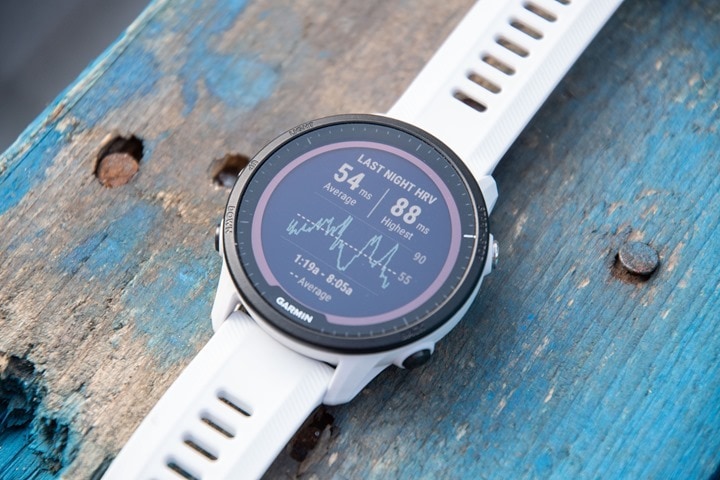
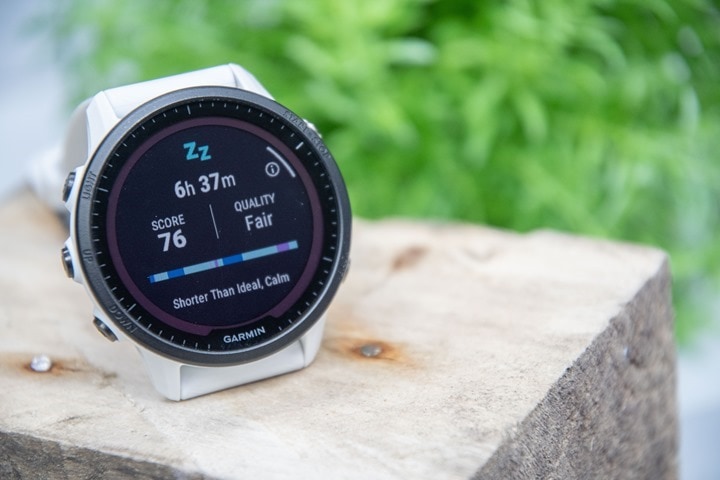
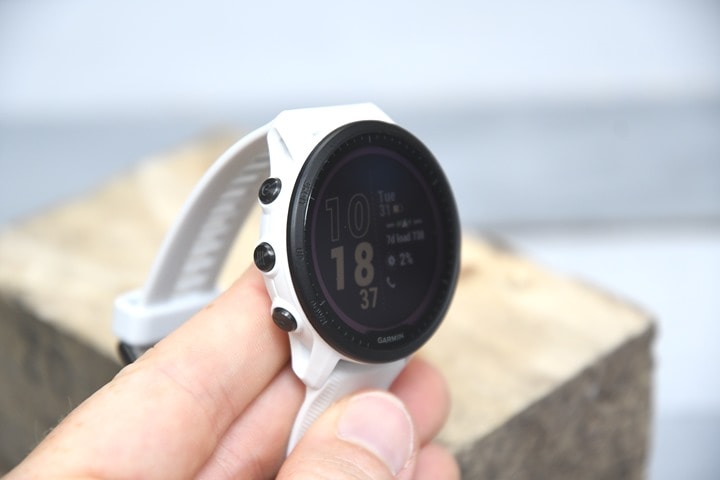
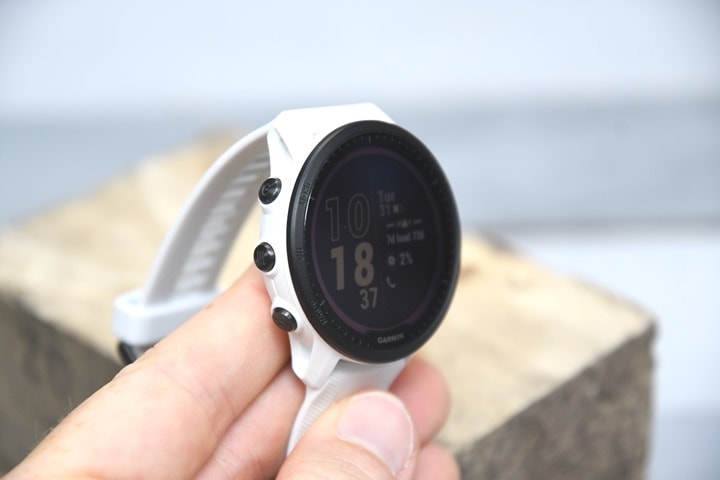
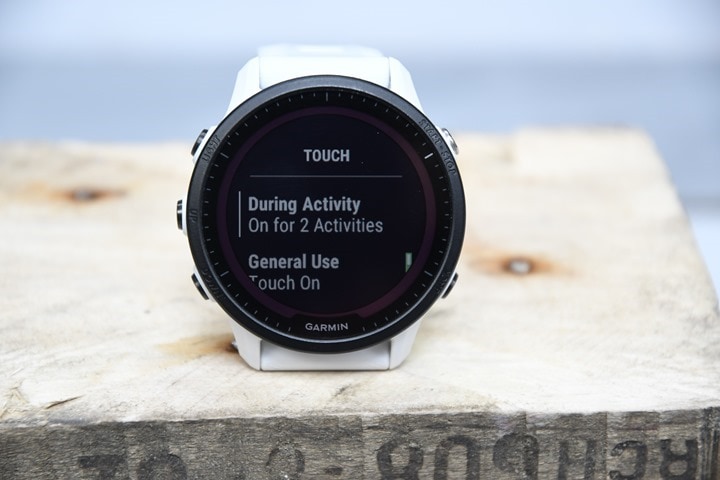
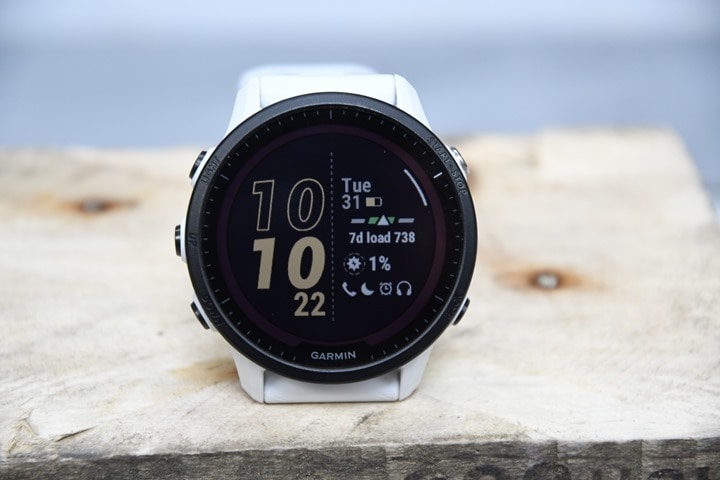
![clip_image001[6] clip_image001[6]](https://media.dcrainmaker.com/images/2022/06/clip_image0016_thumb.png)

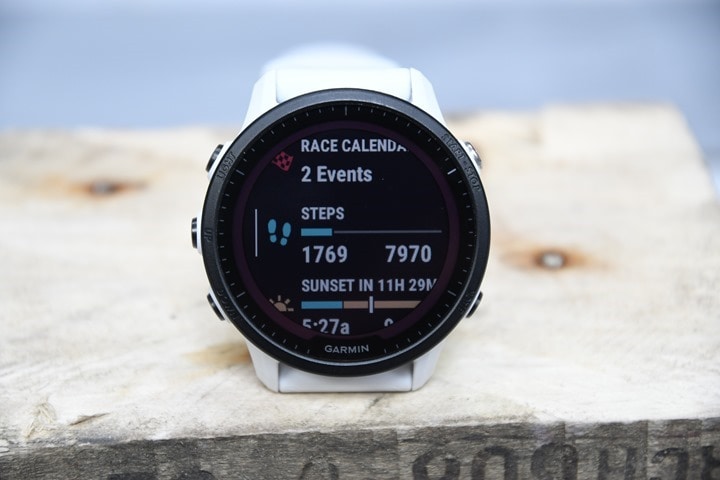
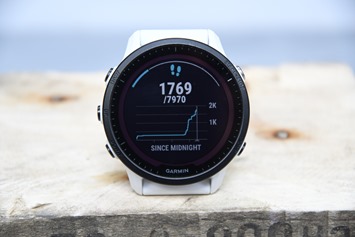
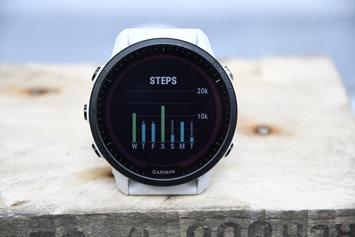
![clip_image001[11] clip_image001[11]](https://media.dcrainmaker.com/images/2022/06/clip_image00111_thumb.png)
![clip_image001[13] clip_image001[13]](https://media.dcrainmaker.com/images/2022/06/clip_image00113_thumb.png)
![clip_image001[15] clip_image001[15]](https://media.dcrainmaker.com/images/2022/06/clip_image00115_thumb.png)
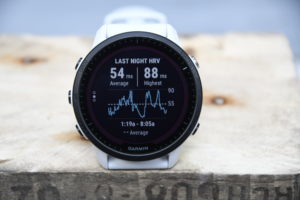
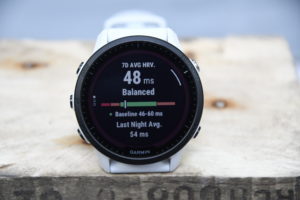

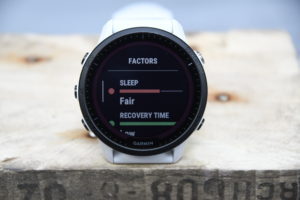
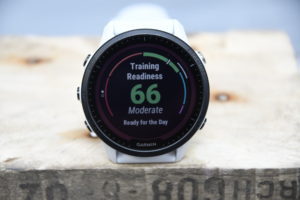
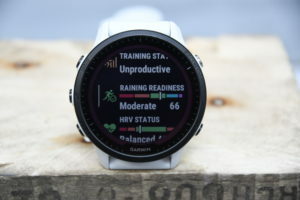
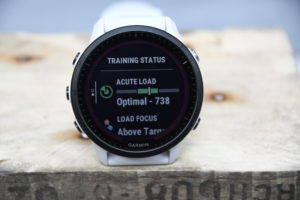
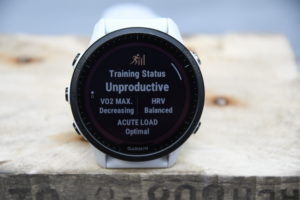

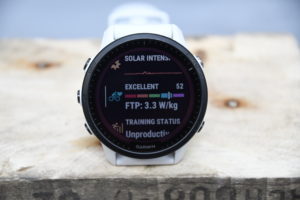
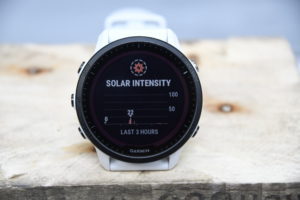
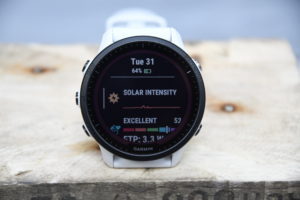
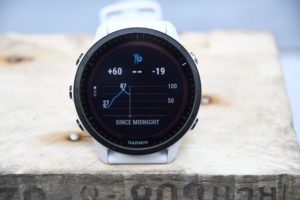

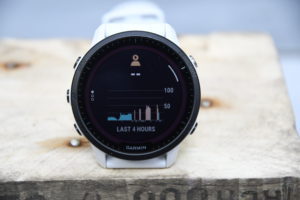
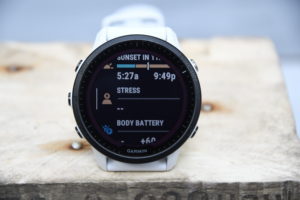
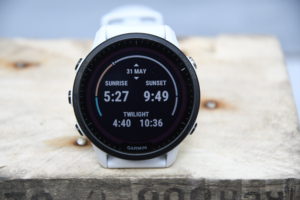
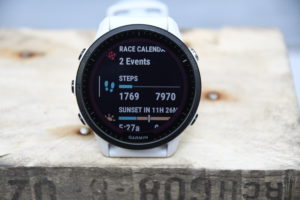
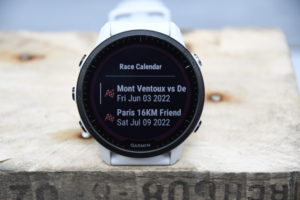
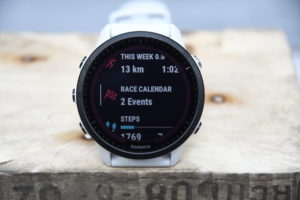

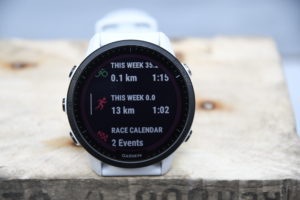
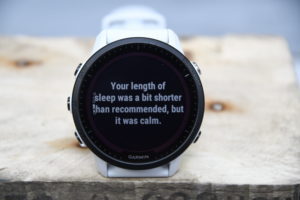

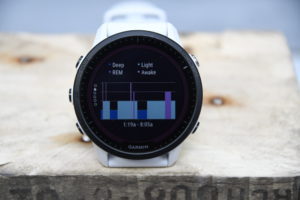
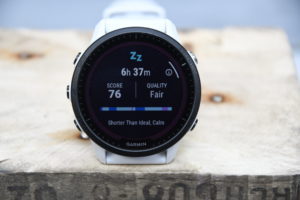

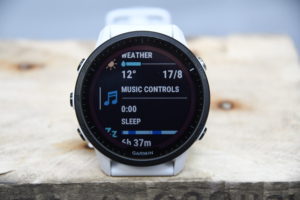
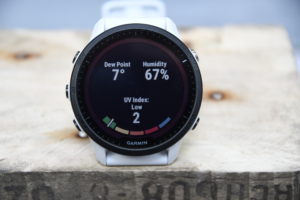
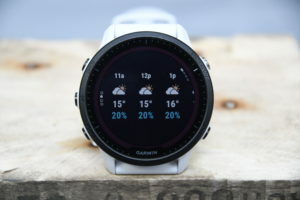

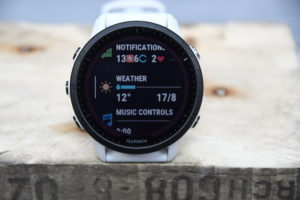
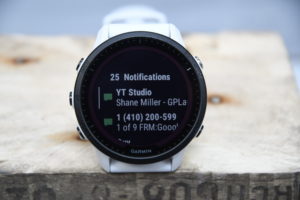
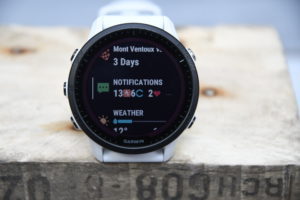
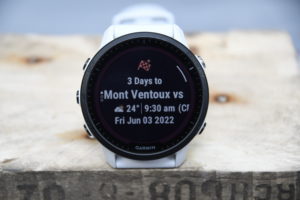
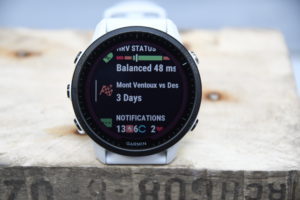
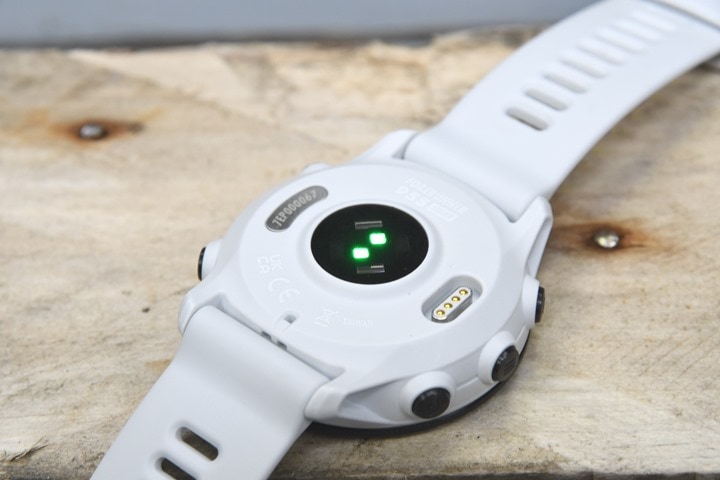
![clip_image001[1] clip_image001[1]](https://media.dcrainmaker.com/images/2022/06/clip_image0011_thumb.png)
![clip_image001[3] clip_image001[3]](https://media.dcrainmaker.com/images/2022/06/clip_image0013_thumb.png)
![clip_image001[5] clip_image001[5]](https://media.dcrainmaker.com/images/2022/06/clip_image0015_thumb.png)
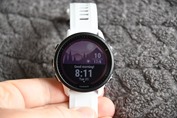
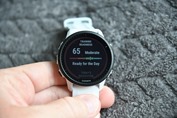
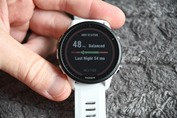
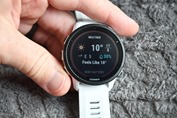
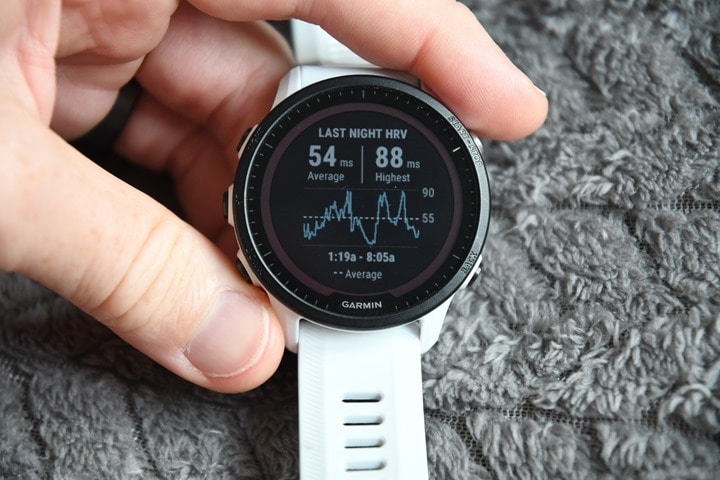
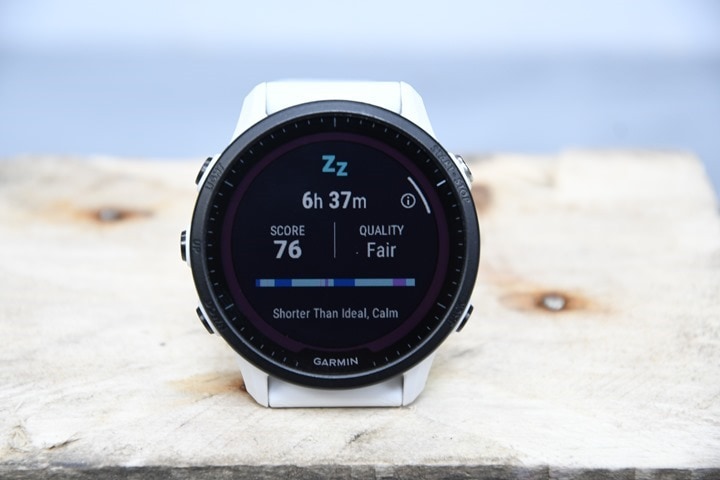
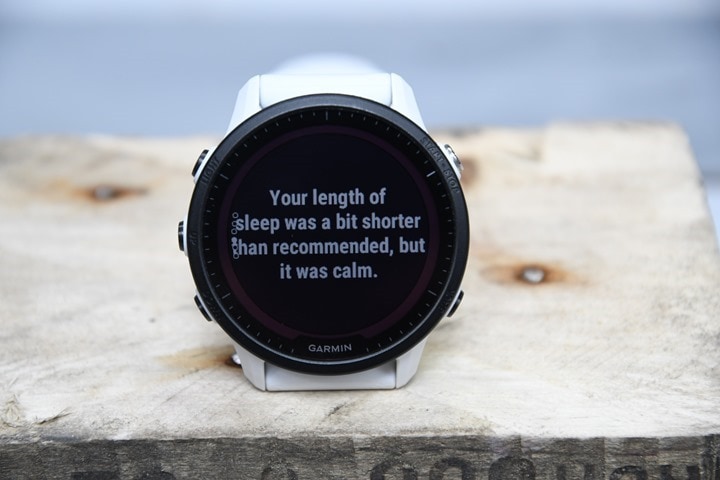


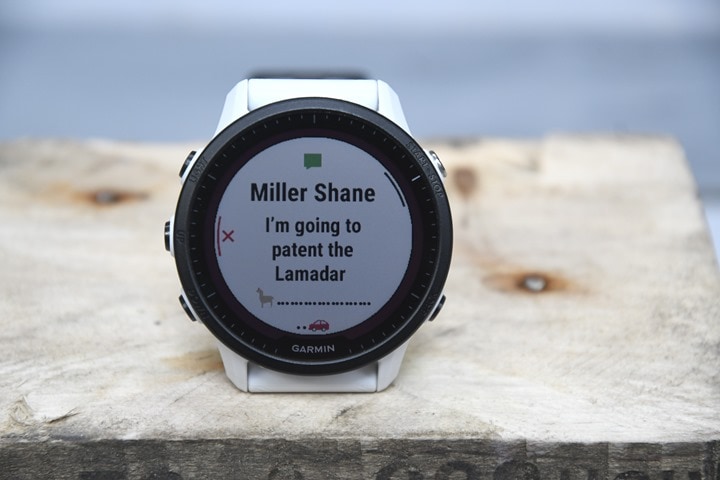

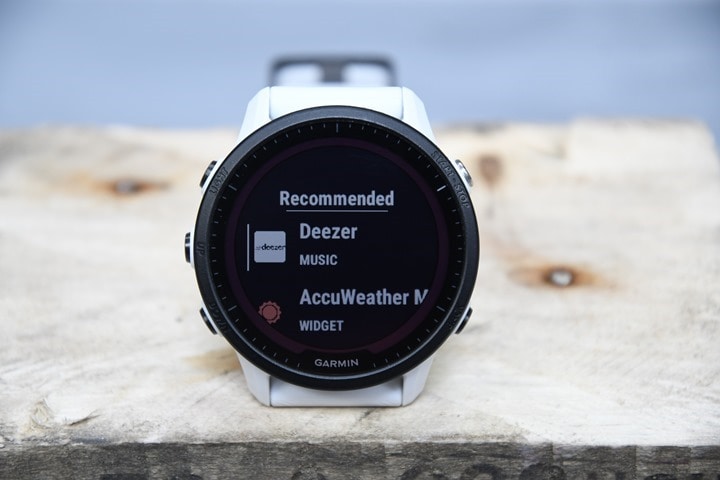
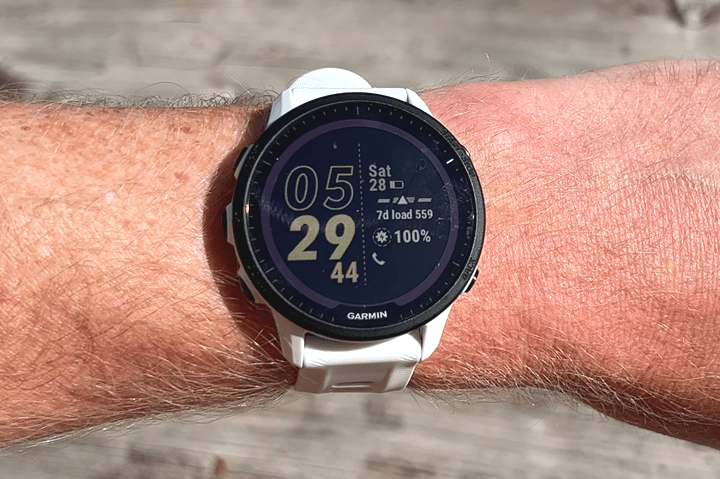
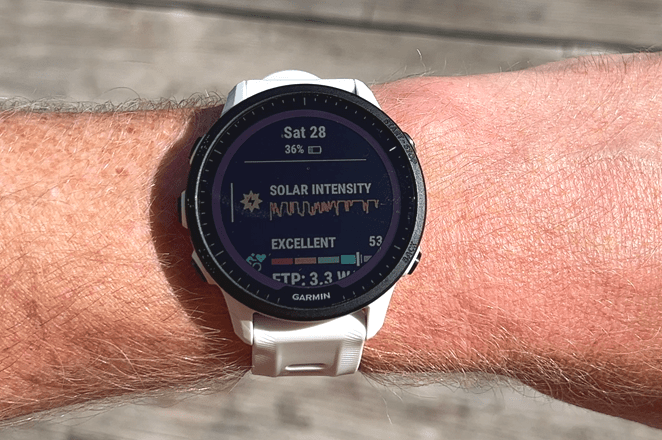
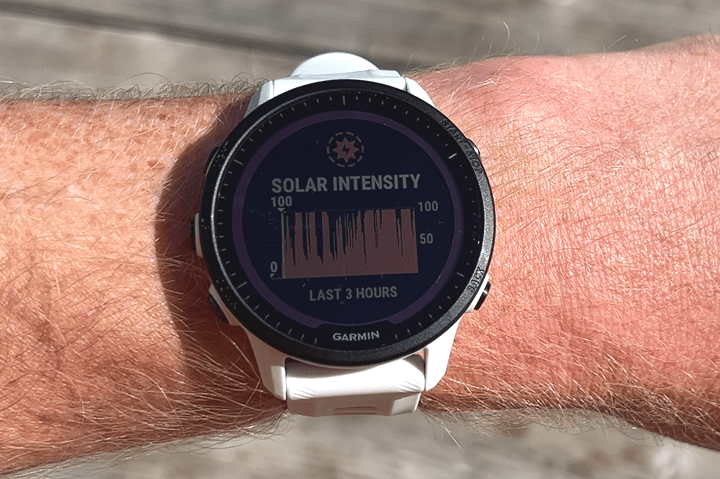
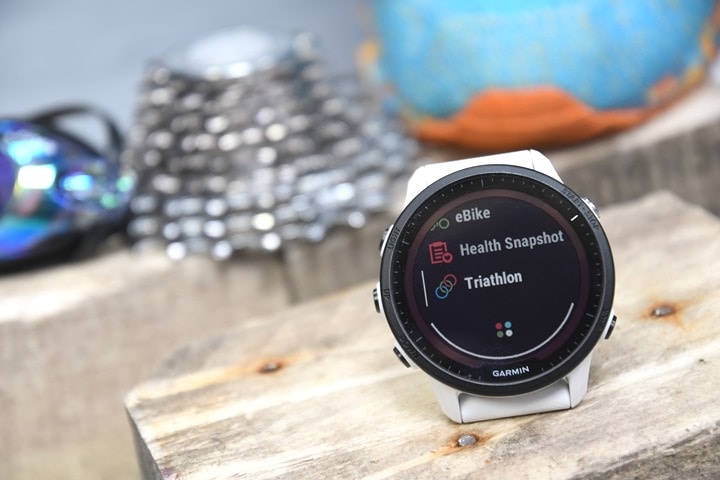
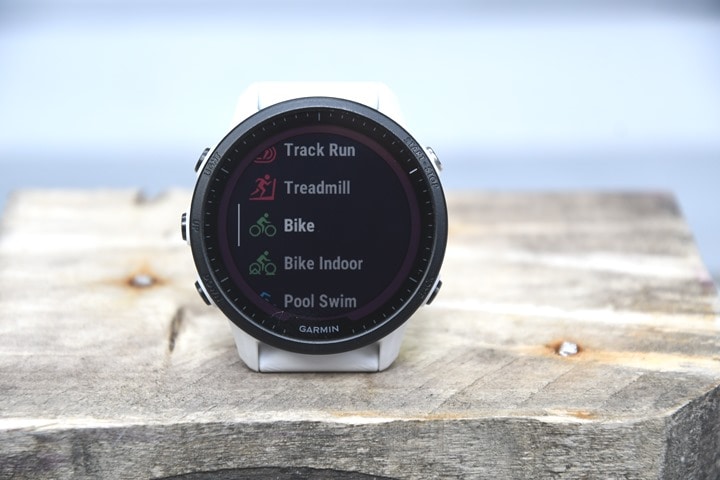
![clip_image001[7] clip_image001[7]](https://media.dcrainmaker.com/images/2022/06/clip_image0017_thumb.png)
![clip_image001[9] clip_image001[9]](https://media.dcrainmaker.com/images/2022/06/clip_image0019_thumb.png)
![clip_image001[11] clip_image001[11]](https://media.dcrainmaker.com/images/2022/06/clip_image00111_thumb-1.png)
![clip_image001[13] clip_image001[13]](https://media.dcrainmaker.com/images/2022/06/clip_image00113_thumb-1.png)
![clip_image001[15] clip_image001[15]](https://media.dcrainmaker.com/images/2022/06/clip_image00115_thumb-1.png)
![clip_image001[17] clip_image001[17]](https://media.dcrainmaker.com/images/2022/06/clip_image00117_thumb.png)
![clip_image001[19] clip_image001[19]](https://media.dcrainmaker.com/images/2022/06/clip_image00119_thumb.png)

![clip_image001[6] clip_image001[6]](https://media.dcrainmaker.com/images/2022/06/clip_image0016_thumb.jpg)


![clip_image001[35] clip_image001[35]](https://media.dcrainmaker.com/images/2022/06/clip_image00135_thumb.png)
![clip_image001[31] clip_image001[31]](https://media.dcrainmaker.com/images/2022/06/clip_image00131_thumb.png)
![clip_image001[15] clip_image001[15]](https://media.dcrainmaker.com/images/2022/01/clip_image00115_thumb.png)
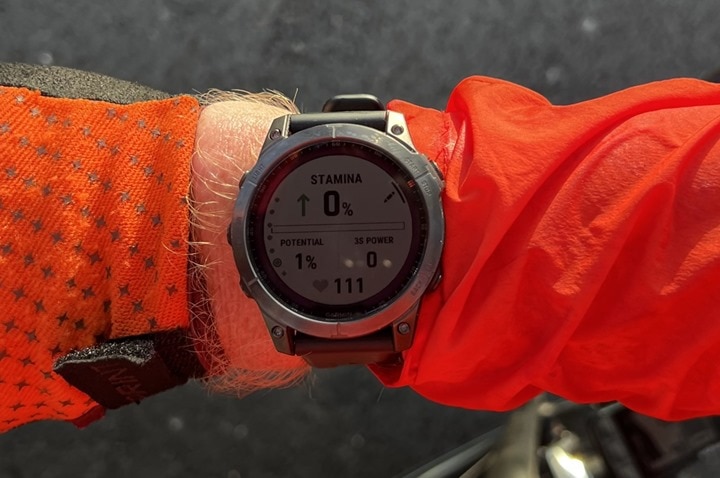
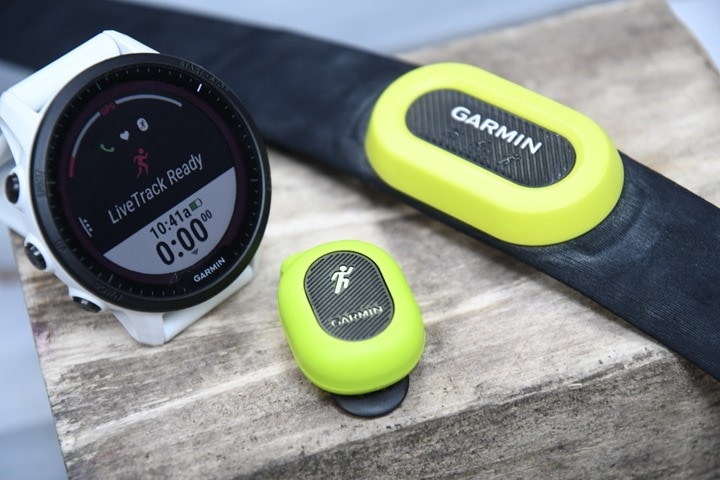
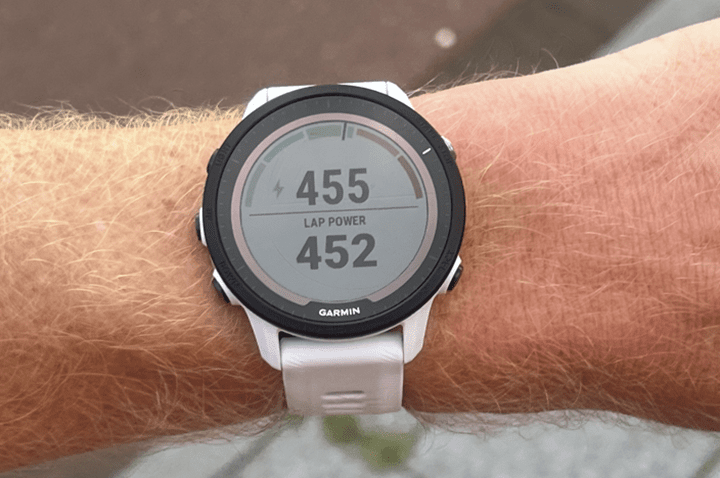
![clip_image001[21] clip_image001[21]](https://media.dcrainmaker.com/images/2022/06/clip_image00121_thumb.png)
![clip_image001[23] clip_image001[23]](https://media.dcrainmaker.com/images/2022/06/clip_image00123_thumb.png)
![clip_image001[25] clip_image001[25]](https://media.dcrainmaker.com/images/2022/06/clip_image00125_thumb.png)
![clip_image001[27] clip_image001[27]](https://media.dcrainmaker.com/images/2022/06/clip_image00127_thumb.png)
![clip_image001[29] clip_image001[29]](https://media.dcrainmaker.com/images/2022/06/clip_image00129_thumb.png)

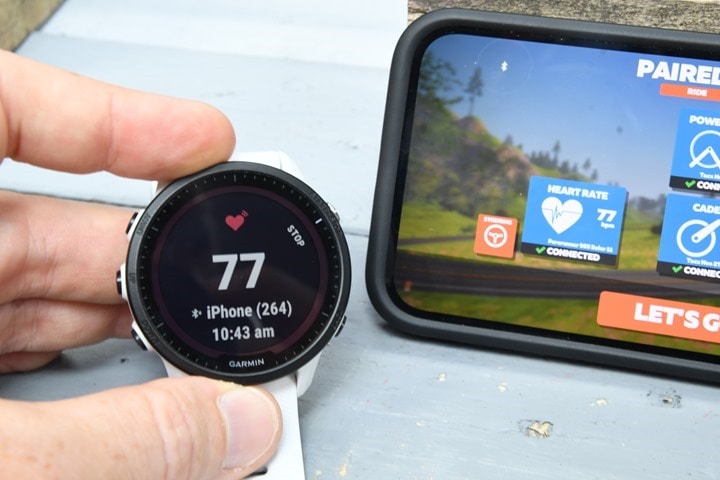
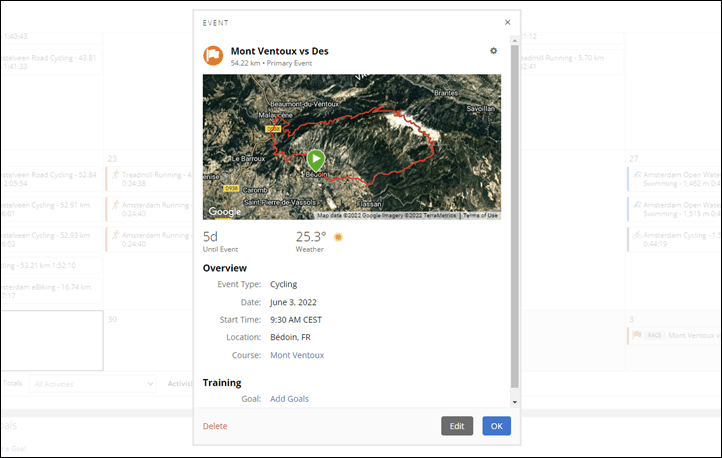
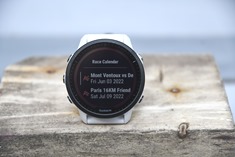
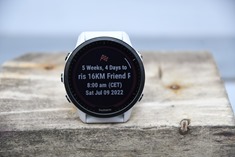
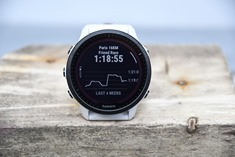
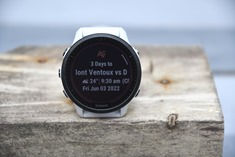
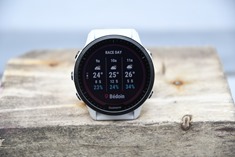
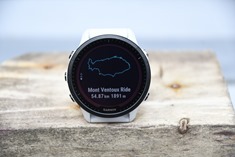
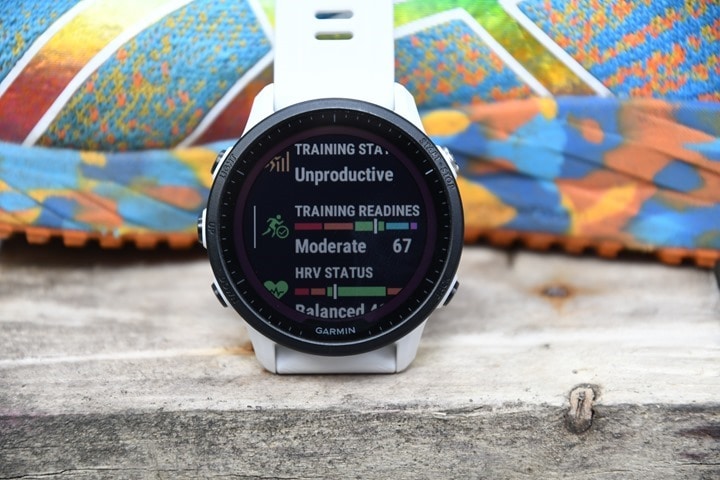

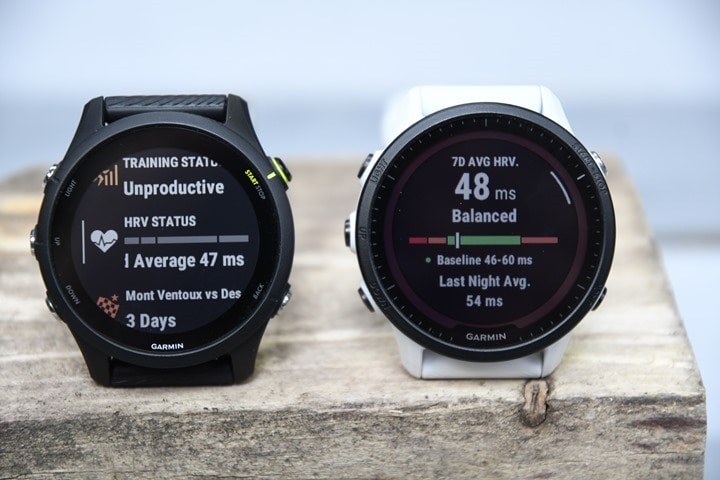

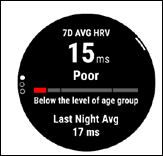
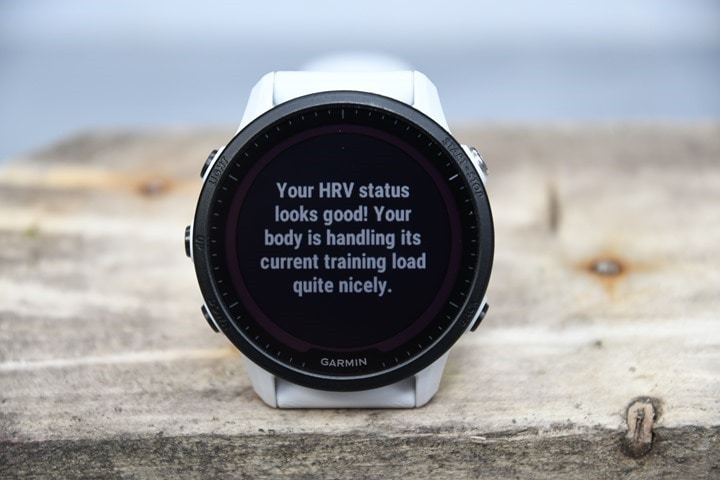
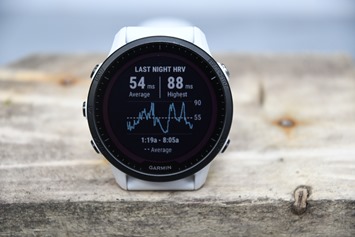

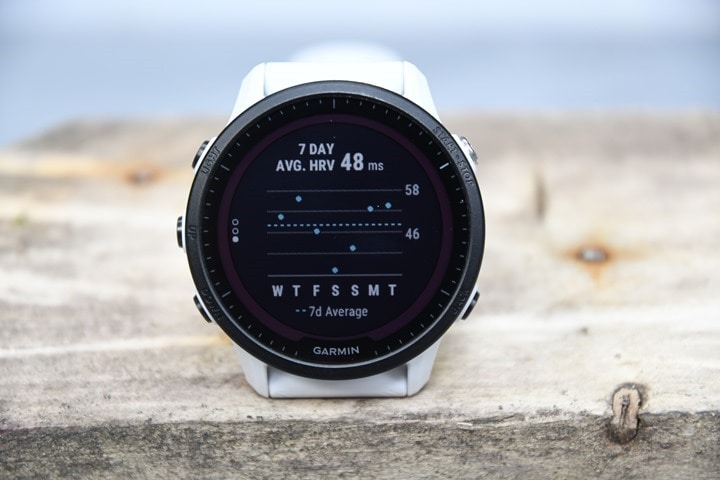
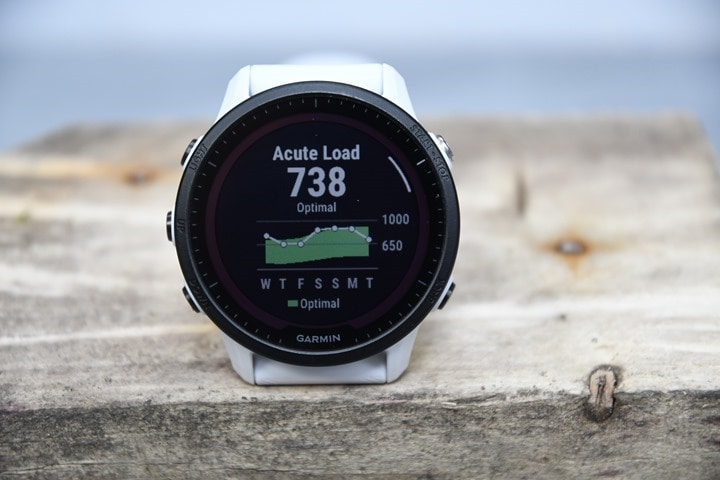
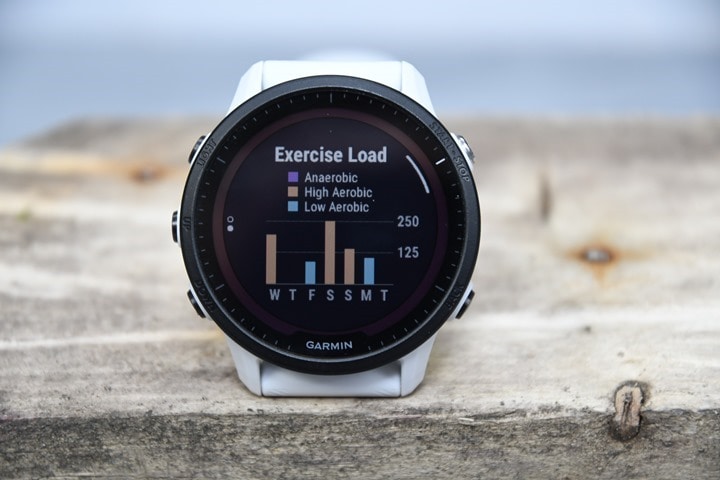
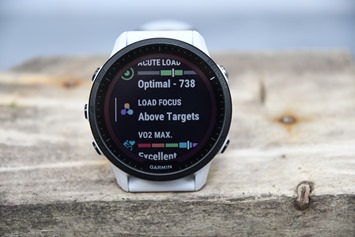
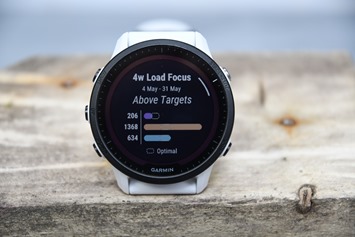
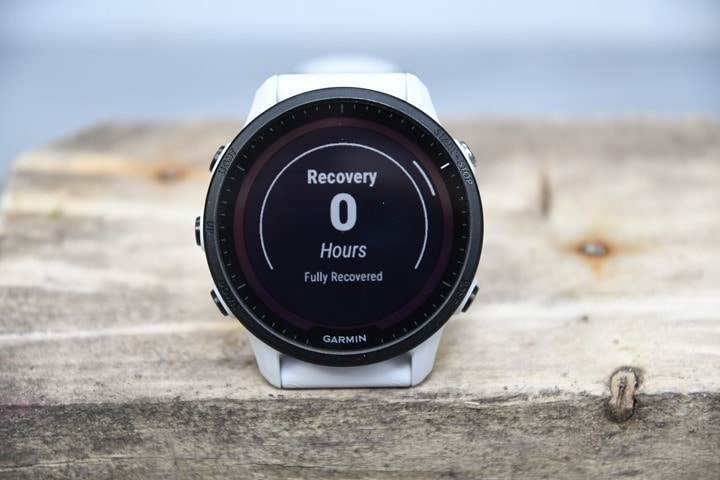
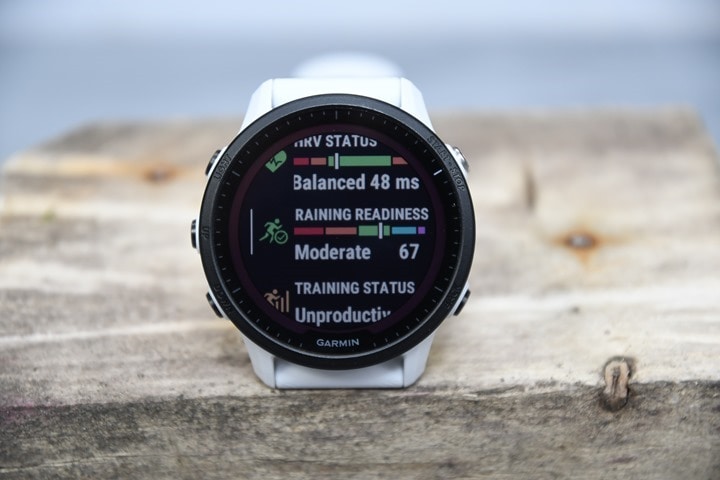

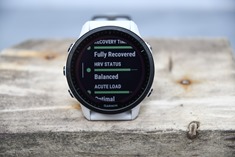
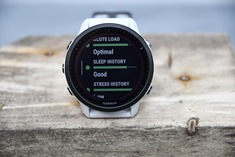

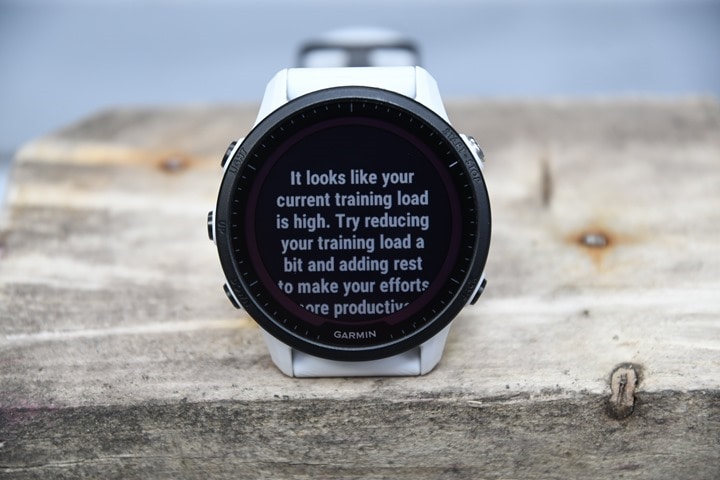
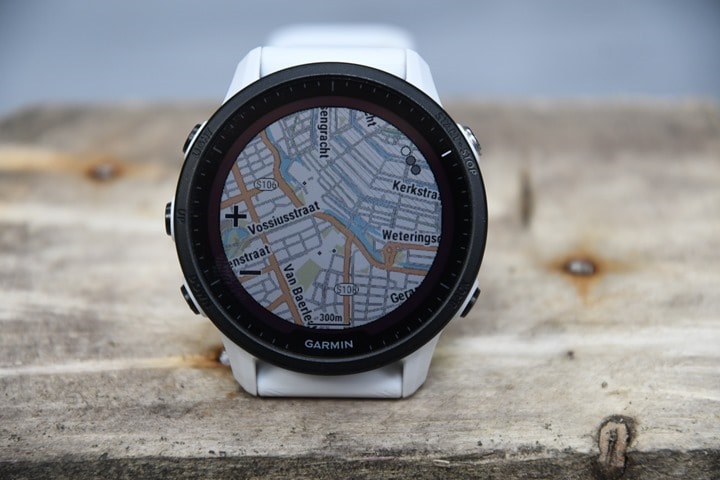


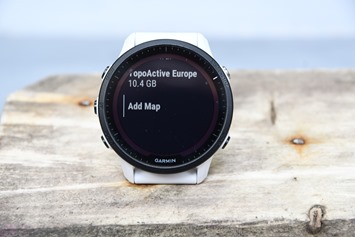







![clip_image001[8] clip_image001[8]](https://media.dcrainmaker.com/images/2022/06/clip_image0018_thumb.jpg)
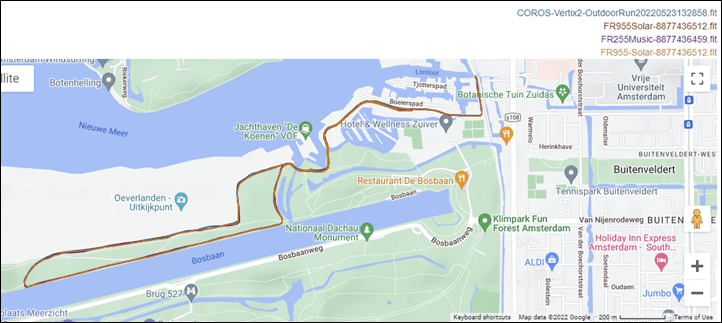
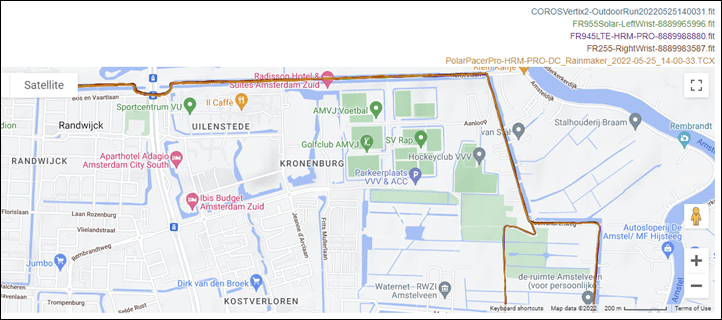
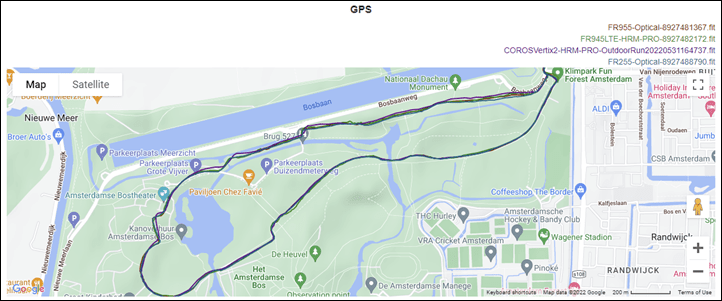
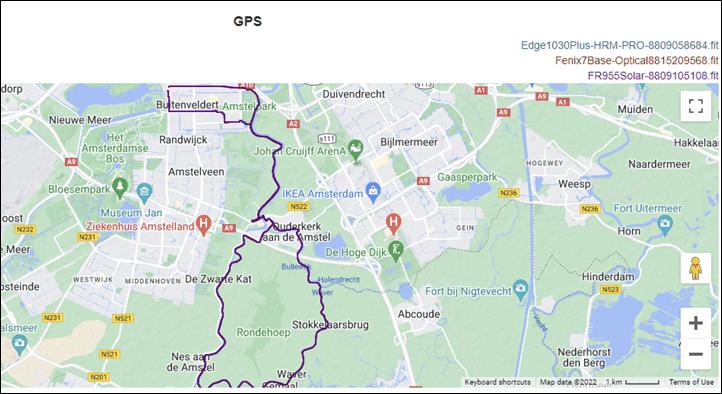


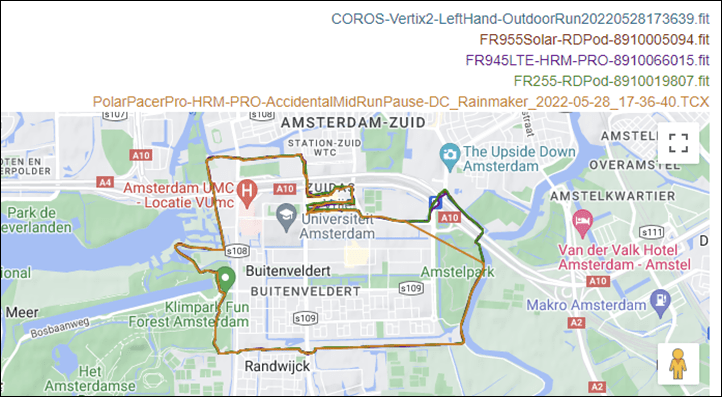
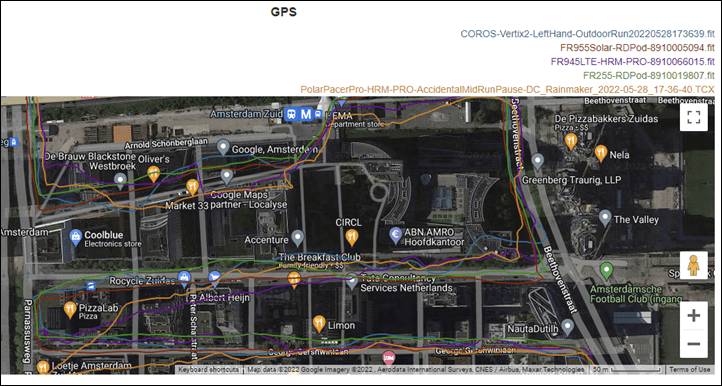
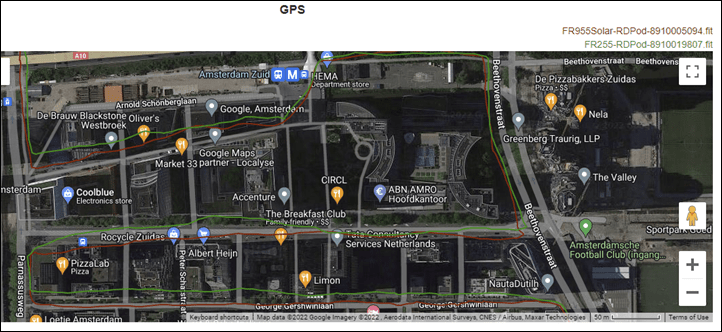
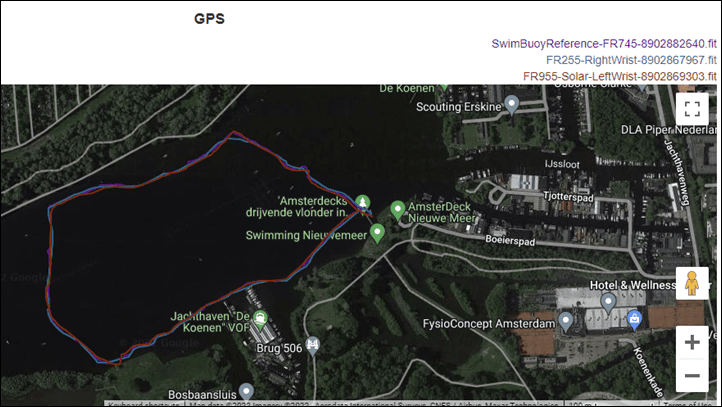










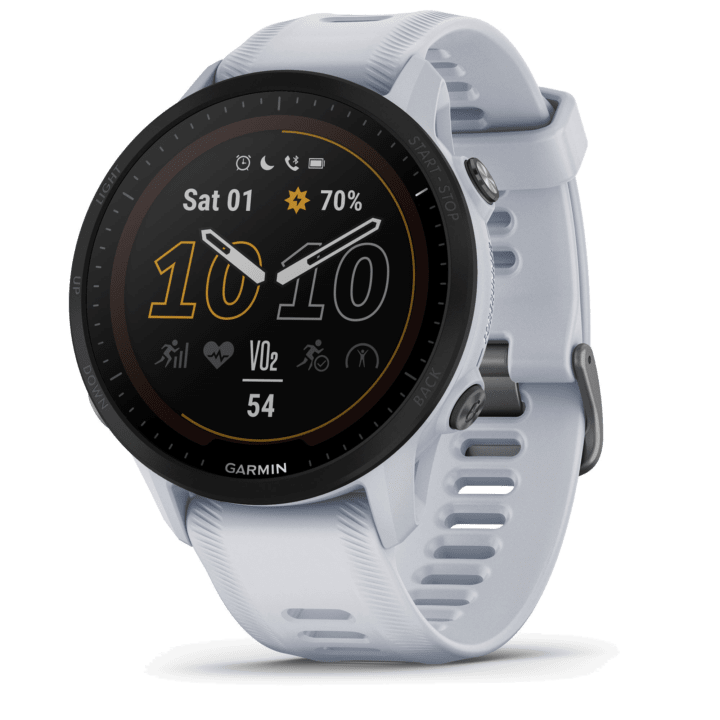
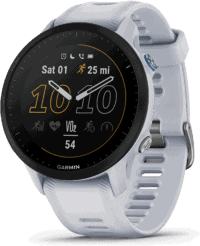
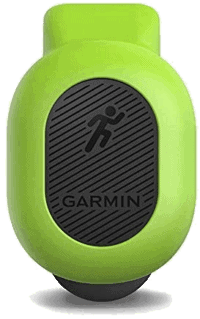
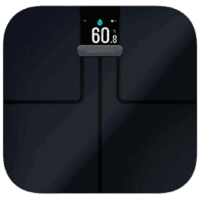
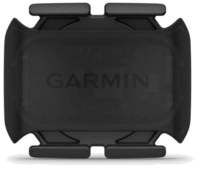
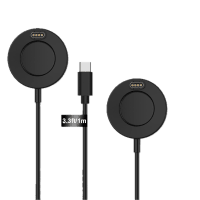
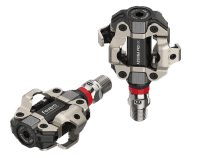

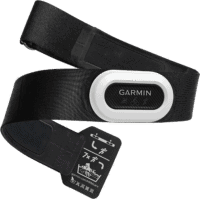

















How do you find the Garmin power data compared to a Coros? Not in terms of actual power accuracy, but in comparison between the brands?
If a training partner of mine is using a Coros & shows power data and he and I compare, is this going to be worthwhile as a metric?
Stryd power has a different magnitude than Garmin power and I believe Coros power implements Stryd’s algorithm on the wrist or uses a Stryd as a sensor. It will not be directly comparable to Garmin power. Garmin power will be much higher.
Ray was peaking at ~630 Garmin Watts for intervals which is a crazy-high Stryd number. My sense is that Garmin Power “Watts” are about 1.5x proportional to Stryd Power “Watts”. You have to roughly multiply your Garmin number by .67 to get a comparable Stryd number or multiply a Stryd number by .50 to get a rough equivalent of a Garmin number. All assuming you both have accurate weight and wind is not significant.
So no change in metrics, only implemented data fields. Numbers doesn’t matter IMHO, but the power curve should copy power curve from Stryd. I’ll wait for some comparison.
Garmin confirmed it’s exactly the existing CIQ app just ported into being native. The reason you don’t see support for Stryd natively into that tunnel at the moment, is because behind the scenes Garmin said it’s just not setup to support it yet, due to the way they ported it in.
Thus, the power differences I see are identical to before (for years). I’ve got some comparison numbers from the Polar/COROS/Stryd watches I’m going to try and add in for fun, just a bit behind there.
Oops:
multiply a Stryd number by .50 => multiply a Stryd number by 1.50
out of curiosity Ray, do you have speculation or has Garmin ever said why they don’t have a next generation running footpod that combines the incredible accuracy of Stryd with Running Power? As it stands Garmin for 5+ years has just had Running Power integrated into yet another pod to wear (or in a HR strap) and then still have a footpod that has huge accuracy issues when running various paces in a single run… Stryd has just nailed this and I can’t understand why Garmin wouldn’t create a similar device?
Hi Brian,
probably “divide a Stryd number by .67 (or multiply by 1.5)”
Yes, Garmin numbers are always higher than Stryd, and higher than what I’d expect given extensive experience with cycling power. Seems like Stryd has tried to mimic cycling power for similar effort. However, Garmin has some good documents that explain the science behind their various metrics, and explains why they believe running power should be higher than cycling. Bottom line, though, is that you really can’t compare Stryd to Garmin.
link to discover.garmin.com
Thanks a lot! I don’t need numbers same with Stryd. So if the curves are same, but only shifted of the same amount, it should be absolutely useable.
Hi Ray – just to clarify (I have yet finished and I did a word search just to be sure you didn’t comment later on), the 945 LTE is getting all the new features announced for this watch (other than obviously the solar and touch screen stuff).
Thanks very much!
(now – back to reading)
Correct, it’s getting everything in the below list:
A) HRV Status
B) Daily Training Readiness
C) Acute Training Load
D) Morning Report
E) Native Running Power
F) Race Calendar & Race Event Widgets
G) Daily Suggested Workouts now accounting for races on the calendar
It’ll realistically get more than that, but that’s just kinda how I condensed down the list to Garmin for confirmation for the key features to understanding what things were getting what across different watches.
Do you know if the new features will also become available to the Fenix 7/ Epix gen2?
Will these features also be available on the Epix 2? From when?
Hi! Same for the FR 945 without LTE? :)
I wouldn’t count on it. Despite the name, they’re very different watches.
Will the new features especially related to HRV be available for the Epix 2 soon?
Thanks!!!
All the Fenix 7/Epix/FR945 LTE units get the features as listed in the section about what’s being added via firmware update.
I don’t have any information about existing Forerunner 945 or Fenix 6 base units, but I don’t expect anything major there.
Will forerunner 945 get these software features?
Any word on whether the Fenix 6 will get any of this? I really like the idea of a morning report, and the watch already records HRV (though it isn’t visible anywhere) so that seems like really low-hanging fruit to me. Race Calendar and Event widgets would also be really cool to have.
I know stamina and stuff like that isn’t coming (though honestly I’m not sure I want my watch to tell me I’m running out of gas!) but some of these seem like they are related more to the Connect platform than to the watch hardware itself, which would make them pretty easy to add to other devices.
hi @DC Rainmaker
Does anyone have any idea when a firmware update will come to the 945 LTE ?
Hi @@DC Rainmaker
Do you have any update on the Forerunner 945 LTE Firmware update timeline or link for the updates & Downloads?
Forerunner 945 LTE software version
link to www8.garmin.com
thanks
Some additional questions :)
1. Is FR955 working with basecamp like FR945
2. Is FR955 working with garmin explore like FR945
3. how to change bands
From a cnet article on the 955:
link to zdnet.com
A very comfortable silicone 22mm watchband is attached to the watch. Like the Forerunner 945 LTE, the watchband is held in with spring-loaded pins that are found within the opening at the ends of the band. I have a watch repair kit screwdriver that works well to press down the spring-loaded pin to remove the band. You can also position in a pin and then use the QuickFit Garmin bands with the watch, but so far, I have only used the band that came with the sample watch.
I haven’t tried Basecamp, but Garmin confirmed the FR955 will have Explore functionality (but not the FR255).
I agree the most compelling features of the 955/Solar are in the software, not the hardware. The 945 LTE may very well be the best Forerunner in Garmin’s line with the upcoming software update– it already includes the Elevate 4 optical sensor, outstanding battery life, and LTE. I don’t see any advantage to the 955/Solar whatsoever. What am I missing?
Bigger display, longer battery, touch screen (great for maps).
Downside is the larger size and weight.
Multiband GNSS chip would be a big one (depending on your use case)
Multi-Band GNSS is a great theoretical spec but in real world use cases it probably would go unnoticed– its not enough to offset the advantage of LTE. As for the improved battery life, it is to be expected with the 955/Solar’s larger size but its too big for small wrists. The touch screen is the entire reason I stopped using my Apple Watch Series 7 GPS on runs without my iPhone and bought the 945 LTE. With respect to optical sensors, the 945 LTE’s Elevate 4 hasn’t been perfectly accurate and Ray’s review confirms the same problems carried over to to the 955/Solar. An Elevate 5 optical sensor would have been the hardware addition I’d like to have seen.
I’m glad Garmin decided to issue an update for the 945 LTE.
Yeah, there’s something to be said for people that want LTE and are picking up the FR945 LTE at the $449 sale prices right now, effectively having a FR955 LTE-Light here pretty shortly once the software updates finish.
Also, this is effectively the backstory as to why the FR945 LTE didn’t get the beta updates two weeks ago, because it was being held back to drop all these updates as one. Or, as I said at the time “Just hang tight, don’t worry…”. ;)
Any comments from Garmin as to whether the features will come to the, non-LTE 945 as well? Or is the feature update 945 LTE exclusive?
I wouldn’t expect it on the base FR945.
Good points. The principle feature I want for my 945 replacement is LTE. Very disappointed that the 955 doesn’t have LTE. Do you think Garmin will release a 955 LTE?
Thanks for the great review:)
I’m curious is there a quick-release kit for the FR955?
I’m curious about this as well. Garmin’s website doesn’t have many compatible accessories listed.
The website mentions that quickfit 22 bands are compatible (the same as previous forerunner 9xx watches), so that’s one piece of the puzzle solved for me (I use quickfit bands for everyday use along with the quickrelease bike mount for easy bike use).
My Forerunner 955 Solar arrived today. It seems to work with my existing Forerunner 935 quick release kit (which appears to be the same as the Forerunner 945 kit).
I will mention that the pins for the 955 seem quite a bit thicker in diameter than the Forerunner 935 pins. I assume this is to allow more room for the spring mechanism since they did away with the screw design from the 935.
The larger pins have the effect of a very tight fit. It took me a couple of tries to get the latch to close on my bike quick release holder. The watch quick release component was tight, but not too bad. I’m hoping this tight fit will “wear out” over time. The fit seems fine for training bike rides, but I’m a little concerned about high stress triathlon transitions. A halfway closed quick release latch on the bike could mean a unit flying out over a bump.
Would it be possible to use the pins from the 935 on the 955?
Great review, thanks for the time you put into it. I think there is a typo though: “In general, lighter watches will bounce around more.”
That thing with am AMOLED Display…
Thanks!
Is called EPIX ;)
sounds reasonably good, i’d buy one if i could, but in NZ despite it being nearly the end of 1st June now, they’re still not available – not even listed on the website. meanwhile the US site had them when it was still May there. garmin support here is so poor i’m tempted to look at other brands
Talking about open water swim: is your reference swim buoy reference set up in open water swim mode or in walk run or track me mode? I noticed that from Fenix 6, 945, fenix 7, distance in open water swim is always reported about 15% less then true distance. Also in your test here link to youtube.com at 6:44 you can notice that fenix 6 tracked much less distance than Polar. Have you got any comparison between 955 and Coros for example for open water swim?
Swim buoy is always set for either run or ride (mostly ride lately).
I don’t have a side by side for COROS vs 955, but will. However, I can say that I did some recent Vertix 2 OWS swim tests a couple weeks ago, and while it’s not bad, it’s simply not at the same level as the Garmin multiband chips (just like we see on land).
Thank you! I just uploaded your ows fit file for 255 and 955 to Strava. Applied distance correction for 255 and 955 and seems that even if 955 reported about 100m less, is far more accurate than 945/Fenix 7/Fenix 6. Just try to use distance correction on strava for a Fenix6, Fenix7 or 945 ows, i think you should see more distance discrepancy.
Great review!
What happens wrt Physio true-up between FR955 and older devices? e.g. are the training metrics going to be out of sync with my Edge 530 for ever more…?
from my experience with previous devices, yes – physio trueup is great in theory but in practice never quite works right because different devices support different metrics so you never really get the full picture. even when the devices have the same base metrics, they don’t support the same derived metrics and garmin doesn’t give you the ability to consolidate measurements from across different devices and then derive the full end result since they are still very device focussed rather than providing a service platform that uses devices to gather input
It is working flawlessly between my FR945 and my E530.
This is an interesting point, how would Physio TrueUp work between a FR955 and “older” devices (e.g. an E530/830/1030…) ?
” it marks the first time we’ve seen a Forerunner with a touch screen display.”
Wasn’t the FR630 the first forerunner with touch screen?
No that was the FR610 which i got due to Ray’s review.
Ohh, good point. Forgot about the FR610…
Good thing you forgot about it, the touchscreen on the FR610 was horrible.
Hi Ray, thanks for the review. One question:
Assuming you use one of the required sensors, is the native running power recorded in the fit file in case you don’t have any power-related data fields added to your data screens?
Yup! As long as the sensor is connected it gets recorded, kinda like Running Dynamics. Well, exactly like running dynamics.
Thanks. Have been waiting for this since I returned the epic. Will eagerly await the review of the 255. Is it a worthy alternative?
Why did you return your epix?
I am not sure if the epix or the 955 would be a better choice for me. I like the amoled with the map Details.
Yup, FR255 review coming up shortly. Fully written and photographed, just having to drag/sort a crapton of photos.
Straight down to personal preference of “feel”. Same reason I don’t want an Apple Watch. To me it felt like “another screen” on my wrist, a gadget that invited me to fiddle around. Which to a lot of people only speaks to its strength, but to me – comparing it to my FR 645m – the MIP is what I prefer on a training watch.
Hi, which of theses new features will come via SW to Fenix 6? Still we haven’t receive the health Snapshot.
Health Snapshot depends on a newer version of the optical HR sensor.
Interesting- 99% sure they noted for you in the fenix 7 review that (but not stamina) could be coming to the 6 series.
Any chance you could hit them up for an updated list?
It’s quite a shame that the Fenix 6 series is not getting any of these new/updated software features. I don’t think the Elevate v4 is a big hardware upgrade from the v3. The sensor arrangement is different, which was presumably done to increase the accuracy. Are we saying that the v4 hardware increases the accuracy so much, that all these new features would not be possible with the accuracy of the v3 sensor? I do not think so. I’d wager that these features would work on the v3 sensor hardware and Garmin could enable them, if they wanted to. It’s unfortunate that they don’t – the F6 is not exactly an old model and it’s a premium product.
Hmm, good point, I’ll check on that.
Thank you- that’s the same question I was going to ask! Will continue to follow!
I’m really interested in this too. Trying to decide on F6 vs 955 now.
Following post
Hi Ray, any news here?
Thanks for the review! :)
Funny to see someone at Garmin hasn’t been checking the renders properly of the Dutch version of the promo clip.
Hi, is there any chance of a side by side photo of the solar and non solar versions please? (Sorry if I’m missing it) would be interesting to see the point your making about the different bezel. Also a side by side against existing FR945 would be great. Many thanks
Unfortunately, I don’t have a non-solar version. But I can do a FR945…
I’d much appreciate this too. I’d like to be able to add a quick strap and make a 955 look ‘just like’ my 945.. or at least to the untrained eye! ;)
Priced reasonably? Cant wait for the 20% discounts, so that the pricing is only expensive and not crazy anymore.
My entire bike cost less than the solar 955 and it is certainly doing more for my fitness than a watch.
If you are running it is half a decade of running shoes!
That’s a false equivalence!
I could say the same about your bike and a pair of running shoes.
Tech to get sold lower than MSRP some months in, isn’t something new nor is it exclusive to Garmin watches.
I also try to apply my 20% discount coupon on the 955 but so far it doesn’t work. It works on everything else including Epix so that is now more tempting…
What 20% discount??
Clearly you haven’t bought running shoes lately. I go through multiple pairs per season as well.
Still, it’s a lot of coin.
Curious to see if the new/revamped features will make their way to the Instinct 2…
Yup, the FR255 ones largely do. I outlined which ones in the ‘What’s New’ section above.
Thanks! Did they also mention anything about bringing the revamped training status (in your section about the new related metrics) to the I2?
Run power: Does Garmin generate a “Power Duration Curve” as it does for cycling?
I’m not seeing one, though, perhaps I’ve missed it somewhere.
Amusingly if you push your 955 FIT files with Garmin Power to Stryd Power Centre you can use their one! As Garmin power is “higher” you also get a supercharged new CP (in my case by about 100W) after your first run.
Argg i hoped the besel would be smaller. Why didn’t they just put in the 1.4 inch screen. Then it would be perfect.
Did you forget the usual size / weight lineup?
How does it compare to the Fenix?
There’s a bunch of things sitting in a draft that I’ll get added. All things like comparison stuffs, a walkthrough of music/contactless payments/navigation (essentially things that are identical to how the watch previously worked, but that I walk-through anyways). Just simply ran out of time to get everything polished there and had to put them in the parking lot for a few hours.
Hi Ray,
Can you clarify if nativ running power is going to come to the 945? I was just now able to push a run power based workout that I created on the connect app to my 945. It also starts up and actually shows the correct workout screen with power scale and everything. It just does not generate any power values once I run.
Thanks!
“And finally, it marks the first time we’ve seen a Forerunner with a touch screen display.”
You’ve forgotten my first watch… the Forerunner 610 had touchscreen! Was a great watch apart from the charging cradle would sometimes have an issue charging.
And the 620 & 630.
How about screen size, resolution and weight, pls.?
It’s kind of a kick in the junk that Garmin would release the 255 and 955 with multiband for basically a third/half the price of the non-sapphire Fenix 7 models, barely 2-3 months after they started shipping in any volume. It took my 7x solar non-sapphire until about 3 weeks ago to arrive and I like the LED flashlight, but the screen clarity sucks compared to the Fenix 6 pro because it’s so much more reflective it seems (which is funny because I have heard people complain that the solar sapphire is worse than the solar, so I wasn’t really worried about the regular solar screen when I ordered it), and it seems like the 955 at $499 or $400 with a 20% off coupon is a much better value than the 7x solar at $780 with 20% off, if you value multiband gps option and 32gb storage for maps and music. (I also feel a bit of regret that the 7x solar is a downgrade from the 32gb storage in my f6pro even though I always bring a phone for emergencies and listen to Bluetooth music from the phone instead of the watch, to reduce watch charging needs.)
What are the odds that Garmin put the same chips in the F7 and F7x non solar sapphire models and will software enable them for multiband gps in an update? Otherwise it seems the F7 models would be a hard sell…
I just had the same thought when I saw that forerunner 255 had multiband ! It must means that gps chipset is the same on all watches and it’s software locked on fenix 7 non sapphire.
I was thinking this same exact thing, though I got the F7S. Makes me feel like I really was stupid to buy this when I really value true GPS accuracy and wish I’d waited for the 955 with multi-band that my watch doesn’t have.
I’m really interested in this too. Trying to decide on F6 vs 955 now.
where do you find a 20% coupon?
Where do you get the 20% coupon?
He’s probably referring to the BlueCross discount, which offers 20% on a lot of garmin products- although not brand new releases (unless they forget like the did with the Fenix7 and Epix for about a week). Anyway- there’s no discount yet on the 955, but it’s available now for the F7 and Epix.
the 955 with a 20% off (probably a couple months away) would be a deal of a watch. but then… it still won’t have the AMOLED screen of the epix.
Yep, Blue365 deals, perks at work, unidays and one other company that I’m forgetting has 20% Garmin coupons.
Sometimes they don’t get their store configured correctly and you can use them on release day, then they realize and exclude the newest watches for a month or two and suddenly the new watches work with coupons again.
Hi Ray, will running power also work with the HRM-Tri which seems to be discontinued?
On the Garmin site only HRM-Pro is mentioned.
It works across all of them (HRM-TRI/HRM-PRO/HRM-RUN/RD Pod). Garmin has basically just standardized on the HRM-PRO language for some reason.
I’m happy that Garmin has natively implemented running power but I’m quite disappointed that what they did was re-implement their ConnectIQ apps natively and stopped. Failing to support Stryd as a sensor seems anti-competitive when Stryd does provide an ANT+ power meter profile already. Implementing the Garmin Power algorithm to interpret their sensor data as power as an input to their power fields is much more complex than just accepting a real-time feed of power data calculated by an accessory as an input.
I hope they move forward with supporting an open power sensor interface quickly.
I largely agree. Though, two thoughts:
A) They did say that’s in their plans, but that they simply ran out of runway to get it in.
B) One shouldn’t forget that Stryd actually moved away from supporting the RD standards that Garmin basically put in place for them to be able to feed into exactly this sort of thing.
It’s probably one of the greatest examples of Garmin offering standards to competitors, and those competitors saying “Nah, nevermind” (along with Wahoo doing the same for years before eventually adopting the RD standards in their TICKR straps).
That’s true and annoying that Stryd write their cadence and vertical oscillation into custom fields instead of RD fields. I don’t know why they did that. I guess I assumed it was because the entire implementation is based on their ConnectIQ data field.
It’s annoying that metabolic running “power” isn’t standardized in any way and the implementations are so divergent in magnitude. But the actual number isn’t very important as long as it is calibrated to zones that are functional for workouts.
I have a strong preference for “native” and I have the accessories so I could switch if and when this comes to fenix 7 series. I don’t use the Stryd workouts and I’m just grandfathered into the basic feature set. I use TrainingPeaks for building workouts. Workouts with native support would presumably be better than just announcing the range and looking at a CIQ field. I would expect to get the power gauge, lap average, and audible announcement of in and out of range over BT headphones like with HR-based targets. That’s significantly better.
(Also I don’t trust ConnectIQ. It’s not totally safe since Garmin doesn’t have processes and doesn’t have memory protection.)
But the other ecosystem thing that seems to be missing from Garmin is CP and power curve detection which Garmin doesn’t seem to do nor does TP. It’s a colossal pain to derive these yourself using Golden Cheetah or something.
I actually tried the Garmin CIQ Running Power before Stryd on a f5X. It just didn’t quite work. The power number was noisy because of using current pace from GPS as a critical input and they had no way of getting CP and zones. It was just good enough to push me to try stabilizing it with the light Stryd that was intended for Zwift. And after a few weeks I just upgraded the Stryd.
But if Garmin has a good enough system (including CP and zone detection) then it becomes quite a difficult sale to make for Stryd to get people to buy both an expensive sensor accessory and a subscription.
Re standards and, as I mentioned elsewhere, Stryd Power Centre can read a 955 FIT file with native Garmin power in it and show you Garmin power as if it was Stryd power. Well for now. Examining the 955 FIT file in the FIT File Repair File Tool, Garmin puts Power in the native field called err Power so perhaps Stryd do “support” the standard but don’t think a CIQ data field can write direct to a native field can it? As such how could Stryd currently implement standards only through CIQ?
Are the all the new training metrics just HR based or do you still need a power meter for cycling to properly work?
It is really annoying on Fenix 6 pro, that cycles without power meter don’t count towards some of the training status in the same way running does.
Does Garmin calculate Critical Power and derive zones for you somehow? Without the Critical Power number and zones, Power isn’t useful for training.
One of the most useful things Stryd does is detect Critical Power and derive zones and provide a power curve based on your workout history.
It doesn’t matter really what the number are in absolute terms if you have the CP, zones, and curve to use to build workouts. If they don’t provide a good way to get CP then it’s not really useful.
It magically came up with zones from me, but that’s a good question, I’ll have to see where on earth those instantiated from, and more notably, how/when they update.
Interesting.
Do they correlate with the zones and CP that Stryd calculated. Like 1.5x -ish whatever Stryd thinks?
In your video it shows a Device > User Profile > Power Running Power config that doesn’t yet exist in the f7X.
It looks like you had an FTP number and the zones were set as a percentage of FTP. It must have FTP detection built in? Or some kind of guided running FTP test?
They could possibly be derived from looking at what power is equivalent to your computed threshold and max HR. I “cheated” a bit and fed some FIT files into Stryd Power Centre and now got a Garmin centric CP that way. That said I initially “guessed” mine and set manually after looking what numbers got in a hard run and it wasn’t actually far out from what Stryd said.
I don’t understand why Garmin still continues to keep the Fenix and Forerunner 9xx lines separate, when the Fenix 7 and Forerunner 955 practically offer the same thing. As a hobby triathlete, I don’t see clear advantages of one watch over the other.
Forerunner 9xx = lighter due to plastic materials.
Fenix = heavier due to metal bezel and back, more premium looking, more size options.
I think there is a market for both.
The line used to be that a Fenix supposedly looked better with business attire. Personally have always valued the lighter weight and lower price of the Forerunners. And now I mainly WFH anyway :)
Great review as always, and a nice watch! I’d like to go smaller and lighter. In your crystal ball, is there a 755 with maps?
I don’t see a place in the lineup for a FR755 at this point. With only a $150 spread between the FR255 and the FR955, I can’t see any scenario where Garmin sticks something in between that within the Forerunner lineup.
I don’t know what their crystal ball is, but I’m reasonably confident the ball doesn’t have a FR755 priced at $425.
I can definitely see the FR755/655 Amoled being squeezed in between the FR255 and FR955. There’s surely demand for the pretty screen, even at the cost of the battery life.
I think quite a lot of people are disappointed that there are no Amoled 955/255 versions, though I hope to see such variants soonish.
Exactly. Realistically, the only way a 755 is coming as an AMOLED variant.. but it really would make more sense just to make a 255 or 955 “Plus” (or some other add on moniker).
Can’t imagine an AMOLED Forerunner being cheaper than a MIPS one… Maybe we’ll see an FR 1055? (Or, is that just crazy talk?)
A 955s would make sense to me, could be the 255s hw with maps and maybe some limitations due to limited se but $50 less.
Hi Ray, anything in the grapevine regarding Youtube Music integration with Garmin products?
Thanks!
In the various sports profiles, is there still a limit of 2 connect iq data fields? Does this vary between 955 and 255?
It is 2 on a 955. Haven’t got a 255 but got to assume 2 as well.
There are some outdated limits on the number of Connect-IQ data fields, apps, watch faces and structured trainings I keep bumping into. Garmin need to bring those into the 2020s.
Ray, man, you’re costing me a lot. First, I go against your review and buy the new Varia tail light/camera/radar, now I’m also pushed over the edge (foreshadowing?) to replace my 5+ year old 935. What next a new bike computer too? :)
(I need a ‘Ducks under the desk’ emoji)
It’s great news that the Forerunner 255 supports triathlon activity, for which we don’t need to have a top-of-the-range watch to practice sports.
On the other hand, it costs more than I payed for me Fenix 5s back in 2018 (to be fair, it was on sale at this point in time). Nevertheless, point being, more features in “lower” series, but higher prices as well.
You are totally right. For that price point you can buy know a Fenix 6 new online.
Quick fix: In the basic section, you wrote:
“It is not an AMOLED display like the Garmin Venu or Epix series watches, so it won’t quite as as vibrant colors.”
Thanks!
As always Ray is as quick as light ray with an excellent extensive review…🙏
After a Long consideration and live comparison I chose the Fenix 7x Sapphire Solar over the Epix.
I not only like the look of the always on MIP better… But i do a lot of sports Hiking Biking (trail) running and outdoor body weight fitness….
That battery life is awesome Even with Multi FQ sat nav it lasts 18-20 days on a charge…
RAY Thanks for your reviews you’re the Best👌 👍
QUESTION do you believe that the Training Rediness will come to tge Epix/ Fenix as well❓️
I’m struggling with Garmin’s offerings at the moment, around the OLED screen.
I’ve got a Venu 1 at the moment. I got a Fenix 6 on sale a while back, but returned as I just thought the screen looked very poor compared to the Venu.
Now looking at an upgrade, and because of no OLED in the forerunner space, it’s between Venu 2 and Epix. So affordable but limited running functionality, or mega expensive.
I was hoping there might be a 955 option with OLED that would sit in a nice middle ground for me.
Hey Ray,
Why haven’t you tested the heart rate sensor in a pool workout?
Great work as always
There is something i can’t get about this watch.
Why a solar version for a triathlon watch? I mean…an Ironman distance race usually has a 16/17 hours gate. Is the solar feature necessary for a forerunner with 20/30 hours battery ?
I think it is like many of the multitude of non basic features on these watches. Probably don’t need it but if they are offering it then why not. I haven’t seen a great deal of sun since I got the 955 so certainly been reaching for the charger so far!
“this time with a set of 4×800 and 4×800 intervals” typo ?
I think this was 4×400 and 4×800 ! ;-)
Ray, can we have a side comparison between 945 and 955 please ?
Great review as always, and this looks like a solid 945 update with enough to push me towards the buy button…
You have included *most* of the battery life measures, but not with navigation enabled. On a long ultra, I’ll be navigating a route, possibly with music at some points if I need a push. Would it be possible to get an idea of burn down rate with navigation and no music, and then with navigation and music? I’m hoping I’ll get 10hrs with nav but no music?
This could be what pushes me towards the solar version vs saving the cash.
Not sure specifically yet on the 955 but certainly past experience meant that leaving a watch on the map screen for navigation burns through the battery quicker than anything else.
There isn’t much space between FR255 and FR955. I guess we’ll only see either FR 655 or 755.
Thanks Form the Review!
A Bit too pricey For a plastic watch, but features seem good. Hopefully we will See some Discounts soonish
Hi Ray, thanks for the great and detailed review.
I have to admit, my wishful thinking as a FR745 owner was to see Garmin giving it one extra year of lifespan (feature-wise). After the recent release of the Instinct 2, and now with the FR255 in particular, I’m more convinced the 745 will follow the same fate as the 645.
Hi, and thx for this (as usual..) superb review. I don’t wear watch by night, so a lot of these new features don’t work, and a 955 is like a 945 with dual frequency. For me it’s enough, problems are others. Did they improve buttons(click/no click affair)? Is altimeter different (and strongest) from the old one that too often breaks(2 times in 2 watches 935-945)? Have they improving swim software so it understands 18″+20″ laps are not 2 PRs but it’s only one 38″ lap in a 50m swimminpool?
The altimeter on the 955 is working great on the 955 so far. It that continues time will tell. Ditto the buttons although after 3 years of daily use all my 945 buttons are still working fine too.
Well from the user perspective, all we would actually need is one plastic model in three sizes, all sharing the same features like the Fenixes do.
The different series of Forerunners share 90% of the hardware and differentiation is achieved by applying the software feature cripple hammer to create a lower end model.
If Garmin consolidated all the plastic lines into one, they would save bigly on development, marketing and software support and could still achieve differentiation through (screen) size and battery life.
Forerunner S 250$
Forerunner S + Music 300$
Forerunner M + Music 400$
Forerunner M + Music + Maps 450$
Forerunner X + Music + Maps 500$
Forerunner X + Solar 600$
By all means throw in a Forerunner G ( GIMPED) with no Tri features and 218p display for 180$
What would you go for between the Epix Gen 2 or Forerunner 955? What are the differences?
Great Article! Thanks for all the info!!
One minor side note: I guess you have a little typo:
“However, new to the Forerunner 245/955 is the ‘Morning Report’.” and “HRV is measured on the FR245/FR955 constantly through the night.” This should be 255, not 245 I guess. Even though I would love to see these features on the FR245 ;-)
Where does this put the 745? More expensive and same (less?) features as the 255? Perhaps some great deals coming there then.
Some typos:
– If you swing your arms around, you’ll either not get good *devices*
– But the reality is you’ll ????? 1-5% of them
On Fenix 7 + Android you can reply to smartphone notifications from SMS, WhatsApp, MS Teams & others with predefined messages (that you can edit on the phone).
Thanks for the review. Good to see all the maps of my own country :-)
Forerunner 945 had the temperature sensor disabled for pool swimming after a few years, because they detected some fault in the sensor. Does Forerunner 955 have this enabled again? (945 LTE did not).
Will the new features especially related to HRV be available for the Epix 2 soon?
Thank you Ray for this (as always) excellent review! Can you give us a hint if the regular 945 will get any of the new features?
Is it likely that LTE will come in a later iteration of the 955? Or was the 945 LTE basically an experiment gone wrong?
following
I wouldn’t expect an LTE edition of the FR955. Yet, at the same time, I definitely wouldn’t see that as Garmin giving up on LTE either.
it’s a shame that they don’t announce all watches on the same time. Now i have a Epix2 because of the new functions, and a Forerunner 945 LTE for the connection.
I was hoping they would announce a Forerunner 955 LTE and a “Power pod” like a Stryd.
So reading the tealeaves, the LTE is about to become a new line in it’s own right. Which I think makes sense. Will frustrate some, but I think reduces the compromise for the majority. For those not wanting subscriptions, and wanting longer battery and smaller form factor, not having LTE is a big bonus. Basically all the other optional features (music, dual band GPS, etc) don’t have any negatives if you don’t use them. LTE needs specific additional components.
So a FR1055 or a new ‘thing’ that sits above / beside the Fenix and gives another choice like the Epix line perhaps? Although given there’s already a lot of blurring as to which to go for that may be a hard ‘sell’.
Hi Ray, why is the battery life so much lower than on the regular Fenix 7? And do you have an update on what is going on with LTE – we aren’t seeing any 945 LTE roll out to other jurisdictions: the whole project seems to have stalled….
I’m also confused by the battery life differences between Fenix 7 and 955.
The 945 and Fenix 6 were basically identical (14 days smartwatch, 36 hrs gps). Then the Fenix 7 made a big leap in battery life to 18 days smartwatch, 57 hrs gps and gains from solar of 4 days smartwatch and 16 hrs gps. All while the total watch got 1g lighter and 0.3mm thinner (even bigger differences for the solar variant) compared to fenix 6.
Meanwhile the 955 has only jumped to 15 days smartwatch and 42 hrs gps and confusingly solar gains of 5 days smartwatch but only 7 hrs gps. All while INCREASING 2g and 0.7mm compared to 945!
I realize the 955 moved to a larger screen while the Fenix 6 already had the 1.3″ 260×260 screen but still seems like a big discrepancy for two watches that should have a lot of the same hardware. I’m guessing the battery in Fenix 7 is larger but how did it manage to save weight and size while the 955 increased without increasing battery life as much?
I’m thinking they must have nerfed the 955 battery a bit to make it line up almost exactly with the Epix gen 2 specs (not always on display). I would think it could have fit a larger battery like the fenix 7 but that they used a smaller one instead.
Would be interesting to see real life battery drain comparison between these models in smartwatch, GPS, and multiband modes. Would also be interesting to see how much energy they each take in a full 0-100% charge to get a pretty good indication of battery size.
Hi,
There is so much to navigate through in terms of capabilities, but in summary why would I buy a Fenix 7 over the 955, what are the key differences in capabilities?
Kind regards
I’m feeling rather stupid now for picking up the Fenix 7 base model just last week. As someone who mainly just uses the watch for running the 955 seems to pack the same (and better in some cases) features than the Fenix in a lighter package that won’t bounce around my wrist like the Fenix does.
Following
Does it have directional arrows for preloaded course on map?
Yes
Thanks for the review Ray! I’m a triathlete and windsurfer. I prefer this watch instead of the Fenix because of the weight. Why don’t we get the sport activity windsurfing?
Probably I can choose a standard activity and change it later.
Looks like Damon posted about windsurfing just before I could ask as well. Following. (Any thoughts on redesigning the comment follow-up system, Ray? I don’t comment often, but when I do, I get 30+ emails about non-reply comments.)
I have the Fenix 6. One of the reasons I got it was that it was supposed to be updated to include the Windsurfing and Kiteboarding activities. That never happened.
The solution is to just copy the biking (or other activity) and rename it. You end up with some inappropriate data options but it works for tracking your location, speed, and duration of activity.
I wonder if the Fenix 6 will ever be updated as previously stated. Even though it doesn’t include the activities I need it works great for watersports. I use it for many.
Is there any way to get a side by side picture with a 945 for scale?
Finally! I know this is dumb hill to die on, but why couldn’t they include windsurfing? I can’t justify spending another $200 for one (and few other) uncommon activity type. Although the battery life advantage of the Fenix 7 makes eating that cost slightly more tolerable.
I’m assuming we can still create “Other” type activities (I have a 935). When doing so, can the sport type now be defined so one doesn’t have to go in and manually change them (to say, windsurfing)?
Thanks for another stellar review, Ray!
Hey
How about backlit in 955? Is it good enough in sunny day?
Greetings!
Backlight doesn’t matter on the 955 display because it’s transreflective. Meaning the sun itself makes it visible. Backlight strength only matters for OLED screens like the Epix 2.
Great review again! I wonder if the Enduro will see any of these new software based features any time soon (or at all). Did Garmin mention anything?
Would love to see the results of the “Body Battery” on a Mother/Father with a new born….. depending on how much the placebo effect has on you, waking up to a morning report could really ruin your day!
Hi Ray, awesome review! Could you say anything more about this quote:
“There is not an LTE version of the Forerunner 955, and I don’t expect to see one this go around.”
Can you share why? Anything in the tea leaves for Garmin and LTE in the future?
Yeah, just reading the tea leaves a bit…
Thanks for being a DCR Supporter!
Thanks for making it so worth it!
Any new fields/data for Road Cycling? i.e. ClimbPro?
No changes there at this time directly, but you can see tidbits of what’s coming down the pipe via the Daily Suggested workout changes based on calendar items…
Will The 245 Get An Hrv Tracking Update Like The 255?
It’s not planned.
Does the 955 support the Chinese characters in Notification?
I’m also interested in knowing if non APAC versions support CJK text in notifications and song titles.
“Switching focus areas briefly, the Forerunner 955 allows broadcasting of your heart rate data (from the optical HR sensor) on both ANT+ & Bluetooth Smart, so you can pair it up to something like a bike computer or any other app. Every app and device on the planet supports one of those two standards.”
*Cries in Suunto 7*
Hey Ray,
Thanks for the comprehensive review. Do you know if Garmin Connect will then also export HRV values and breathing rate to Apple Health? Or will it stay closed off and by itself? It doesn’t necessarily have to be the entire history of the night, but it would be cool if Connect synced up the data from e.g. the health snapshot.
Thanks a lot!
But importantly, when do we get the geese attack?
I could see it happening later tonight on Instagram Stories.
If you are curious, it’s already on Strava…
il nuovo pacchetto software verrà aggiornato anche al Forerunner 945?
Grazie e complimenti per l’ottima recensione
When you say that the instinct 2 will be receiving HRV status, does this mean that it will automatically measure HRV during sleep and collect the same data as the 955? Will it be included in an updated training status for the Instinct 2? Thanks!
Correct on the first, and my assumption is also the second (included in training status). We’ll find out shortly in the public beta.
You said that the 955 won’t come in LTE. Why do you think that?
945+LTE was just released last year. It has largely the same platform as the 955, sans touch screen and dual-freq GNSS.
Assuming software features keep pace with the 955, which looks to be the case, the next update to LTE will likely come with a 965, two or more years from now.
Have the 945LTE (that is returnable) will try the 955. Ray, when do you expect the BETA update for the 945LTE and do you imagine features such as on app date fields would come to the 945LTE. I am concerned about the larger size of the 955 vs the 945LTE – I found the Epix 2 too bulky . Touch Screen would be nice however …having had the 620 and 630 I loved that. Thanks for this review !
Pretty quickly here, measured in days/weeks. The reason the FR945 LTE beta wasn’t released earlier a few weeks ago was to basically have all this stuff drop together for the 945 LTE.
Any infos about Fenix 6 getting some of these updates? What is the reason that 945 should get most of them, leaving F6 out of play?
945 LTE only. 945 and 945 LTE are pretty different beasts (and yeah, naming is very confusing)
I managed to order a 955 Solar about 10 minutes after launch and there’s already a 3-5 week processing delay. So much for Garmin’s free 2 day shipping!
How is Garmin reconciling the fact that Fenix users had to upgrade to the $1K edition to get multi-band, with the base Fenix 7 not getting, but then making it standard on the 255 and 955? If this was two years down the road it makes sense, but 6 months seems like a total slap in the face to Fenix owners.
Not saying multiband was the only reason for getting nicer models, etc. It just seems like a bait and switch to me….
Yeah, I can see that side of it, but it seems like they’re damned if they do, and damned if they don’t.
I mean, this watch launched $100 less than the FR945 launched at. If it launched equal or higher, people would be complaining.
Hi Ray
Are the 955 solar and non solar models supposed to have the exact same features except the obvious differences?
Because if you compare them at garmin.com the non solar version is lacking:
Race glance/widget, HRV status, Training readiness, Running power, Course- and weather-specific race predictor
But I guess (and hope) it’s a typo…?
That’s just typical incorrect Garmin.com stuff. They’re identical.
“For this next set, my wife dragged me out onto her workout, which was a slate of 20 intervals at 20-seconds hard. This would be one of the more challenging workouts for optical HR sensors to do (or any sensor for that matter). However, what’s interesting here is that both the FR955 and FR255 failed in the same way at the beginning, being oddly low.”
Ray – It’s he other way around. When I analyze your data, the 255 & 955 were okay at the start and HRM Pro was wrong. How can your HR be almost the same (150-ish) while the warm up at 11 kph and speed up to 17 kph (look at the initial 4 fast repetitions)? 130-ish at the beginning makes even more sense if you compare it to the end of the workout where you cool down @ 10.5kph with HR being low 140’s (after a hard work out HR is elevated while the cool down phase).
Very interesting. Good catch!
I just pulled in the Whoop 4.0 data (which was worn on upper arm). I couldn’t export it earlier (and still can’t), but in pulling open the app I can at least look at the values during that section, and sure enough, it reads same as the FR255/955. And I’d trust the Whoop 4.0 sensor on the bicep for steady-state running + two other watches over a confused chest strap.
Appreciate it, updated accordingly!
do we know if any of these new features are coming to the Fenix 6 Pro?
Can you charge on the go?
Yes, same with all Garmin watches from the last 4-5 years.
Will Fenix 6 get the Running Power features? As far as I understand this features dont rely on updated hardware, its just the software change?
Thanks!
it’s a question for Ray’s contacts at Garmin.
by making running power native, garmin has saved people a couple of memory slots that used to be used for ciq data fields (you previously had two and i think you currently have two on the 955)
so there ARE hardware implications and they might affect earlier generation models like the F6 (probably not tho)
I would make this question even more generic. Will more device get running power.
Does this device support Form swim goggle integration for open water swims?
Great review! The question that I still have is: how well does the fr955 work if you don’t wear it while sleeping and only use when you’re out and about? How is the accuracy of the training readiness for instance?
Realistically, it won’t work. It’ll be missing the HRV Status, Sleep History (Short form), and Sleep History (Long form). Nor will it be able to dynamically calculate Recovery.
hence the advantage of tools that use a manual, waking HRV reading or a non-intrusive full night reading like with Oura or Emfit.
you raise a significant point that undermines many of the firstbeat tools.
True, but, at the same time, manual waking HRV has it’s own set of challenges (namely, variability and ability for most people to be super precise about it, but even then, HRV swings quite a bit minute to minute).
Thanks for the great review, Ray! Thoughts on how well would the training readiness work if I wear the watch during workouts and sleeping, but not during 8 hours /day working at computer (typing is more comfortable without the watch)?
We all discussed this (almost ad nauseum) on our Vivosmart 5 conversation, but Garmin really seems to be missing an opportunity to have a device like the Whoop or even their Vivosmart line and have better Physio TrueUp capabilities between devices. I will absolutely be upgrading my 945 at some point since its battery life barely survived IMTX. But since I’m not doing another full distance race for a couple years, there’s no compelling reason for me to upgrade to the 955/F7 for right now. 13 – 14 hours of battery life is plenty for me to do anything other than a full (and hopefully even then its enough!)
However that would really change if the devices integrated even more tightly together. Aside from not wanting to replace my daily mechanical watches with this, I also don’t want to wear a full size watch to bed. But my wear & purchase habits would change if I knew no matter which device I was wearing, they would all be seamlessly integrated.
With that said, this watch seems awesome.
Has anybody and idea why solar charging efficiency in Fenix 7 solar and forerunner 955 solar is so different? For normal use it seems 955 is better because it can get 5 additional days form 15 days charging for 3h on 50k lux a day, while fenix 7 only 4 additional days from 18 days for same solar charging conditions. But when it comes to more energy consuming features, like gps, manual says that fenix is able to extend battery power from solar much further than 955 (for example only gps mode 57h + 16 from solar for fenix 7 and 42h + 7 from solar for 955, if they were the same, 955 should get like ~12 days)
Thanks for the review. As a 7 owner, I am disappointed Garmin doesnt release features on time. It would be nice if these features were released on the 7 first months ago.
Thx Ray!
A question: are some of these new features coming to ours beloved 945?
Cheers
Wait a minute….there is no direct size comparison photo with Oreo cookie? Unbelievable, just umbelievable.
Hang tight! The Oreo cookie is actually sitting next to it now, on the next round of things
(Spoiler though, it’s not a good comparison. The FR255 however, it’s perfect.)
Is it correct that there is a price difference in Europe? Here it seems to cost 549 euro. In the past, prices in dollar and euro were equal at the start. Strangely enough there is no price difference for the 255: 349, both in dollar and euro. Their were rumours that the 955 originally would cost 549, but that Garmin changed that pricepoint in the last weeks. Did they forget to update their prices in Europe?
Looks like Europe gets no 50€ discount
Does that mean that the Fenix 7S base will get multi-band then or is that a hardware update that can’t happen since these features will only be added over a firmware update?
That’s theoretically a hardware thing.
Has Garmin explicitly stated that the non-Sapphire use a physically different GPS chipset?
Nope, they’ve always used creative wording, which is why I used creative ‘Theoretical’ wording above. ;)
I honestly don’t know for sure, but knowing the chipsets that are available, combined with their requirements, combined with the performance I see from Base vs Sapphire units in NYC, leads me to wonder.
It wouldn’t surprise me if at some point in the product life cycle they magically “find a way” to make it work on non-Sapphire devices. With the Sapphire coating this go around having such an impact on visibility, it would be a boon to many to go with Solar NOT sapphire and still get multiband (in addition to cost savings).
That will be a difficult decision for Garmin to make. They are damned if they do and damned if they don’t. A lot of people will have bought the sapphire version just for the multi-band. They will be angry if the base version will be upgraded afterwards with multi-band for free. There may also be a price differentiation involved towards the chip manufacturer.
My guess is there will be a “plus” version (or something like it) of the Fenix series next year to reshuffle the SKU’s and give them all multi-band. Fenix 7 was late, before that, it had a yearly upgrade cycle for a while.
Great review as always! I just ordered a Fenix 7 Solar Sapphire, huge step up from Vivoactive 3. Hope the new features get to the Fenix 7 soon.
I’m not a runner at all, do some 5K’s for fun and train around those but not a fast runner (I like intervals more). I’m hoping the new watch will motivate me as I’m very data driven with that kind of thing. That being said running isn’t my focus.
How is training readiness effected by other activities that are not running related?
I strength train ~5x a week (heart rate average probably 120+ bpm with that)
Golfing 2-3x a week, usually in cart that is maybe ~110 avg hr, but if walking a lot higher and much higher calorie burn reported.
Obviously it’s going to have no idea if my legs are shot from squats the day before, but is 60 minutes of strength training going to have a noticeable impact on these types of metrics? I do keep hoping they get more into the strength training app and metrics someday, not sure how they would though.
I also wonder about strength and cardio workouts.
Also considering now to which watch to move from vivoactive 3!
From my brief experience with the 955 but much longer with other devices like the 945 golf is treated like a walk. So a combination of a relatively long time out there but with a low HR means you get some training load added to your score as it were. So yes it does count. For best effect suggest use your watch for all your activities, let it build up a picture of what your typical load is per week and then these metrics should have a decent shot of being useful. They always have tended to be for me although usually only to confirm what am feeling already.
Solar vs non solar, any difference in readability, dullness, reflections?
Unfortunately the buttons on the non solar are in silver/shiny and not dark/black as on the solar version. In my view it looks more classy with the black buttons like on the 945.
I recently swapped my F6pro non-solar for a F7x solar non-sapphire and the F7 screen is significantly more reflective, and also darker and harder to read in borderline light conditions without the back light on. It’s bad when you see it side by side but after a few weeks of not looking at the F6 screen I’m adjusting to the worse view and worrying about it a bit less, but it still feels like a downgrade (just like the 16gb instead of 32gb storage).
Hi Ray. Many thanks for the detailed report!
As a runner, I control my runs mainly by two metrics: heart rate and pace.
My own tests show similar results regarding heart rate readings as you found, throughout the Garmin lineup.
You analyze GPS accuracy by how accurate the track is on the map. This approach doesn’t reflect how accurate the actual pace is. My own tests and comparisons show that Suunto and Coros deliver reliable and accurate pace data, regardless the surrounding, but Garmin struggles strongly when there is “an obstacle in the way”, like tree coverage or buildings etc. I observed that behavior with any Garmin watch so far, but was not yet able to verify it for the Fenix 7 Series and the new Forerunner watches.
(My findings and observations are based on comparing all Garmin/Suunto/Coros sport watches as part of my job)
Can you give some detailed feedback if the new Garmin watches are finally usable for runners that want to know their actual pace? Or does the new GPS Sensor still struggle with correct pace data as the old sensors?
Many thanks for your work!
Garmin’s ‘GPS sensor’ on the current crop of watches is at least as good as anyone else’s.
I too have done the same tests as you (and Ray) when it comes to instant pace.
Instant pace algorithms will include an element of correction by accelerometers (FusedPace)
On a treadmill it will entirely exclude GPS
if there is a footpod present that can be used
it’s very hard to come to a conclusion about instant pace as you cant run and permanently look at the watch but you can make periodic glances. as you have probably seen it’s EASY for a GPS watch to get the pace wrong by 30-secs/km
the airoha chip and whatever magic garmin adds to it IS better than previous attempts on earlier garmin watches.
I wouldn’t go far enough to say it is better or worse than coros/suunto in the regard of instant pace.
I get to the point where i think it might be 5 or 10 seconds a km wrong for the instant pace and then just stope wasting my time and use a footpod (stryd)
Can you perform the set-up on phone for the 945 LTE? Thank you!
That’s what I thought you’d say. It’s a huge slap in the face to those of us who bought the $700 Fenix 7S standard in the last few months. :(
Why? I dont get this… There will always be something coming down the road. You have to consider price vs features vs value to you at the time. You obviously thought $700 was fine …
Because it’s a clear slap in the face. There was no leap in software technology or engineering that allowed Garmin to double the memory or magically generate cheaper GPS chips to allow multi-band.
They purposely made a decision to limit the lower-end Fenix series in terms of memory and GPS and profited greatly off of it.
Features are a different matter, although at this point when you buy a new top-of-the-line Garmin you expect feature parity, as that’s how it’s been. If two years after the Fenix release they released the 965, I wouldn’t expect feature parity on the older Fenix.
Yeah, I think it was a pretty bad call to introduce clearly superior hardware on a supposedly lower end watch, just a few months later. This probably comes down to the fact that Fenix and Forerunner are not developed by the same groups.
Sorry, but I still don’t agree. You pay a premium for a fenix due to the robust metal casing etc. I don’t know if the engineering effort is more complex with regards antenna design etc as a result too, and therefore adding to the cost.
Any company releasing any product does so as they chose. You buy something, and you take the risk that it will be superceded in days, weeks or months. Newer and more advanced tech will always be around the corner. You can base your purchase decisions on past patterns, but they can change at any time if garmin wants to switch things up.
You are free to sell your fenix and buy a 955…
I’m curious, what do you mean by “not developed by the same groups”?
Re groups etc, recall Ray mentioning before that the Fenix devices are developed by the Outdoor team and the Forerunners by the Fitness one or something like that. Given the software is so similar got to assume they talk to each other!
They are indeed separate groups, but they also work very closely together. Like any large company, eventually you have to have specific product teams with specific product focus.
Both groups have said they want to keep the upper-end Forerunner and Fenix units largely in sync, but there will certainly be differences from time to time. Either transient differences (like right now until the beta bits drop for the Fenix 7), or permanent/specific differences like lack of kite surfing or such on the Forerunner but on the Fenix (for any number of reasons).
When I talk to those teams, they often note that their target customers are different. Overlap – absolutely, especially in our realm here, but if you step beyond endurance sports as a small bubble, there’s more groups they try and cater to.
Cool features, and great my 945LTE will see many of them. Its a great watch and only way I would upgrade would be for the solar capability to extend my charge intervals.
When they release a 955-Solar-LTE I will look at it.
I would not expect to see a FR955 LTE of any variety.
Bummer. LTE is the feature I want most when I replace my 945. Can you give us some insight as to why? Is there rational hope for a 965 LTE or has Garmin given up on LTE for the Forerunner series?
any chance some of these software changes such as HRV Status or Training Readiness will be ported to FR 945 ?
No, sadly just LTE version.
thanks for your reply, bummer.. I bought the FR 945 a few months ago, so I guess I should have waited a bit longer :(
Great review Ray! Excited to get these new features on my FR945LTE and my Fenix 7X SS.
Amazing review as always. Really excited by the addition of HRV status and the training status stuff. Is there a list anywhere of which Garmin devices will also benefit from these software updates?
A little disappointed that the “newish” running power will still require me to use up an IQ data field for use with my Stryd sensor. I mean, I’d kind of prefer it to treat it as a power meter / foot pod and report the data using the new built in power data fields. I don’t care per se about the extras from Stryd; I can sync those directly from the sensor using the Stryd mobile app and that will merge with previously synced workout data.
I assume you can define custom power zones? That would be the other thing to do with the above changes to make it actually useful with Stryd.
Well, my stomach dropped when I first saw this because I feared it was what Ray predicted about the 945LTE becoming a forgotten child at some point But looks like it’s fair to say that is not the case. Good on Garmin because they really could have screwed over us 945LTE owners.
Where is the rolling pin picture?
:)
Hi, in the heart rate accuracy section, I think that there is a typo in: “Let’s step it up again, this time with a set of 4×800 and 4×800 intervals”.
Probably needed to be 4×400 and 4×800.
Also in training status: “making you go instantly from Product to Unproductive in a matter of seconds.”.
Probably had to be “from Productive”.
Thank you for the great review.
how is the visibility of the screen indoors? does the Solar glass reduce contrast relative to the 945LTE or standard 955 (or 255 for that mater), with regular Gorilla Glass?
Ray – What happens if you connect both the RD Pod and a Stryd sensor? Or, can you?
I’m curious if you get both the “native” power graphs, as well as the CIQ ones from Stryd.
I have both, and they can connect at the same time. I didn’t install Garmin power field, but otherwise both work happily together. Ground Contact Time, for example, is written twice (once as standard metrics, other time as IQ custom field)
thanks!
Curious why you dont think they will release an LTE version?
Is the training status any better, in real life? I’ve found it to be so sensitive and move around so much all the time. Honestly a training status that changes nearly every couple days is worthless. This is how mine looks right now. Is the new software any better than this garbage?
Couldn’t agree more with this.
Mine looks pretty much the same and every time it shows up it reminds me how useless it has been.
As you saw in my above photo the watch had me as “maintaining” starting on June 1. I ran on June 4th and it changed to unproductive. Then on June 5th back to maintaining.
You know what’s unproductive? Garmin’s junk training status.
Yeah, I thought I went into some pretty significant detail above for a full section on how it’s changed and how it tries to address the shortcomings of the best.
And with that, I outlined where it does and doesn’t do that.
Right, but does it actually work now, or rather does it make sense? I can say on my current watch, as noted above it doesn’t make sense. My status shouldn’t fluctuate daily if, like you note above, first beat says it’s not using any single datapoint to set it.
It seems, intuitively, it should be how your training is trending. And if that’s true I shouldn’t go from maintaining to unproductive and back in a 24 hour period. That’s silly.
So what I’m trying to get at is, as you used it, does it still do that? Or is it stable when it should be stable and change as things change? I don’t care what Firstbeat *says* it does, I care what it actually does.
It’s very stable, when fed appropriately. Perhaps too stable, as I noted my challenges with the VO2Max value not updating fast enough, which is causing a very constant Unproductive.
Garmin says that’s a specific bug they’re digging into. But otherwise, it’s surprisingly good (Training Readiness).
Ray, What your new daily driver (955/255/Fenix7/Epix)..
I’m trying to decide on new watch coming off the 945. At 56yo. I’m looking for a better screen for eyesight but need good battery for Ironman distance. Epix 2 Titanium is on order but the lower weight of the 955 solar may be a plus. Is the Epix screen that good?
HI Dave,
I’m on the same boat as you and switched to the Epix recently for the same reason. I find I can see the screen much-much better. Especially in the lower light conditions. Also having done few day-long hikes with map screen and multi-band GPS active I wouldn’t worry about battery life for Ironman distance.
Thanks Roland !,
My big concern with the Epix over the 955 is also weight for accuracy and comfort while running and also sleeping. Coming from a 945 I hope the extra weight is worth it. How did you find the weight increase?
How often do use the maps for off-road trails?? I’m debating between the 955 and 255 and Maps is the only differential feature I think I would use. But only for mountain biking and hiking offroad. Just no idea how Garmin’s trail off road maps are. I wonder if I can view them on PC or phone beforehand before deciding on a model with Maps or without.
I tried the Epix and whilst the screen is gorgeous I found it less legible than the standard Garmin screens, especially when running (I am 59 and my close up eyesight is less than ideal) . Sent the Epix back (it was also too heavy IMO) and got a 945LTE which I can read very well when running. Of course we now have the 955 (I just got mine …945LTE is in the return window still) and that screen is great , the slightly bigger screen than the 945LTE is noticeable. I’m still unsure which of the two I shall keep as the size is an issue …probably just need to overcome that hurdle… 50 more for the 955 with touch and slightly bigger screen and likely longer FW updates seems the way to go!
Ray, I’m looking for an additional for the 955 and the only one is Wiggle for the solar. Anything for a US distributor?
Okay, the problem is your “Buy now” banner doesn’t show any links on my mobile browser. Amazon’s out of stock now.
Considering the apparent accuracy of the HR sensor (even on swimming) on the 955, do you still see any use cases for a HR Strap besides the running power? Sort of makes me think the reason they didn’t incorporate run power functionality without the strap is just so they could sell more Garmin straps. But a Polar HR strap especially may be looking at almost no use cases.
This is somewhat of a side question, but thinking about one potential use case, if you wanted to do, for example, a kettlebell, boxing, or other wrist-involved workout and removed the watch, could you upload HR strap data to to watch after the fact?
FWIW, I’ve never seen the kind of accuracy that Ray is showing from the Elevate 4 sensor, at least with short intervals.
Is there a place to buy now in the US (I’m not sure what Wiggle is :))? I used Clever Training a long time ago but they went out of business. Garmin direct, back in the day, always took longer than other retailers.
Thanks
I REALLLLLLY wish they had included the flashlight…. honestly the feature I was hoping for the most.
Calm down Mickey
What are your thoughts around the sessions that get suggested for the Race Calendar? Can you put in a target/goal time and have it set the sessions linked to that (eg for suggested paces) or are the sessions purely based around its view of your VO2 Max / Lactate Threshold and predicted times etc. I’ve found that at times the predictions can be a bit off and even if you run a race noticeably faster than the predicted time, it ignores it.
Hey Ray! Do you know if there is a difference in GPS functionality when purchasing the watch in Europe vs. USA? I’m in the Netherlands now but moving to the USA within the next year and don’t want to risk dealing with some sort of incompatibility. I asked Garmin Support this morning about any risks in purchasing the European version and they said that the GPS “might be slower” in the USA if I were to use a watch purchased in Europe, but they couldn’t explain to me why or to what extent it could impact the features and functionality of the watch.
G in GPS stands for “global”.
So no fear.
I had never heard of any GPS issues with devices from other regions so Garmin Support’s response really confused me. I thought the only difference was in the pre-loaded maps but even there they said that I could only download specifically “Hiking” maps in North America later. 🤔
Yeah, whomever gave that answer from Garmin support needs solid re-training.
Zero issues using the device globally (from someone who lives in the Netherlands and is constantly travelling globally).
No Music?
That’s a dealbreaker for me.
I love everything else about this watch.
So disappointing they left off Music, especially since it’s not that hard to implement.
Not sure where you read that, or did you assume because there isn’t a “Music” edition it is not included? It is certainly music capable and mentioned multiple times in the review, to include its effect on battery life.
Thanks Tim
I read the first half in detail … and then skimmed looking for a Music header … and not seeing it, caused me to draw an incorrect conclusion.
Now I’m happy it’s there and will read the second half in detail !!!
Reducing the price is amazing, congrats to everyone that is able to score such a fantastic ecosystem and watch.
But now I feel duped buying the base Fenix 7.
Twice the memory and multi-band are the largest slaps in the face. The furthest stretch I can reach for is I paid $200 more for less memory in exchange for ~10 more hours of GPS time and a metal watch. It feels bad.
$200 extra for a metal case alone is within reason. Apple Watch 7 is $450 base model, $700 stainless steel case, $800 titanium case.
Great review, as always.
How many ConnectIQ fields can you simultaneously add? Only two, as with FR945, or they finally allow more?
Thanks
Are the night HRV readings written to Apple Health in any shape or form?
ios>settings>health>data access>connect> has no HRV settings
Yes, seems like a lost opportunity though, I could probably avoid doing a morning reading if they wrote the average HRV for the night.
This new 955 seems very good! But it’s strange that after just 4 months, Garmin seems to have completely eliminated any reason for anyone to buy a non-sapphire Fenix 7 anymore.
Apart from slightly different battery life and the metal casing of the base/solar F7, the new 955 seems better in almost every way.
How does the screen compare to the 935? I am really hoping it is an improvement.
I believe the 935 and 945 are identical.
Forerunner 955 display is 260x260px and 33mm across
Forerunner 945 display is 240x240px and 30.4mm across
Having had the Fenix 6, which is also 260×260, it’s a noticeable difference.
Nice! Do you know what the inReach integration provides?
I saw the display and screen size of the 955 but dont think I read how it compares to the 945. Or Fenix 7, 6, etc.
In case anyone is curious.
Forerunner 955 display is 260x260px and 33mm across
Forerunner 945 display is 240x240px and 30.4mm across
How is the availability. I see more and more issues with the supply chain.
Well, i wait for servicepack 1 before switching from my fr745 to fr955
I ordered the 945LTE on sale for $449 a few days ago so I’m still able to return it. Do you think the 955 (non solar edition) is worth the extra $50?
Probably depends if you actually are going to use the LTE features.
I have the same decision . Have the 955 as well now so comparing them for the next week or so whilst both are in the return windows. I still prefer the size of the 945LTE , the 955 feels that bit too big to my liking, not much heavier just the size. The ability to adapt data screens on the app is a nice feature but I’m hoping that comes to the 945LTE with the next firmware update. Touch screen is nice , but funnily enough not the dealbreaker for the 945LTE I expected – I had the 610/20/30 before my 745 and really liked the touch, but we are so well tuned into the 5 button Garmin setup that it is almost seamless. If I used maps a lot maybe I’d think differently about the touch screen though. Not using the LTE functionality. The pricing Garmin did for the 255 and 955 really made these decisions tougher.
Stephen, have you actually compared the two IRL? I see the bevel width is slightly smaller on the 955 than the 945LTE, essentially the same .5mm ‘narrower’ as the increase in the depth.
Hi Duncan , yes , I have both with me right now and the usable are on the screen on the 955 is noticeably larger than the 945LTE
Ahh, I’d not picked up the 945LTE was smaller than the old 945/935. Your comment makes more sense to me now. For clarity to others, FR955 on left, FR945LTE on right in picture above (strap pattern identified them ;-) ).
Assuming the new HRV & readiness features work well, is there any reason to use an Oura ring ? It sounds like this will replicate pretty much all of the Oura functionality?
Not only Oura but Whoop too
So, in your estimation, do all of the cool new HRV values make this a comparable replacement for a Woop? I hope so. I don’t like subscriptions. When I buy something, I want all the goods, one and done. Thanks so much for the review. Rocking the Epix 2 Titanium because of your review and can’t wait for the new features!!!
@Ray – on Training Readiness, what happens with workouts or just activities done using another device, eg a Garmin Edge or a Zwift session. Sure, it all eventually gets to Connect Online, but doubt whether – once synced – these activities are also taken into account by the watch for calculating things like Training Readiness?
Doesn’t seem to work with my 920XT, and it would be a very nice feature if this now works.
It pulls in other Garmin devices no problem. I haven’t tried the Zwift/TR solo ones yet (since I was recording those on these devices during testing). But I did some less important activities on other Garmin devices and it properly populates.
HRV Status however is not part of Physio True-up yet, and is per-device today.
I kinda wished I’d waited until the FR955; I bought an Epix a couple of months ago. I do love everything about it, except for the weight (I returned a Fenix many years ago because it was just too damned heavy); I’d been using a FR745 as my daily watch, and an FR935 for longer events, until I got the Epix.
I do very much love that Epix screen – gorgeous to look at and a joy every time I glance at it.
But is that enough of a win to pay for the 20 extra grams it weighs? I still haven’t decided; I might sell the Epix and get an FR955 at some point, possibly after the typically long “users are the beta testers” period that Garmin does ;-)
Hi Timby,
I too am debating between the 955 and Epix2 Titanium. Doing a few Ironman events a year keeps the watch active. I am upgrading from a 3yo. 945 due to battery and for better heart rate accuracy and HRV plus a slightly bigger screen. Weight is a primary concern for a 24×7 watch. My scale is not the most accurate but here are some close weights. The difference between Epix2 Titanium case and 955 case is about 11g or two quarters.
Ray may be able to give us a 955 case only weight.
Quickfit strap 22mm = 23g
Standard strap 22mm = 17g
Nylon Velcro strap 22mm = 5g
Epix2 Titanium case = 47g
955 case estimate = 36g
945 case about = 33g
Hi Dave…
Thanks for your measurements and comments. Interesting estimate about the Epix 2 and 955 case weight difference. Looking at the Garmin website, it looked more like 20g as measured with the strap; if the case weight difference really is 10g, that’s not as big of a difference to me (tho’ still would be nice to have less of a big chunk on my wrist). We shall find out!
Hey Ray!
As a triathlete, I find there are many features, mostly activities like golf and hiking, on my 945 that I simply never use. Might you have a chart that compares the features/activities of the 955 vs 255? Mostly I’m wondering if the 255 would suffice for tri activity tracking. Or is the 955 really a much better option?
Keep up the great reviews! Thanks!
Dawn
Amplifying Dawn: “Might you have a chart that compares the features/activities of the 955 vs 255?”
Biggest advantage for me of the 955 over the 255 is the maps but I am a golfer too :)
Great review as always – what I’d like to see is an extra decimal point in suitable places. It’s obvious that they are there, as you can see in VO2, it moves a smidge, but it makes it look like things are swinging about a bit when really they just aren’t. For example in VO2max going from 42.49 to 42.51 it will show a whole unit change. Same with respiration 12 bpm to 13 bpm, might not actually be that big of a change.
The other perspective is that I’m over analysing it and the randomness outweighs any real differences.
re: gps watches right next to each other. No need not to do this. GPS is passive (aka watches does not transmit anything). so having one of them right next to another will not affect accuracy of each unit. so that additional step is not needed
It’s just good practice – because there’s no way to know if one watch might cause some kind of interference with GPS reception on another device that’s right against it. The watch does transmit lots of RF both intentionally (even if not specifically in the GPS bands) and passively/incidentally in the circuitry. Plus, lots of metal, battery, etc.
So, while you’re probably correct that it has negligible impact, there’s no way to be 100% certain that it has 0% impact, but there’s a 99.999% chance that if Ray doesn’t do the experiment the way he does it, someone will raise their hand and cry foul.
There’s three reasons to do it:
1) Putting two watches next to each other impacts optical HR accuracy due to changes in bloodflow, notably so actually.
2) Putting two watches next to each other, if they touch, can bounce/tap, which will screw-up both cadence tracking, as well as again, optical HR accuracy.
3) Putting two watches next to each other can impact GPS accuracy in cases where the positioning might block GPS access for one device due to antenna design. While this is rare, it’s something I aim to avoid.
So for the new Training Readiness stuff… Will you need to wear the watch during sleep every single night? Or you’ll be fine just every now and then…
You can certainly miss the odd night but as sleep tracking and the quality thereof is part of the readiness “stuff” then IMHO it is going to be less than ideal if you only wear it now and again as it will have little or no data there.
You can miss up to 3 nights per last 7 days for HRV status. So you need 4 out of the last 7 nights for HRV status to stick.
That said, you also don’t technically need HRV status to get Training Readiness. But if you ditch all sleep stuff entirely (no days), then it gets messier and breaks. Got some testing going on in that camp shortly.
Great review as always! With the updated training readiness score, HRV, etc would love to see some kind of bake off between these features, Whoop scores, and the Training load scores that Training Peaks / Suunto provide.
Can these Garmin scores now replace what previously required a subscription?
Yup, working on it!
Would love to know this also! I’d happily give up training peaks, runalyze, whoop etc if garmin could replace them with proper recovery metrics!
Is it possible to set power as target type for the Daily Suggested Workouts? I see that it is possible for custom structured workouts, but I pretty much use exclusively the daily suggestion.
For running, it’s just pace or HR. For cycling, power is supported.
Thanks! That’s too bad, but maybe they’ll add it in the future. It still seems to me like a worthy upgrade from my 945. I’m hoping that the GPS lock is a little quicker. Sometimes, where I live (Barcelona), I need to wait several minutes for the gauge to become green.
So if one day my Fenix 6 dies/gets a bad batterylife this watch could easily be the replacement? When I searched for a watch it had to have 3 things: music, maps and a triathlon function back than the Fenix was about the only one that had those 3 combined.
I’m going to be embarrassed here for my ‘boy looking’ above, but where’s the rolling pin shot / discussion on the physical size? I’m really interested in a comparison on depth and size to 935, But in reality seeing it next to the more obvious 945/945LTE/Fenix 7 is handy.
Seems an odd omission in your normal review style. Ditto the comparison table seems to be missing.
Yup, it’s coming up. I shot the comparison photos last night, just need to get them cleaned up and added in.
But, ultimately trying to just get everything done. Writing two 13,000+ word reviews, hundreds of photos per review, then shooting and editing two massive in-depth YouTube review videos, then shooting and editing a 50+ minute hands-on in-depth guide of all the features.
Then, doing all that while concurrently working on a slate of other products/product launches in the background. Only so many hours in the day. Sorry!
Excuses excuses!! Come on Ray, pull you finger out!
😂🤣🤣
Thanks Ray, and apologies if seemed grumbly (although you did remind me to resubscribe ;-) )
I see that the 955 is covered by the 25% discount scheme on my life insurance, so I think my 935’s days are numbered. Sadly 5-8 week wait down here, but noting that some have been eagerly awaiting the 955 every day for the last 2.5 years, I can live with that.
Daft thing is that for me the ‘features’ meeting my needs is a bit of a given, but the killer for the fenix range is the size. Specs elsewhere suggest this is going to be a winner though, half a mm thicker but then half a mm narrower accross the face means it should still fit under my shirt cuff.
I have the Epix, and assuming this watch works the same way, you do not have to jump through hoops if you need to temporarily enable or disable the touchscreen, whether in an activity or not.
You can simply hold both the start and the down button at the same time for about a second, and touchscreen will toggle on or off.
There is also a quick toggle available when you long press the light button, but I prefer the first method.
Hi Ray, do you know if Garmin is planning to have a quick release kit for the 955?
Have found it useful for my 935 when doing tri events…
How does the watch handle training recorded on a Garmin cycling computer and uploaded to Garmin Connect? Does it use it in the training preparedness/recovery metrics?
Is the sensor encased in glass like the Fenix 7? Instead of epoxy resin.
Confirmed it’s glass. FR255 too.
Thanks, Ray, brilliant review as always.
I’ve had Garmin challenges in the past, but hats off to them. To me the magnitude of yesterday’s launch is highlighted by what Garmin just did to the competitive landscape. In one fell swoop, the combo of 955/255 — including the features, crazy accuracy, multiband support and reduced price point — is a gut punch to the core value prop of Oura, Whoop, Polar, COROS, and potentially Sryd depending on how that plays out. (Yes, yes, there are some specific features from the others aren’t matched by the 955/255, but for the bell curve of users these are extremely strong options.) The fact that Garmin is comfortable cannibalizing their own 745/F7/Epix also highlights how aggressively they are going after a much broader slice of the market. Especially at these reduced price points, Garmin’s comparatively smaller and much more poorly resourced competitors had a very bad day yesterday. Garmin’s component pricing advantage alone means it’s going to be incredibly hard for the others to reach parity at these prices, much less do so in a way that maintains their existing margins and allows them to reinvestment in development. If there is a recession around the corner and consumers start reducing discretionary spend, Garmin’s lower prices combined with the company’s cash balance and resource advantage means it could take major share away from the others over the next 24 months (assuming the others even survive).
Ray, for a sports consumer (triathlete), is there a reason to get the 955 vs 255? The price difference is huge but I can’t tell from your reviews what if there’s a key difference?
If you use navigation there is a difference. A 255 has follow the line type navigation, a 955 has maps. Both types of navigation bring you from A to B. Maps can be convenient at Y junctions and when roads are close together.
If you are into collecting more data and quantify your life to the max then a 955 is better because it produces more data.
We come here because we like gadgets and we like data. But to be honest, a 255 is already overkill for most amateur athletes.
Any chances to see photo of FR955 nonsolar and FR945 together? :)
For the most I’m still happy with my old 935 and that does all I need.
But 1 think annoys me quite a bit: syncing a 25k run via bluetooth takes ages. Does the newer watches have faster bluetooth?
(For some reason garmin never specifies with bluetooth version they use. Sometimes they tell it’s bluetooth smart, but that is ancient bluetooth 4.0)
Yeah, I’ve also wondered why Bluetooth syncing is so ridiculously slow with Garmin devices. I think i recall the last time I synced via Bluetooth with my Epix it was a bit faster.
Does not seem to take that long but it is not instant as it were. If I am really impatient and/or think it might take a while, I turn on the Hotspot on my phone and then it is almost instant assuming it can find the connection.
Will the watch be sold in a Tri/Bundle?
So very interested in the OWS accuracy vs the Garmin Swim 2. I bought the latter based off your review and the shockingly inaccurate swims I would get when OWS with my F945. Would you say this is likely to be comparable based on what you saw for this review?
Stryd can begin to dismiss employees and announce yourself to sale.
And Oura and Whoop if Garmin continues developing all HRV stuff
That’s assuming
1) Stryd users only use Garmin. This is not true. Most of the major watch companies offer a Stryd option, including Apple. I have both Garmin and Apple watches and prefer the Apple/Stryd combination over Garmin/Stryd.
2) Garmin will be able to match the Stryd power ecosystem. I doubt it, especially since Garmin running power has been around for five years and they are just now trying to make it relevant.
3) Garmin can match Stryd’s customer service. I have found this to be not true. While both offer good customer service, I’ve found Stryd to go above and beyond in responding to customer questions and concerns.
As we’ve seen in the past through comparisons Ray and others have done, Stryd running power is also much more reasonable that Garmin’s, being much closer to the athlete’s cycling power measured by DFPM’s. Since they’re both trying to “measure” the same thing, one running power shouldn’t be 200w higher than the other. And yes, I’ve read all the nonsense, “running is more efficient than cycling” (exactly the opposite, and why would the number be so much higher if it’s more efficient), “it doesn’t matter if the relative numbers are the same” (maybe, but why not get it right, since there’s an underlying actual number to be found). If I were a runner I’d rather have Stryd at this point in time.
I don’t currently have any interest yet in running power since I’m not convinced it will change my training in the same way that cycling power does. But I wouldn’t expect it to be the same and not because of efficiency. You are using different muscles for running and cycling so why would you expect the power to be the same? The intensity is also fairly different. A 3 – 4 hour bike ride is something I do regularly. A 3 – 4 hour run is something I would find a bit more of a challenge so it wouldn’t surprise me to discover that I am putting out more power during a run.
For the simple reason that, if different muscles were the answer, someone would have created an HPV (maybe not looking much like a bicycle) to use those muscles. (Yes, the UCI might disallow it but few cyclists are bound by UCI rules.) In any event, you’re not going to get 100-200w more by using different muscles in the legs. Cycling uses the big ones just like running does. Garmin running power is obviously too high, while Stryd’s seems to be reasonable. I don’t expect the numbers to be the same, but you’re using the same body, so an extra 100-200w is unreasonable.
There’s a big misconception about what cycling power is doing. It measures torque on the pedals (over time, hence “power”), but it does not “directly” measure your metabolic output. The reason cycling power is useful is that power on the pedals is (mostly) proportional to your metabolic output, so it’s a good proxy. But your actual metabolic power is at least 4x higher than pedal power.
With running power, the engineers worked backwards from metabolic power. This is a step that never had to be taken with cycling, because everyone knows that metabolic power and pedal power are proportional; with running there just isn’t anything comparable to pedal power that they can use, and even if there were, it wouldn’t necessarily be proportional to metabolic power because of the complexity of the running movement.
So the running power folks created algorithms that are VERY good at predicting your actual metabolic output on the basis of accelerometer data. Basically you put a ton of people on treadmills, collect the accelerometer data, and measure their oxygen consumption. They could’ve taken this data and given you your true, ie metabolic power, but that would be way, way over 1000 watts. Because they’re marketing primarily to people who already understand and/or use cycling power meters, they introduced an arbitrary scaling factor to make running watts look like cycling watts.
The problem is that there’s no single right way to do the scaling factor. Do you aim for perceived exertion? Do you aim to have cycling and running watts correspond to the same levels of oxygen consumption (running consumes significantly more oxygen at similar RPE levels)? Do you want the FTPs to line up?
So maybe it would be better (and more uniform) if running power just adopted the convention of displaying metabolic power, without any scaling. But absent that, there is no correct way to scale. It’s all arbitrary.
I understand what cycling power is. If what you’re saying is true about running power, then Garmin should say that explicitly, and maybe even call it something else (metabolic output?). But why not just divide total output by 4 and get a number similar to cycling power if they’re going to simply call it “power”? That seems to be what Stryd does.
Garmin did something similar with the calorie field on my Edge 830 a year or two ago. Prior to the “upgrade”, calories were simply kJ as measured by the power meter if a power meter was available. (Absent that, it’s just some algorithm based on heart rate which has always seemed too high to me.) After the “upgrade”, they added some “metabolic calories” in the number. I preferred the former, and switched my C data fields to kJ because I know what it means and what it’s intended to show. (Of course, my power meter is a Velocomp AeroPod, so some people think I don’t have a power meter at all.)
As a Stryd user with several Garmins (currently EPIX and 945LTE) I disagree with your premature obituary. Stryd’s pace and distance are waaay better than anything from Garmin. Also Stryd’s pod includes a wind sensor which be a large component when computing power.
TBH I kind of think most people who are interested in Power already have a Stryd and then very many Stryd users get one because they think it will give them better pace which is the one thing Stryd really wanted you to forget about! From what have seen so far Multi Band GPS is way better than previously and you don’t need to worry what your calibration factor is (Stryd is almost never “correct” out of the box in my experience), if that factor changes between shoes or whether you have remembered it. Also with power you seem to need a massive appetite for numbers and understanding what it all means. I think most runners like to press start on the watch and go and check their pace now and again.
Does Tactix 7 watch have multi-band GPS? I looked on the Garmin website and it seems that it doesn’t which doesn’t make sense as it’s the most expensive watch in the fenix 7 lineup?
Thanks
Well done for the great work on the review! On the one hand, I sometimes hate these reviews, on the other hand I love them because they are so long and detailed, but there is always something that interests me but is missing. But I’m definitely glad to have you!
I’m a little disappointed with the Foreruner 955! I was expecting a stylish design and water resistance of 10 atm! The Foreruner 955 still looks like a snack toy, and the Fenix is kind of …. rough! All Polar watches look very good and are light weight, another example is Suunto 9 Peak and Coros Apex / Pro!
Yes Garmin are the best in terms of features and efficiency, but they can do a little more with the design!
Ray – I echo the earlier commenter on wondering why there was no comparison table this time? I enjoy those for seeing all the data together. I’m assuming you just haven’t been able to populate all the data into your database yet, I can imagine that is a lot of work.
Yup, simply haven’t had a chance yet to do that. Trying to get the massive 51 minute-long complete tutorial/guide uploaded as we speak.
What 20% discount??
Blue365 deals, perks at work, unidays offer 20% discount coupon codes for Garmin. Sometimes they work on release day before Garmin realizes, and then usually there’s a period of a month or two where they don’t work on the newest releases and then they work again.
Is it possible to use touch to scroll and zoom maps during an activity, on the 955?
Looks that way in the video from Ray.
In Ray’s initial video, he showed the touch-to-scroll action in Map Mode, not during an activity (where touch is disabled by default). In the deep dive into the features, he didn’t show touch-to-scroll at all, as far as I could see. So I guess the question remains, whether you can use touch to scroll and zoom maps during an activity.
Can only pan by touch but only once you explicitly enable pan and zoom mode through the menus. Nothing as streamlined as F7.
Hello Ray,
Is there a difference in reflective screen clarity from the 955 vs. 955 solar.
Looking into this as well. Reddit groups discussing but seems no one has both versions as of yet. I believe Ray only had the solar.
Hello ray as usal fantastic revierw.. :-)
question on running power does the pod you used works equal as the stryd? meaning can it be used as well for speed etccon a threat mill? I am wondering as my stryd just was scweed by our dog and I am thinnking if i cshould buy a new one or go the Garmin way, BTW I use a fenix 6 X pro
thanks for you feedback
Garmin power numbers are higher than Stryd. It is a sort of offset in my experience of around about 100W for my weight/paces. As such they effectively give the same sort of thing but you have to decide which one to use if say you want to base any pacing decisions on the numbers.
Curious, how many of these new features will find their way to firmware updates on the Venu 2/2s/Plus or Instinct 2 line. I can see some of the training specific ones being more on the latter than the former but curious to see how they will distinguish the portfolio or streamline it hereon.
Does the hrv data transfer to training peaks i. The same way as whoop does?
Great reviews as always
Hi Ray,
You might be the only person who can answer this: On Garmin Edge 1030 and Forerunner 945 (and others) there seems to be a bug where ‘High Aerobic’ load is not accumulated unless an activity is labeled as ‘Threshold’ or ‘Tempo’. Where as low aerobic and anaerobic load is calculated and increased during every activity type. This results in having a perpetual ‘high aerobic shortage’ despite spending loads of time in the high aerobic zone. Do you know if the 955 has resolved this issue?
I haven’t noticed that – at least for running on a 945 and not with my short time with a 955 either. Are you talking about just cycling activities or anything? And what/where do you mean by these labels?
Trying to figure out which is my 5x replacement… this or 6x.
I saw a few remarks concerning if any of these training features will go to the 6x. Is this an “absolutely not, it’s done” or a “probably not?
Thanks again for this amazing site, Ray.
if i purchase a North America unit and use it in Asia, can i just load the Asia maps and delete North America map? since it’s a huge 9Gb
Hi Ray – I’m interested to hear how the suggested workouts cope with if you’ve got both a running and cycling race (relatively) close to each other in the diary. My impression from the current implementation is the suggested workouts are solely based on your training status, whether you choose to do a ride or a run, the workouts are the run/ride versions of each other.
This won’t work if you’ve got an event in the calendar because obviously it’s a bad idea to solely train for a running race by riding a bike (and vice versa). Will it suggest you run or ride on particular days, and then build efforts and recovery days into with appropriate gaps in between? ie – build a proper plan to train for both these events? Or does it only work towards the next event in the calendar.
Thanks
Ray – a fantastic review as always. We really appreciate all the work you put into this.
2 questions
1. On my 945 I use a screen protector (kids, loading bikes on car racks, life, etc… I scratch up protectors frequently but glass stays pristine). Any idea on screen protector impact on Solar charge if any?
2. Looks like the 955 didn’t get the “button protector” from the Fenix 7 on the start/ stop button. Is that right? If so, I wonder why it’s missing.
Thanks again and good luck on the ride with Des!
Awesome review. Great to hear that the software-based new features are also coming to the 945 LTE. Want to add my voice to the user below who asked whether that also includes being able to do all the settings via the mobile app. Thanks in advance!
Great review. Are you aware of a tentative timing when these might trickle down to Epix/ Fenix series? Many thanks the amazing reviews!
Thanks. Timing is covered in the ‘What’s New’ section, with the wording ‘Very shortly”. I’d get signed up for the beta program, as it won’t be long.
I would typically measure Very Shortly in contexts like this in days or weeks.
Hi Ray great review as always!!
I wonder what happened to resting heart rate?!
Currently this my main go-to data point for recovery and load adaption. Is that at all still part of the health snap shot?
Thanks!
It certainly is still there. I am looking at my 7 day RHR graph right now.
Thanks, Ray for this (and all the other) great review(s). I’m a silent reader and based many of my decisions to buy sports tech on your reviews. But now I am compelled to articulate my dissatisfaction with Garmin. Why on earth has my base Fenix 7 which I bought right after release for 699€ no multiband enabled? If rumours are true and hardware-wise my base Fenix 7 has the same multiband-able chipset as the Sapphire version, I am deeply disgusted by Garmin’s decission to withold it from me but to make it available in a watch half the price (fr255). A flagship outdoor watch should have the best available GNSS signal and tracking functionality! Road runners and triathletes to whom the fr255/955 is marketed don’t usually run in steep valleys, deep woods, winding trails. If Garmin thinks multiband is a top-notch premium feature only suitable for the fenix 7 Sapphire version, then why make it available in a mid-priced multisport watch à la fr255?? I feel totaly betrayed by Garmin. Garmin killed the base f7.
Anyhow, to all those new fr955 users: Enjoy. The price is really good for one of the finest sport gadgets.
Curious that Garmin didn’t include the voice assistant feature from the Venu 2 Plus in either the 955 or the 255.
I bought, and ultimately returned the Venu 2 Plus, but found that feature was the best part of the watch. It allowed you to get around the iOS limitation of not being able to reply to text messages from the watch.
Given that all three watches V2P, 255, and 955 have 5 ATM water resistance, it would have been certainly possible from a hardware perspective.
Garmin continues to baffle with decisions it makes regarding watch features.
Just a shame you can’t get turn by turn navigational directions to your BT headset, Bose glasses etc.
Great review, as always! I’d love to see a feature comparison between the 945 and the 955. There are a lot of new features mentioned for the 955 that appear to be software-related and could potentially be ported down to the 945. Do you know if Garmin plans on doing this?
nm – Should have read the comments first :)
I am watching your new complete tutorial on the 955. About 23 minutes in you discuss the suggested workouts for races that you loaded in Connect. Would the essentially act as a adaptive training plan like Garmin Coach? I love using Garmin Coach but for some strange reason there is no marathon plan and wondering if this would kinda take the place of it?
Hi Ray. Thanks for the review.
Please could you check to see if this watch has the same issue as many people are seeing on the Fenix 7 – where flexing the strap/pins impacts the compass.
There are other compass issues which can, perhaps, be fixed in firmware but I’ve just returned mine as I suspect this particular one is a hardware issue.
Here’s and example someone has uploaded to the forum:
link to youtube.com
Just tried it on the FR955, nothing happens.
Thanks. That’s good to hear. Time to put an order in!
Someone needs to try the QuickFit 22 Bungee Mount & report back.
The QuickFit Quarter-turn Bike Mount seemed to rattle a bit with the FR945. Maybe bungeeing it over a cut-down mountain bike grip will work okay. Not a fan of the classic rubber block.
As always, a great review! I’ll have to decide between the 255 and the 955. I run ultras but rarely a 100 miler and don’t bike or swim. Other than maps and a little better battery, doesn’t seem like the 955 gives you much more for the $150 (non solar).
I had this thought until I saw the 255 doesn’t have maps. That’s a how stopper for me in an ultra. Crumb trails ae OK, but the 945 maps have saved me a number of times and I wouldn’t go back to the single line nav now.
Can I use two heart rate readings at the same time? With optical sensor and chest strap. And display these two heart rate readings on the display? Just to compare in real time how accurate the optical sensor is.
There is a ciq data field called ‘auxiliary hr’ (or similar!). This will record both your configured hr sensor and also an additional sensor into another field. You can view both on the watch, and also in the data afterwards.
The only downside with this is you won’t be able to natively pair the HR strap, since it would override the OHR. If, like me, OHR is less than reliable on the wrist, this will negatively impact the First Beat metrics including things like Stamina. In warm temps, OHR is pretty good for me, but as soon as it gets colder, it’s pretty random.
If you want the watch to do the best job for advance features based on HR, you really want to have a natively paired chest strap.
Agreed… Until now. Rays testing pretty clearly shows that the new hr sensor is very good, flawless almost. I have a wahoo tickr fit optical hr that I wear – I can see my now only using that if I have long sleeves and don’t have access to my wrist for watch based hr.
If the 255/955 non-APAC versions support CJK text in notifications and song titles?
Great review! I bought Fenix 7 and am still within returning period of the watch. As a triathlete, I loved 945 mostly for its lightness. Ruggedness and batter is not to me a deciding factor here – curious whether people would go and replace F7 for 955?!
By the sound of it I am not going to be replacing my 955 with a F7 !
As described in link to forums.garmin.com power data from the Stryd footpod gets replaced by Garmin power data from the Garmin running pod or the Garmin HR belts!
Sorta. As described there, Stryd is pulling from the native power field, as opposed to pulling from their CIQ developer fields.
I can totally see why up till now, it would have made sense to do that to simplify things, but going forward, it makes sense (as they noted) for them to switch over to reading from their CIQ Stryd Developer fields (which they’ve written for years).
I can’t imagine this takes more than a few days for Stryd to tweak that logic.
If I were within the return window (I purchased mine in January right when it was announced), I would return my base Fenix 7S and get the 955 as well.
Why’d they make this a 5 ATM watch! And why doesn’t anyone talk about this? I bought a Fenix 7 three months ago. I love it but it is a little hefty feeling. I saw the Forerunner 955 release, ordered it, happily was going to take a loss selling my Fenix so I could have the lighter weight Forerunner. Then my bubble burst when I saw the Forerunner is only 5 ATM compared to Fenix 7 10 ATM. I’m not a huge water sport guy but say 3x a year I do like to jet ski, snorkel, ocean swim, and wakeboard (usually when I’m on vacation). I really don’t want to have to worry about the wearing a Forerunner with 5 ATM rating which is borderline for any of these activities. I guess Garmin expects we’re going to “baby” the forerunner with just running and pool swimming….
No reason to baby a 5 ATM watch.
And no real reason to need 10ATM either on a watch like this. The long-hold weird dive-community myth that you can’t snorkel (or even dive within spec) with a 5ATM watch is silly and has been proven incorrect for at least a decade.
I actually went out and had a testing chamber made (at the cost of thousands of dollars), to test watches to 50m, including being able to press buttons underwater. I used to test watches with it, but it’s so boring because not a singe watch has ever failed.
If a 5ATM watch from a reputable company fails today, that’s likely either a manufacturing defect or someone injured the watch (dropping on it’s face and cracking the glass for example).
You realize than 1 ATM is 33 feet underwater? And 5 ATM is 165 feet? Seriously, you could do any of those activities with a 1 ATM watch, unless your snorkeling involves fairly deep freediving.
Thanks DC Rainmaker (i.e., Ray). I’m debating if I want to sell my Fenix 7 SS for a loss to “downgrade” to the lighter Forerunner 955 Solar. I would have bought the 955 in February if it had been out but alas got Fenix 7 SS rather than wait. The Fenix 7 served its purpose (3 months of Triathalon training and three races under its belt). But after daily driving this F7 SS for three months, I can totally see how the lighter plastic Forerunner 955 would be a more comfortable daily driver. However, seems kinda dumb to take a couple of hundred dollar loss to downgrade at this point.
You pay the $200 loss for experience. Now you know that large steel watches are not very comfortable to wear every day.
Yup, I agree with Alex. Ultimately, both are great watches, but yes, it’s nice having such a thin/slim watch.
Agree with this too. I have a fenix 3 that I sold for a 935. The weight and subsequent ‘bounce’ of the heavier watch was annoying and I am 99% sure resulted in poorer wrist hr.
$200 loss assuming I can find someone to buy my Fenix 7 SS for a $200 discount (which then covers the 955 solar purchase). I’m not sure what the after-market is since this is a niche community.
Over the weekend I did finally try out the nylon velcro strap on my F7. The one I bought for $15 on Amazon and has been sitting in my junk drawer for two months. Now that was a game changer as far as comfortability. I did an hour swim and hour run Brick with it and it was a totally different feel.
I basically agree with Ray’s take on ATM overkill, but one place where I think it really matters is in stuff like waterskiing. I killed a 20 ATM diving watch when I wiped out about 10 years ago. Maybe there was a manufacturing defect, but I think if there’s a real risk that you’re going to hit the water at speed, you should just leave the watch on the boat.
I think I noted most of the 955 vs 7x comparisons but it would be nice to see them on the comparitor sometime soon. (?)
Thank you so much for your in depth reviews. I’m new to the Garmin world and really appreciate it. I’m wondering if you have been able to spot the horsemanship settings. I didn’t see them as part of the “sports settings” above. I was told there is availability to add with the 945. Any thoughts?
Lastly, is it possible to have a digital time setting vs the analogue shown in the pictures?
Thank you very much in advance!
Would be nice to see some data on Pool swimming compared to the 945. Particularly on accuracy of HR, stroke etc.. I do enjoy the 945 “auto rest” when I am doing laps but find it tends to lag a little bit. Would be curious if they fixed this in the 955.
Much appreciated and as always YOU ROCK!
@garrettwilchek IG
Do you know the reason for the especially high price difference in euro versus dollar for the 955? Or rather: will prices in euro drop harder than in dollar soon?
Paid and euros, the 955 costs €549.99. Paid in US dollars, the 955 costs $499.99, and that equals to €466,42 at time of writing, thus €83,57 more.
But it goes further. Garmin usually charges the same amount in dollars as in euros for its watches, but not for the 955 (as also briefly pointed out by Jan in his post above). For example, the 255 costs both €349.99 in euro and $349.99 in dollar, and the Fenix 7 costs both €699.99 and $699.99. But this logic is not applied for the 955, it costs $499.99 in dollar, and €549.99 in euro.
This is not about Garmin being unfair or so. It’s a free market, and prices do differ across the globe. I however do notice it is an anomaly in Garmin pricing policy. Do you have an idea when this anomaly will be rectified, so to say?
Because the poor DCR Analyzer needs yet another data stream to churn…
For those accuracy run tests, it would be fascinating to wear a Stryd and compare speed/pace/distance to this latest generation of multiband options. I find Stryd notably better than my trusty 945, especially for speed/pace on shorter intervals. But against a 955 set to full multiband / max accuracy? Old school footpod acceleramotors vs. new school chipsets.
Fun tidbit: DCR Analyzer already supports it. :)
In fact, we quietly rolled out an update I think last summer that lets you mix and match any data fields on a single custom graph. Thus, allowing you to compare not just standard data fields, but the developer data fields that Stryd, Garmin Running Power (pre-955/255), and others used, alongside regular data fields.
Excellent, great to hear! I look forward to running some tests in…5-8 weeks, when my white solar is expected to ship. Sigh. Oh well, nothing to do about it these days.
Pace alerts : Are there loud enough? Is there a different sound for maximum and minimum pace? How strong is the vibration?
They worked well enough for me, both vibration and audio alerts, during structured workouts.
Great review!
I don’t like wearing watches while sleeping an I am ok without the HRV tracking. But wiill “Training Readiness” and all the other features still work without HRV tracking?
Thank you!
Realistically not. You’ll be missing 3.5 out of 6.
1) Sleep (last night) – Won’t calculate at all
2) Recovery – Won’t calculate right overnight since it’s not on you
3) HRV Status – Won’t calculate at all
4) Acute load – Will do just fine
5) Sleep History – Won’t calculate at all
6) Stress history – Will do just fine (it’s daytime only).
Will “Training Readiness” work with data from two watches (say, a 955 and a Venu 2 Plus) consolidated through TrueUp. I’m picturing a scenario where a 955 is your primary workout/sleep watch (tracking #1-5) but you use a Venu 2 Plus during the day for the superior screen and Siri integration (and have it track your Stress history for #6).
I’m really intrigued by the Stamina feature. I know you reference at least one bike workout that you thought it was pretty darn close to your body’s perceptions. Have you really out that features to the paces? It sounds like a fun test to see if my body can “outwork” or “outlast” what Garmin thinks it should but does the Garmin accuracy always win?
The 955 has the golf capability too, correct?
Thanks for the extensive test.
One more question:
Does the 955 calculate the navigation route faster than the 945?
Did you write the FR955solar review from TimeToTime too? If not, someone is stealing your content. link to timetotimes.com
Hey DC,
I went out on a run today with my new 955 solar but my %HRR data screen did not display my HRR. Oddly though it did show my heart rate zones on another data page. Are you able to display %HRR on your version of the watch. I already contacted Garmin but I am waiting on tech support to respond.
Thanks,
Dave
Thanks Ray for this great, as always, review. I have noticed, in the specs of the FR 955 and Epix 2 that “Improved Interval” feature is only included in the FR 955. Is that accurate or just an error in the specs? I thought these features existed already in the Fenix 6 / FR945. Just want to confirm.
Also, personal impression, how much heavier is do the extra 18grams of the Epix (Titanium) vs, FR 955 feel? Dimensions are practically the same, so was wondering if the weight difference is material enough to choose based on weight.
Thanks!
Hi Ray, thank you for another great review. Do you expect the firmware updates to make it to the Fenix6?
Hi Ray. One question about the new training metrics- do all of the activities need to be recorded on the watch to count in the metrics? Or will activities that get to Garmin Connect from another source (like Zwift or TrainerRoad) also be counted?
Hi DC.
I bought a 945LTE on the recent sales (still in the return window) and just received the 955.
1. Do you have any update on the 945LTE Firmware update timeline?
2. I find the 945LTE size better than the 955
3. Touch screen, although handy is not as much of an issue as I’d thought (coming form 630 series earlier) as the 5 button layout been using on the 745 is easy to carry on with, but I can see the benefit for maps.
4. Never used the LTE on the 945LTE (as of now)
5. Data screen chnages via connect app are useful but not a dealbreaker as they aren’t changed daily.
Thanks for the insights.
Stephen
On Garmin Edge 1030 and Forerunner 945 (and others) there seems to be a bug where ‘High Aerobic’ load is not accumulated unless an activity is labeled as ‘Threshold’ or ‘Tempo’. Where as low aerobic and anaerobic load is calculated and increased during every activity type. This results in having a perpetual ‘high aerobic shortage’ despite spending loads of time in the high aerobic zone.
Do you know if the 955 has resolved this issue?
My Forerunner 955 arrived today and I set it up. It’s worth the price for phone based setup alone. Seriously, one of the real pains in the butt of Garmin devices has been device based setup. The new phone based setup is SO much easier.
I turned off Touch pretty quickly. Just brushing the watch face accidentally was triggering going to the next widget.
The way it displays widgets is so much better too. Altogether I’m very happy with this upgrade.
I used to be a Fenix user but I found that the metal case was heavy and beat up my wrist while mountain biking in a bike park. I switched to the Forerunner 945 because even though it’s positioned as a triathlon or running device, it had all the Fenix features I cared about. The lightness of the Forerunner is something I really like. I am really happy with the new FR 955.
Can you ask Garmin if we will get a more detailed Solar Intensity widget like the Fenix 7 has? 3 hours without any information on total accumulated lux-hours isn’t all that useful.
Hi Ray,
thank you for the great work. I have a question. Is the wrist optical sensor covered with glass or is it the old epoxy type? I am asking because I was suffering with cracks on 935.
Have a wonderful day!
Ray – I just can’t be the only one that doesn’t see the longterm viability of having to wear these watches 24/7 in order to gather the necessary metrics. During sleep is the main issue I have – we’re supposed to avoid screens before sleep but we’re expected to wear a watch protruding from our wrist?
Surely, a less obtrusive band is recognized by Garmin as being better (not to mention affords another “buy” opportunity). Such a band could be worn when the watch is not an option due to comfortability or other reasons, but the data would sync to the platform in the same way.
Can you offer any reasoning on why they haven’t pursued this as an option?
Wow thats sounds like a great idea! I Agree wearing a watch all night is less than ideal, especially when these are quite large devices!
Looking at a screen before bed is very different to wearing a watch… I fine mine totally unobtrusive now – it took a few days to get used to wearing it for bed, but now it feels odd if I don’t. A smaller companion device would be a nice idea though.
yeah I agree that wasn’t the best analogy…
But what I was trying to get across is that there is alot of emphasis on sleep quality and in order to be able to measure that sleep quality, we’re being asked to wear a device that in and of itself will impede that sleep quality.
It’s funny, Ray is usually pretty good/conscientous about responding to comments especially specific questions. When he doesn’t I always suspect it’s intentional, meaning he doesn’t want to violate some non-disclosure agreements (in this case that Garmin has some whoop-like band in dev). When in reality he is probably just too busy to notice all the questions!
This would be so cool! I’m secretly hoping Garmin have already made the move. Maybe they just had to get the vivosmart 5 out the pipeline before they could fully commit to “the New Vivosmart Band”? A lot of work with PhysioTrueUp needs to be done though 🙏🏼
Sorry, a wee bit behind with all the new products, followed by me in theory being on vacation with the family this week. 🤫
I get the feeling Garmin is keenly aware of this product gap. Whether or not anything manifests itself from that is a different question.
Thanks Ray!
I would see a whoop-like band similar to Garmin offering a separate HRM (or footpod). The primary device itself (here, the 955) – will do the job just fine, but a separate distinct device will be a bit more accurate and/or more comfortable.
I myself wear a Vivosmart (the smallest one, a few generations back) when I sleep to capture Stress & Sleep but I miss out on Body Battery and the other new metrics that don’t True Up from that device. But during the day I’ve gotten pretty used to wearing my 945 for activities, steps, etc. So admittedly I am the perfect use-case for what I’m proposing.
I think the exact opposite, yet another worst strap to wear is exactly the opposite of what I’d want. I like it all rolled into a single, accurate device. Always find my 945 and now 955 to be pretty good